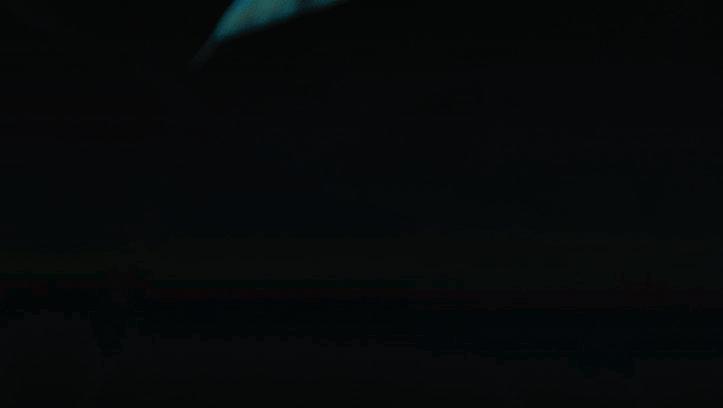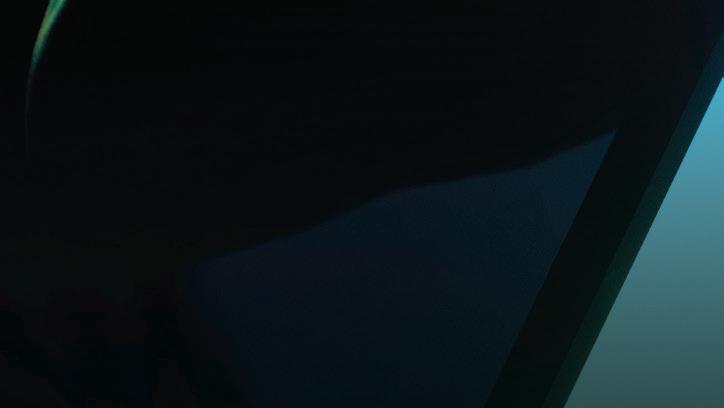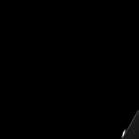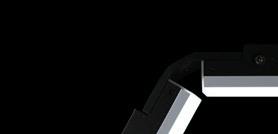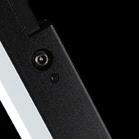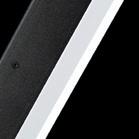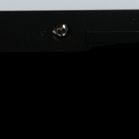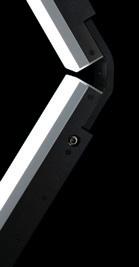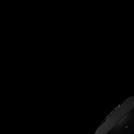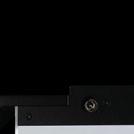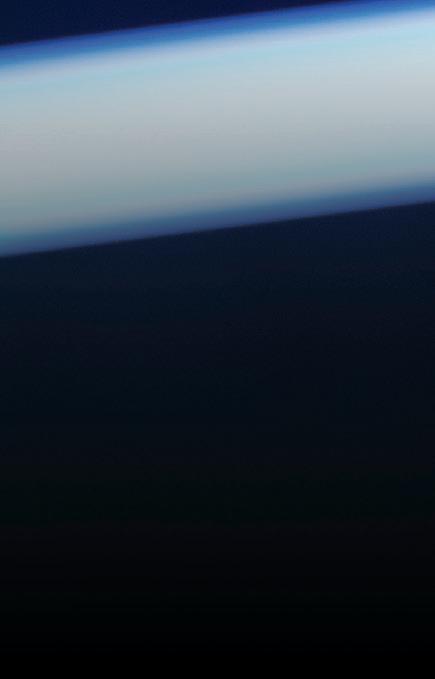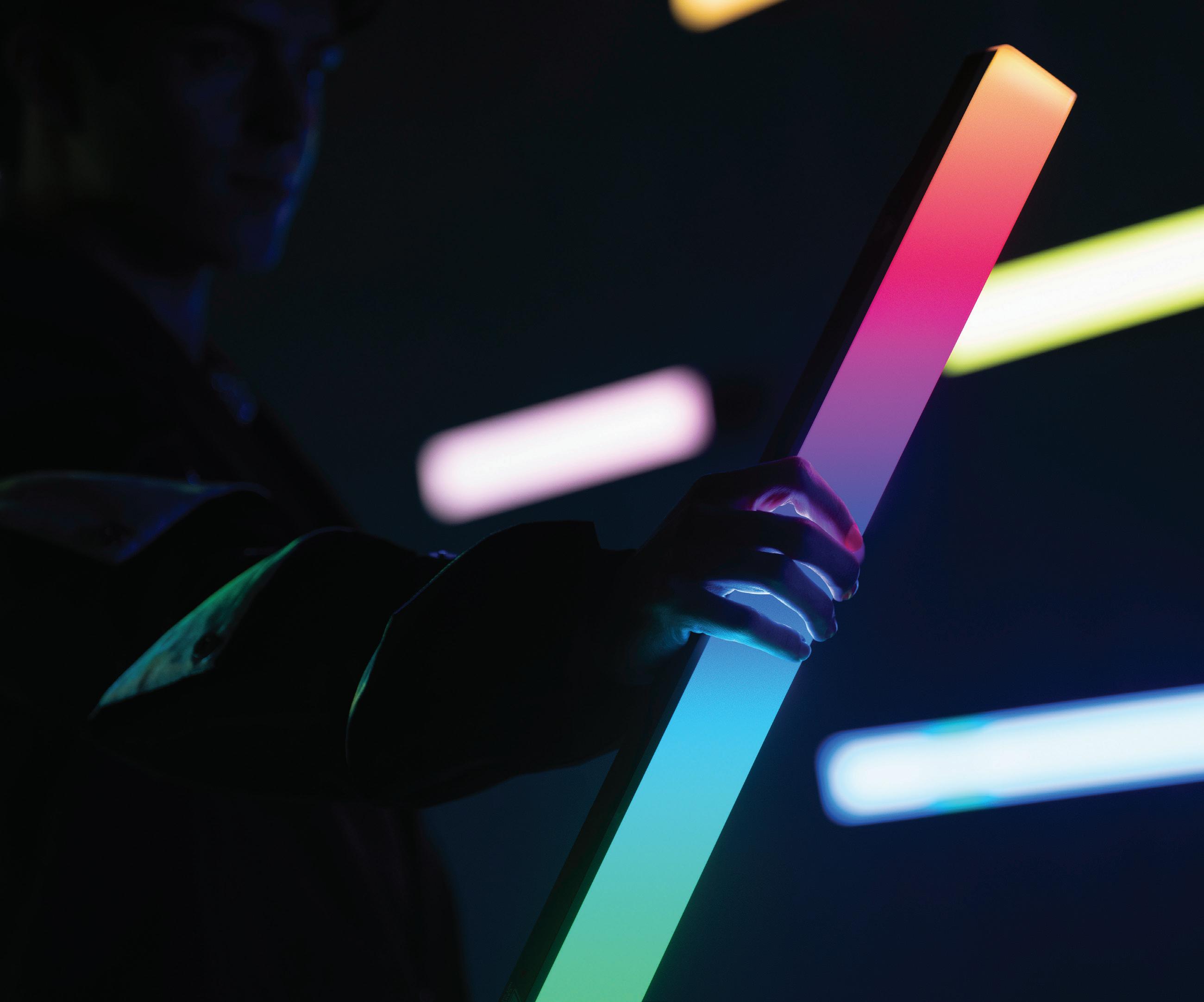CINEMATOGRAPHER

EXPERT GAFFERS SHARE THEIR ROUTES TO THE TOP BRIGHT SPARKS
INSIDE THE DP-GAFFER RELATIONSHIP BETTER TOGETHER
IN FINE STYLE
LIGHTING TIPS AND TECHNIQUES FOR EVERY GENRE




EXPERT GAFFERS SHARE THEIR ROUTES TO THE TOP BRIGHT SPARKS
INSIDE THE DP-GAFFER RELATIONSHIP BETTER TOGETHER
IN FINE STYLE
LIGHTING TIPS AND TECHNIQUES FOR EVERY GENRE


Publisher | STUART WALTERS
+44 (0) 121 200 7820 | stuart.walters@ob-mc.co.uk
Publisher | SAM SKILLER
+44 (0) 121 200 7820 | sam@ob-mc.co.uk
Editor | ZOE MUTTER
+44 (0) 7793 048 749 | zoe@britishcinematographer.co.uk
Design | MARK LAMSDALE
+44 (0) 121 200 7820 | mark.lamsdale@ob-mc.co.uk
Design | MATT HOOD
+44 (0) 121 200 7820 | matt.hood@ob-mc.co.uk
Sales | LIZZY SUTHERST
+44 (0) 7498 876 760 | lizzy@britishcinematographer.co.uk
Sales | KRISHAN PARMAR
+44 (0) 7539 321 345 | krishan@britishcinematographer.co.uk
Digital Editorial Coordinator | TOM WILLIAMS tom@britishcinematographer.co.uk
Journalist | HELEN PARKINSON helen@britishcinematographer.co.uk
Website | PAUL LACEY +44 (0) 121 200 7820 | paul@paullacey.digital
Contributors: Phil Rhodes, Adrian Pennington, Neil Oseman, Robert Shepherd, Trevor Hogg and Julian Mitchell

British Cinematographer is part of LAWS Publishing Ltd. Premier House, 13 St Paul’s Square, Birmingham B3 1RB
We make every effort to ensure the accuracy of all of our articles, but we cannot accept liability for loss or damage arising from the information supplied. The publishers wish to emphasise that the opinions expressed are not representative of Laws Publishing Ltd but the responsibility of the individual contributors.

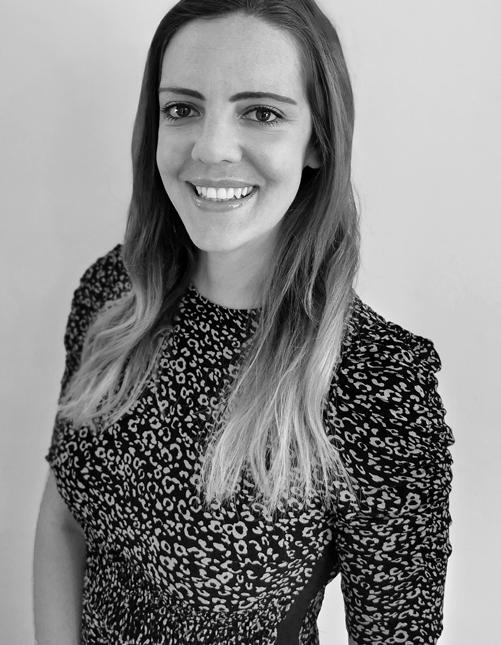
The Focus On cinematic journey continues with a deep dive into another topic at the heart of filmmaking - the wonderful world of lighting. Read on for insight from the guiding lights of the industry, from gaffers extraordinaire including John ‘Biggles’ Higgins, Julian White, and Carolina Schmidtholstein through to DP masters of illumination. As well as sharing their processes and techniques they reveal the technological developments that are impacting their work and continuing to open up the creative possibilities.
As producing the desired look and feel is achieved through a close collaboration between gaffer and DP, we examine what makes some of the filmmaking community’s perfect pairings so successful. You can also hear from gaffers at the top of their game about their career pathway and training, delve into the ever-important topics of safety and sustainability, and learn about the work key associations such as the ICLS (International Cinema Lighting Society) are doing to keep moving the lighting industry forward.
Whether you’re working with natural light, practicals, underwater illumination, taking inspiration from classic techniques or discovering the lighting options when shooting on a virtual stage, this guide is packed with insight to inform and inspire you in your future productions. There are also profiles revealing the fixtures and techniques behind a variety of productions that shine on screen.
The team has some exciting plans in store for future Focus On publications, with the next instalment continuing the virtual production adventure we began with last year’s supplement. As these guides aim to delve deep into key areas of the industry and inspire, educate, and inform, if there are any other topics you would like to see covered, please do get in touch.
Until next time,
Zoe Mutter Editor, British Cinematographer
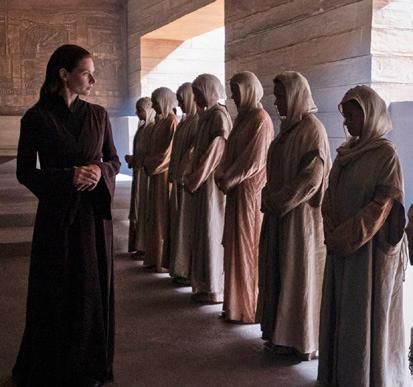




INTRODUCTION
The lighting world has powered ahead in the last 10 years. Greig Fraser ASC ACS and gaffer Jamie Mills reflect on what’s changed
What makes a successful cinematographer-gaffer collaboration? Some of the industry’s leading lights share their stories
set
Top gaffers Carolina Schmidtholstein and John ‘Biggles’ Higgins reveal their creative and technical processes
From versatile LED panels to trendy textiles – find out the must-haves and go-tos of gaffers working across a range of projects and the fixtures to watch
Keeping sets green is an issue the industry has been taking more and more seriously – gaffer Cullum Ross shares his experiences with eco-friendly tech
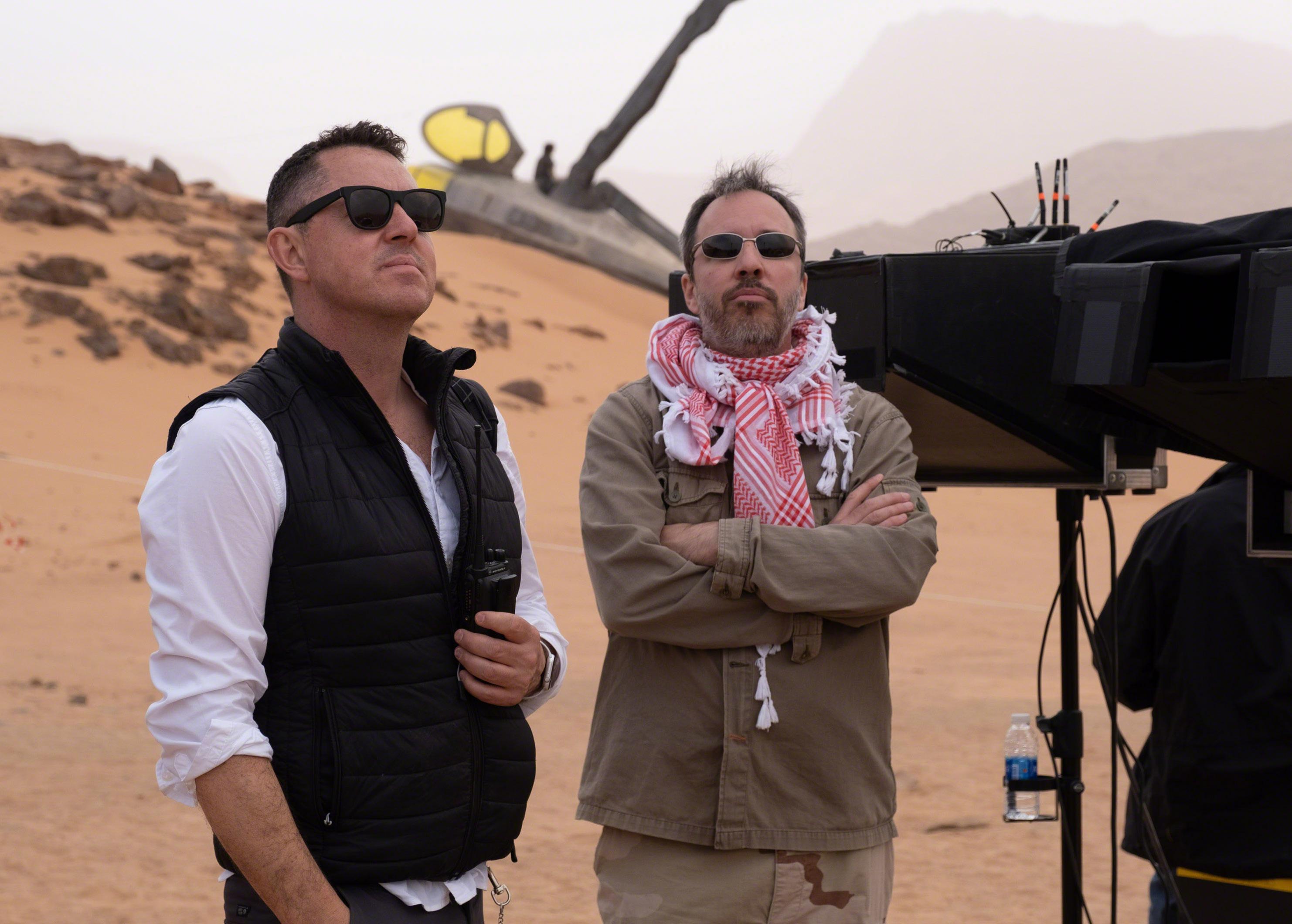
The last decade has seen incredible developments in the field of lighting thanks to the constant pursuit of power and sophistication.
When things move as fast as lighting recently has, it’s easy to feel almost ambushed by change. That’s something people feel keenly in an industry which expects them to maintain an intimate familiarity with the tools. It’s easy to form the impression, though, that the pace of change might at least be slackening slightly –and the resulting comparative calm has almost come as a surprise in itself.
Greig Fraser ASC ACS estimates that it’s taken about a decade to get here. “10 years ago, we were still debating whether a production would be film or digital. Now the default setting is digital, unless you’re making a specific choice. But the lighting technology 10 years ago wasn’t really keeping pace; there were LEDs, but they weren’t colour changeable, and maybe they were lower in colour quality.”
For Fraser, the 2016 release Rogue One: A Star Wars Story was a turning point. “I vowed on that film to do the whole film on LEDs. That may seem like a natural thing right now, but on Rogue One we had to fight hard. We had a great relationship with MBS, who wanted to go along for that ride, and they had to go out and purchase lights for that show. For one scene we had to use HMI for power and punch, and that was eight years ago. Now it’s not even a debate.”
For most of those eight years, the inexorable pursuit of power and sophistication have constantly presented the world with newly designed lights, provoking choices which involve a certain amount of risk. “The way I think about it,” Fraser says, “I use different heads the same way we used different film stocks. Back in the day we’d choose a stock depending on how we wanted it to be. Now we use different heads. The SkyPanel was one of the first lights adopted en masse. Digital Sputnik and Creamsource Vortexes have been my go-to lights.”
What makes the choice complicated is the sheer variability of LEDs. Fresnels, and the HMI or tungsten bulbs which drive them, are at least somewhat consistent on both a technical and operational level. LEDs are more – to put it kindly – variegated. Working alongside gaffer Jamie Mills on films including both Dunes, The Batman, Rogue One and Zero Dark Thirty, Fraser takes care to make informed choices. “We’re always doing blind tests to make sure I’m believing what I’m believing for the right reasons. When you don’t have the time, it’s faster and more economical to fall back on what you know, but these blind comparisons don’t take long. You just have to shoot a colour chart, grey card, faces, you rank them... it’s a very simple thing to do.”
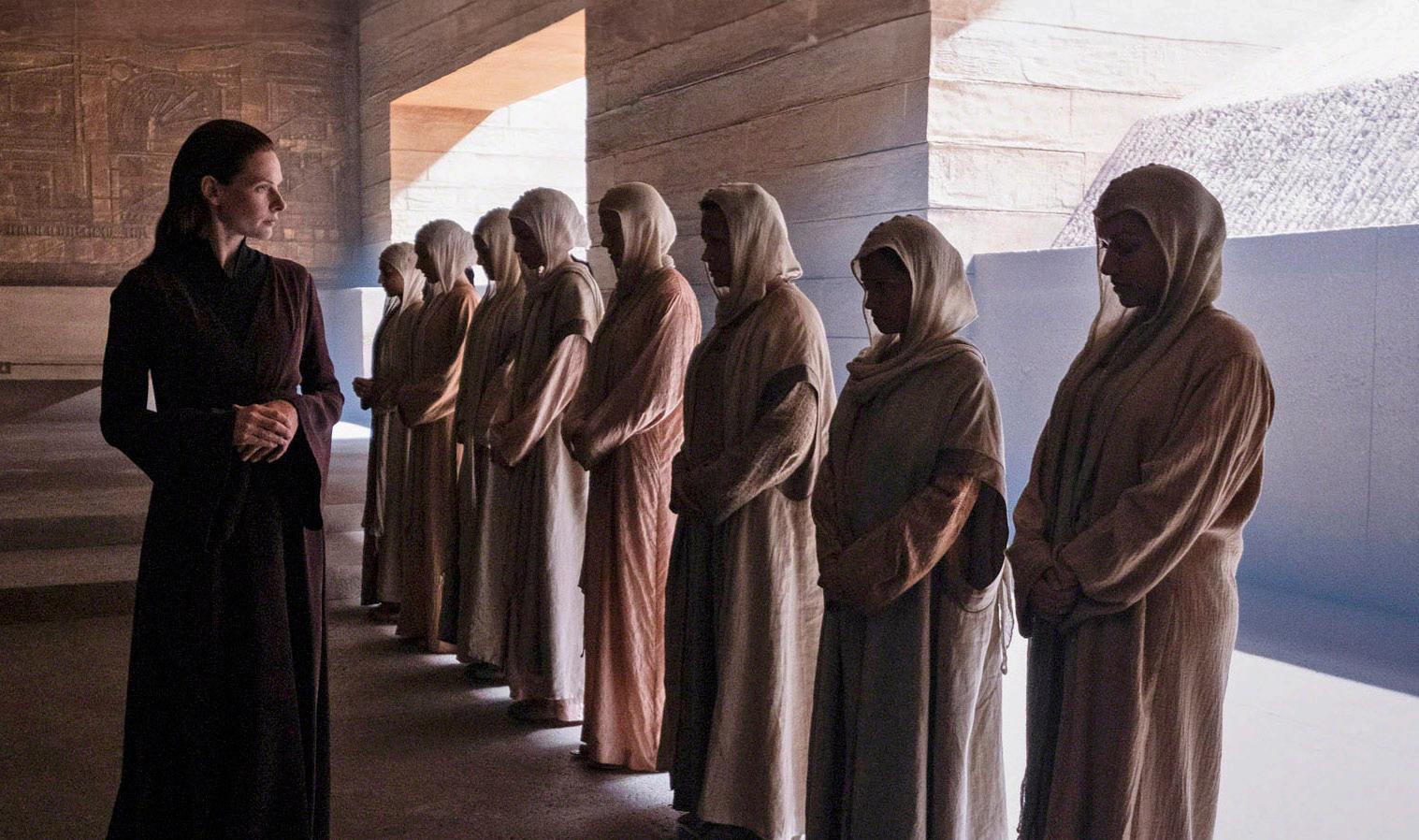

The efficiency gains were so prominent for so long that other benefits could sometimes be overlooked, as Fraser reflects. “If we get a core package of lights they can do every set. They can provide daylight, skylight, ambient fill, tungsten fill. They can produce lighting on a blue or green screen. Back in the day you’d get Kino Flos with green tubes and carry a whole ton of those just for the green screen. Now, you can carry fewer heads. I’ve been excited to see what’s coming out recently - the Kino Mimik or Sumolight Sumomax.”

If there’s a caveat to all these practical conveniences, it’s that certain artistic conveniences have perhaps suffered some stigma. “The danger is that it’s going to become a bit less politically correct to pull out some big tungsten lights in the future,” Fraser admits. Even his own much-feted work on The Batman, widely described as embracing an appropriately gothic sort of classical grit, was “primarily Digital Sputnik, and Creamsource Skys. I don’t think we use any other LEDs. We only used tungsten on one scene in the mayor’s memorial where the car comes in and crashes. We used tungsten with blue gel to create that daylight because we couldn’t get enough LED.”

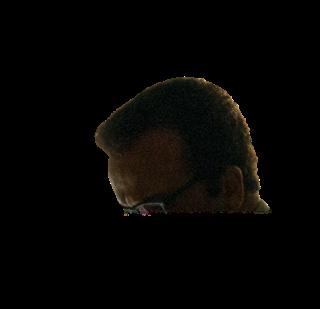

Issues of sheer scale arise frequently in any discussion of modern lighting. Jamie Mills, Fraser’s frequent gaffer, puts it simply. “You’re constantly after a brighter LED, a harder LED which is still not there yet. There are certain things you can’t get. You can’t get the output. Until they invent the 18K-equivalent LED I don’t think you’re going to be able to do certain things in LED. If you want a huge sun source you’re still as good doing it with four Dinos because of the quality that gives you.”
Like Fraser, Mills’ greatest enthusiasm is reserved for the ancillary benefits. “We’re in the best place we’ve ever been with colour control and battery power. Everything going through the desk has progressed massively over the last five to eight years. The speed of filming is tenfold faster than it was 10 years ago, so you probably get less time to light, you need to be prepared a lot more for turning around, having lights pre-rigged to allow you to do that. I think it would be fair to say you’re afforded less time, but technology has helped massively.”
That’s a widely held view, and one which we’ll hear again, though the implications aren’t always straightforward. Mills warns particularly against any assumption that LED is faster to rig. “With an LED, you still have to
“WHEN YOU DON’T HAVE THE TIME, IT’S FASTER AND MORE ECONOMICAL TO FALL BACK ON WHAT YOU KNOW, BUT THESE BLIND COMPARISONS DON’T TAKE LONG. YOU JUST HAVE TO SHOOT A COLOUR CHART, GREY CARD, FACES, YOU RANK THEM... IT’S A VERY SIMPLE THING TO DO.”
GREIG FRASER ASC ACS ON MAKING INFORMED CHOICES
run power to it and in most cases you have to run DMX to it. You’re running two cables instead of one, and you still need distro. Some of the dimmer packs you don’t need any more, but I think it’s a bit of myth. You want maximum control and maximum time efficiency. It’s a complicated equation, but the cost per day for shooting is huge. Saving 10 minutes here, half an hour here, it soon equates to more shooting time.”
It’s perhaps no surprise that the technology Mills credits with saving the most time is not a light; it’s a way to power that light. “The newest thing that has massively changed how I do things on the floor is battery technology. Rather than have to worry about running feeds into certain places, I just put a 2kW silent battery pack in, and power the light that way. That’s the most recent evolution of our industry – the revolution of battery packs and how they last. They are an invaluable part of my kit. I use them every day.”
Almost inevitably, though, the conversation returns to sheer scale. “On a show we did years ago, we were the first to use the new Creamsource Vortex 8,” Mills recalls. “We clamped lamps together to make one giant Creamsource. There were 64 lights, and each has eight pixels, so we ended up with a light that had 512 pixels. It was huge – it had to go on the front of a telehandler – but it was a great source of light. It was less than a 100K SoftSun but not massively less, and with full colour control, full dimming control. You could use the pixels as a video screen if you need to!”
So recent developments have made things quicker and easier, though Mills confirms there’s little doubt what crews are still pining for. “Super powerful hard LED lights. I mean I would love something that’s an 18K, or something that’s a 10K. That’s still not there. I don’t think anyone’s brought out anything like that.” n

Litepanels’ Gemini Hard panels push up the power to help gaffers make the day.
It’s easy to think of big changes in lighting technology as a recent phenomenon, but gaffer Michael McDermott has spent 45 years working on productions including Quantum of Solace and Game of Thrones, and his experience tells a different story. “Up until about 1980, we didn’t really use HMIs. Then we started using them, maybe with dichroic filters… in the mid-eighties there were six, 12 and then we got the 18ks. In the ‘90s and 2000s they were introducing SoftSuns, Molebeams, all that sort of stuff. And now it’s gone on to LED units.”
McDermott pinpoints the most recent zeitgeist to “a job with Colin Watkinson ASC BSC four or five years ago. Up until then, I’d always want a half Wendy in the back in case we needed it. He allowed me to carry it, but we never used it. It was the first time I realised that tungsten and HMI weren’t the way forward.” LED lights, it seems, had become powerful enough to build into Wendy-style arrays – though it’s their flexibility, as much as their sheer power, which McDermott finds indispensable. “Any job now, you can’t work without RGB and wireless. You just can’t do it. It’s all about making the day.”
Sometimes, the tools used to do that are familiar, although the sheer scale of an average McDermott job might not be so everyday. One recent setup involved 40 Litepanels Gemini 1x1 Hard panels on a single set. “They’re only a foot square, but they have every conceivable accessory,” he continues. “We’ve got a honeycomb that goes in front of it, a lovely light control device. There’s a little bubble diffuser, or a softbox with inner and outer baffles. We have pole-operated ones, so on set we don’t have to barge through with ladders. You might be running DMX or going wireless, but there’s no gel changes, there’s no scrims going in. It’s instant - dim it down, make it greener, take the green out, make it 3200k, 5600k, knock it back 10 percent… Panalux have a load of these and they’re fantastic.”
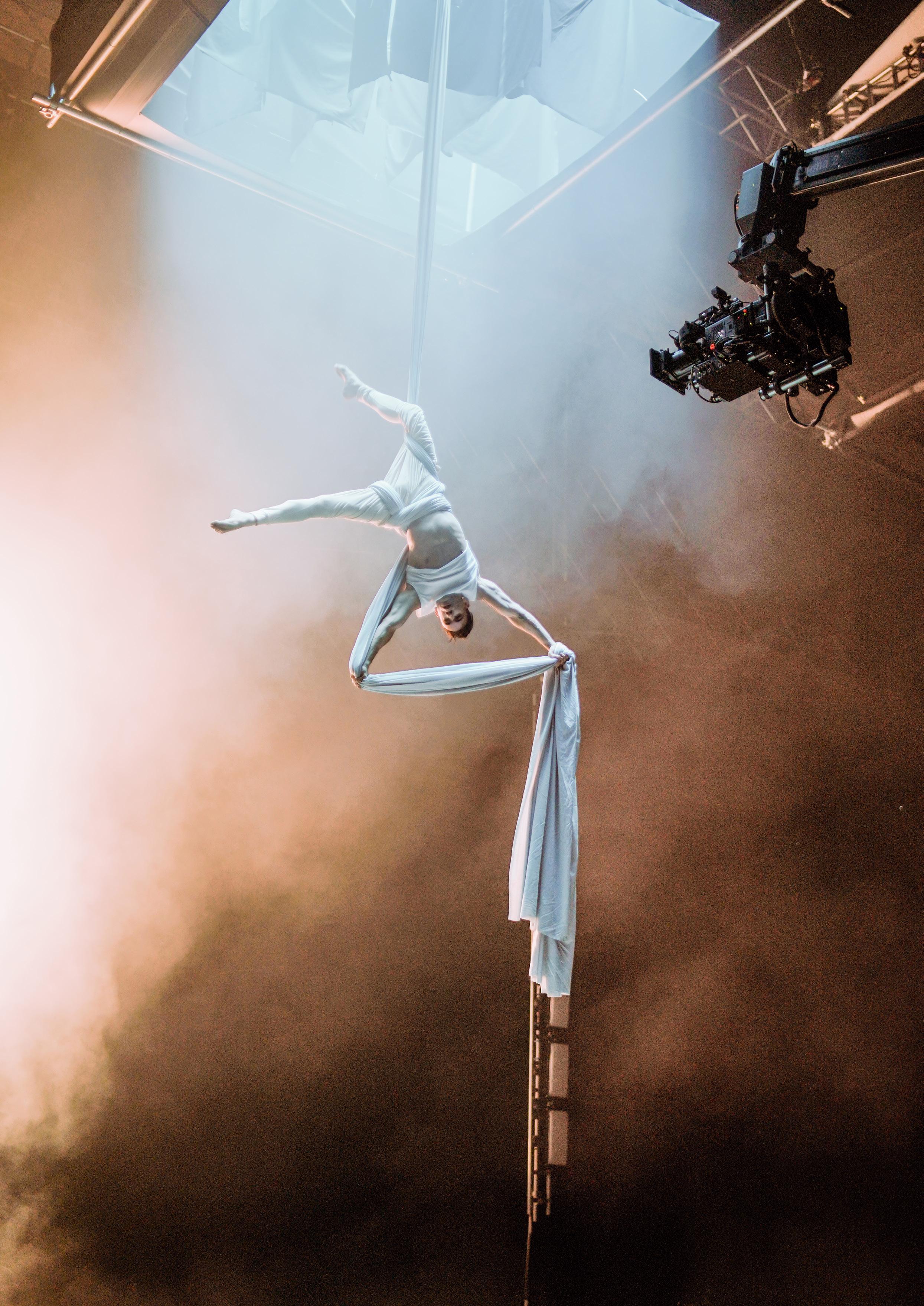
Michael Herbert is head of product management for lighting at Litepanels’ owner Videndum, and points out all that controllability arises from optical design as much as the electronics.
Even so, while productions lit almost entirely with LED are now everyday, nobody is in any doubt about what it’ll take to completely replace the traditional technologies which gaffers like McDermott know so well. LED Fresnels are perpetually at the front of a near-universal drive to keep pushing power levels upward and that’s something which demands increasingly lateral thinking. Litepanels’ newest fixture is the Gemini 2x1 Hard, which is claimed to be the brightest and lightest panel in its class. “A Gemini 2x1 is quite a wide fixture,” Herbert points out. “Each LED goes onto a heat sink at the back. You can put a fan on the back to blow over it and keep the whole thing cool. It’s powerful, but dissipating the heat is not too complex, so you can make it very, very bright.”
“With a Fresnel,” Herbert confirms, “once you start getting up to the high-power stuff, you have a big [LED array], all the LEDs are in one central point and you’re going to want to pull all that heat away into the back of the fixture. It’s much harder to dissipate over that small area and the housings start getting bigger. People need to figure out the thermal and electrical difficulties of really high-power LEDs – but the market’s going to keep demanding it.”

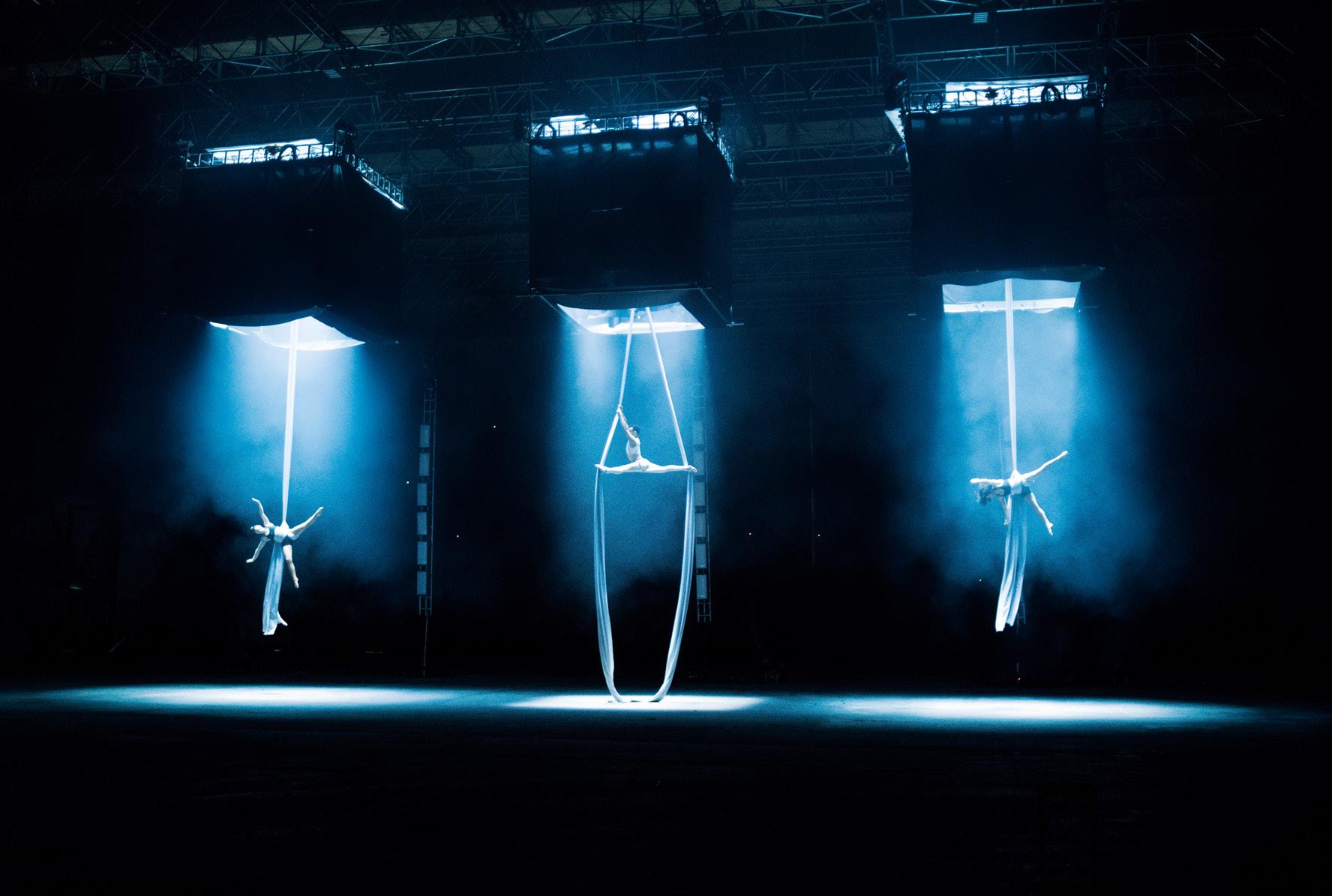
As that market matures, it becomes clearer that effectively generating photons is only part of the job. Herbert points out that efficiency arises not only from the LEDs themselves, but also the optical components around them. “What the Geminis do really well is to break out the LEDs individually into, red, green, blue, tungsten and daylight. Each of them has a tiny lens on the front of it, and because they’re broken out individually you can get that lens to sit directly over the LED. If you think an LED natively produces close to 180-degree beam angle, you can capture every bit of light and push it forward. Optimising the lensing technology is what enabled us to create the brightest 2x1 panel with a relatively low power draw that helps to reduce stress on the LEDs.”
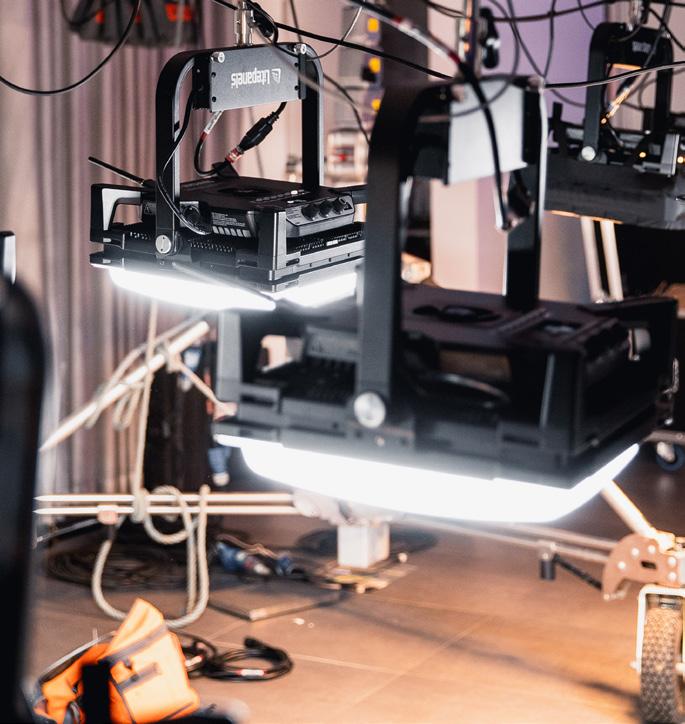
Controllable, flexible lights with Fresnel lenses create “very different technical considerations,” as Herbert puts it. “It’s around the character of the light for the Fresnels in particular. Because they have that glass lens, and because of the LED arrays they use, the overriding comment we get about Litepanels Studio X Fresnels range is how impressed people are with how the light can be cut properly, in the way a tungsten light used to cut. You get that defined black shadow which can be very precise.”
Simultaneous demands for high power alongside colour quality that matches legacy technologies can, as Herbert says, create dilemmas. “There is this sort of inversely relational trade-off between colour quality and output. The market keeps pushing us: they
want more output, but they want more colour quality, too. If you look at human skin, you have all these blood vessels just below the surface of the skin. Traditional tungsten light handles red well and we’ve worked very hard to replicate that colour space with Litepanels LEDs. That’s why people don’t look washed out or green or ghoulish like they do under fixtures that don’t have that red wavelength quality.”
That compromise represents almost a microcosm of LED engineering. Herbert remembers “a conversation with Jamie Cairney BSC when he was doing seasons one and two of Sex Education, on Venice, with Gemini 2x1s all over it. I asked why. He’d done a camera test and the Geminis just looked better on camera, particularly with the Venice. He talked about the skin tones and we started getting into why it was. You can see when it’s not there, and it’s all these tiny things that contribute to the image which makes it so fascinating. I am never going to tell any cinematographer how to light a set. That’s not my job at all. But we are committed to getting as close as possible to replicating the qualities that you see with a tungsten lamp.”
Litepanels Gemini Hards represent a versatile addition to a lighting package with all the benefits of LED in lightweight, high output panels that don’t compromise colour quality.
McDermott’s thoughts, meanwhile, return to the practicalities of being ready for anything at a moment’s notice. That’s something familiar to everyone from the



creating setups backed by dozens of Geminis.
“You still have to have all the grip gear, the 12-by-12s, the bluescreens. We’ve still got a couple of 18ks on board, and you still have all your accessories. The softboxes, four-by-four frames in front of each lamp, egg crates on the lamps, on the frames. The cinematographer can ask for anything at any time.”
Lighting technique and technology, in the end, are increasingly expected to be equal of a production workload which imposes much the same expectations on both the large and small screens. “On feature films you have a bit of time. For TV, it’s not like it used to be,” McDermott concludes. “We’ve been out on location for a while and that cameraman has asked for all sorts of things. We haven’t let him down once. The dividend is making the day.” n


The DP/gaffer relationship is one of the most crucial yet arguably one of the least recognised collaborations in filmmaking. More than an expert technician, the gaffer helps the DP to turn the director’s vision into reality.
“They are a partner in crime,” says Greig Fraser ASC ACS, who worked with gaffer Perry Evans on projects including Snow White and the Huntsman, Zero Dark Thirty and Rogue One: A Star Wars Story and with Jamie Mills on Mary Magdalene, The Batman and Dune and Dune: Part 2
“Whilst I have very definite ideas when it comes to lighting, I’m not always an expert in how to achieve them. I need someone who I can bounce ideas off, who is more
organised than me and someone who keeps up to speed on, for example, the latest dimmer desks and software. It’s not just where you put a light, it’s how many lights, will the rental house deliver, does it work with the budget, are they flicker free at high speed, or waterproof? The gaffer has to decipher all these requirements.
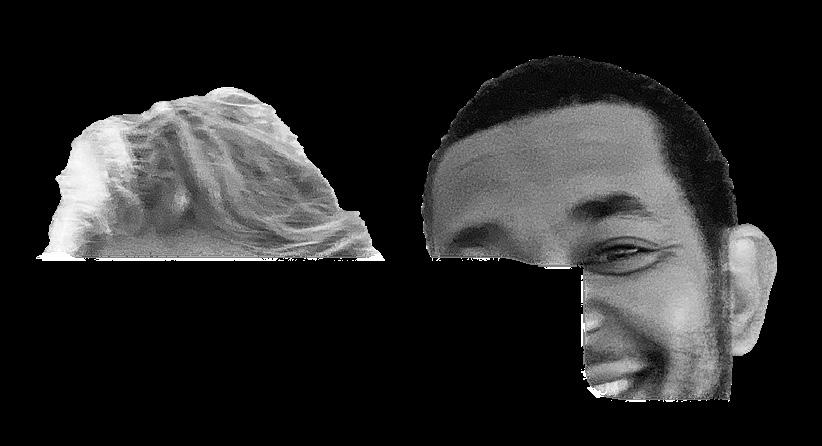
“Lighting technology is much more complicated now that every fixture has got computers onboard with the power to change colour, strobe or synch with shadows or work in a virtual lighting environment.

I also want to play with new technology, so I appreciate gaffers who are keen on pushing the limits of the tech and conceiving unconventional solutions.”
The DP recalls telling Evans that he wanted to light Rogue One entirely using RGB LED. “He didn’t even flinch, but this was the first all-LED show. The ‘can-do’ attitude of your gaffer is important to a good relationship.”
Mills got to know Fraser as a spark under Evans. “Ultimately, my job is to make the DP’s job easier,” he says. “I take as much of the responsibility for lighting off their shoulders so they can be comfortable spending more time with the director. Learning the script is key too; knowing it inside out gives you a much better understanding of the vision and look of the film.”
David Procter BSC’s approach to lighting is to work collaboratively from the outset. “I like to discuss light quality and technical requirements rather than micromanaging fixtures and textiles. This way I can see what a gaffer brings to the table and be open to new ideas and techniques. As cinematographers, I feel we are on a journey of perpetual learning. On set, I favour a gaffer who stays close to me, calmly managing the set and delegating to their team.”
He has enjoyed a 15-year collaboration with Sol Saihati and commends the gaffer’s “unwaveringly calm temperament” as being exactly what he looks for in all his crew.
“Gaffers who don’t look at monitors probably won’t be seeing me again,” he adds. “I love collaborators, not mere technicians.”
Rufai Ajala has worked as both gaffer and a DP on shorts and commercials and finds themselves in the unusual position of mentoring up-and-coming DPs as their gaffer. As DP they usually work with gaffer Kristóf Szentgyörgyváry and the young DPs they have worked with include James Dove, Aman K. Sahota and Natalja Safronova.
Ajala says, “After a few years as DP I found myself in a position where I wanted to support new and emerging cinematographers. They might describe the lighting aesthetic they wanted but perhaps didn’t have the knowledge to translate that into a specific setup. I felt that I had the knowledge to help them do that.”
Julian White has gaffed for Martin Ruhe ASC on films including The American and The Midnight Sky. “I love working with Martin,” he says. “We have an understanding
that after discussions I can just light, and he will say what he likes and doesn’t. It’s more a process of reduction and editing. It tends to be more about mood and colour not so much about the technology.”
White has also worked with Haris Zambarloukos BSC GSC (Cinderella, Murder on the Orient Express) and shot commercials with Fraser and Hoyte van Hoytema ASC FSF NSC.
“If you provide a service and/or a friendship that is invaluable to DPs you will become their right-hand person,” White says. “Working in film is all about shorthand. As I say to my team, ‘You have to try and think like me because I am thinking like the DP, and they are thinking like the director.’ It’s a pyramid that is pushing downwards and needs to be supported upwards.”
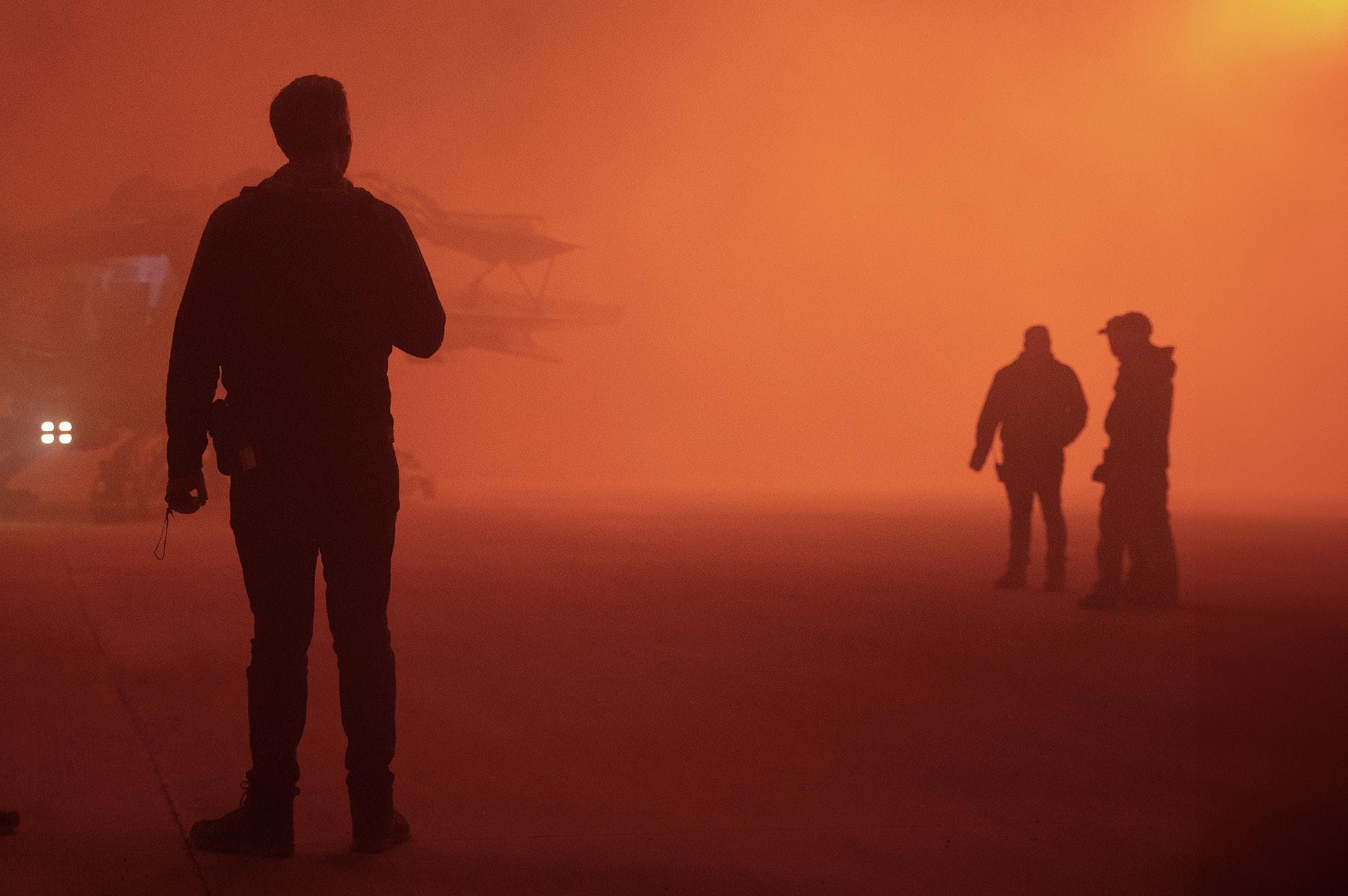
As the years pass, professional relationships become friendships and, as comradery grows, shorthand develops from shared experiences.
“We mutually learn the nuances of our regular collaborators,” says Procter. “Aside from aligned sensibility, it’s a true asset having a gaffer who’s anticipating possible requirements based on previous collaborations, be it a last-minute catchlight or additional negative fill. There’s been countless times where Sol has pre-empted something I may have missed.”
Mills says of his relationship with Fraser, “I understand his lighting style and how he likes to work. It’s about staying one step ahead so that from day one I know what he needs before he asks for it. I am already in his head, if you like.”
A bond naturally develops among a film crew when they spend weeks apart from their families on location, which is one reason why DPs like to work with the same teams.
Mills spent nine months away from his young family in Budapest shooting Dune and another eight months away on the sequel. “It’s tough, especially when you mostly see them growing up on FaceTime, but it’s part and parcel of the job.”
There’s no getting around the pressures of the job either. “There’s a trust that inevitably develops with the more situations that you live through together,” says White. “All relationships are based on a call and response and if somebody is not appreciative of what you do, it doesn’t always work out. Some DPs and gaffers shout at each other but they still work together. It’s a bipartisan relationship. You have to respect both sides.”
Trevor Forrest describes his relationship with gaffer Justin Dickson, with whom he has worked on I Am the Night, Manhunt and Genius: MLK/X, as a “brotherhood”.
“Justin comes with his own ideas. We definitely butt heads, but the friendship is always there. We’re always trying to pull and tease out what is in front of us in the best way.”
Dickson says, “What I love about Trevor is he cares about merging the ideas of the collaborators that are around him as opposed to imposing a singular vision on others. When you cut off everybody from the creative process you box yourself into a corner.”
When it came to shooting MLK/X about two of America’s iconic figures, Forrest
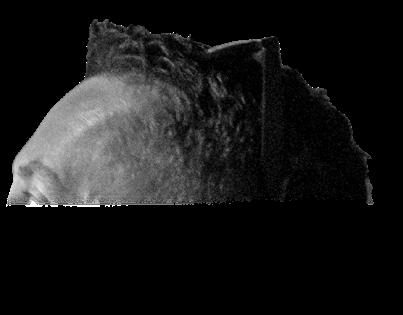
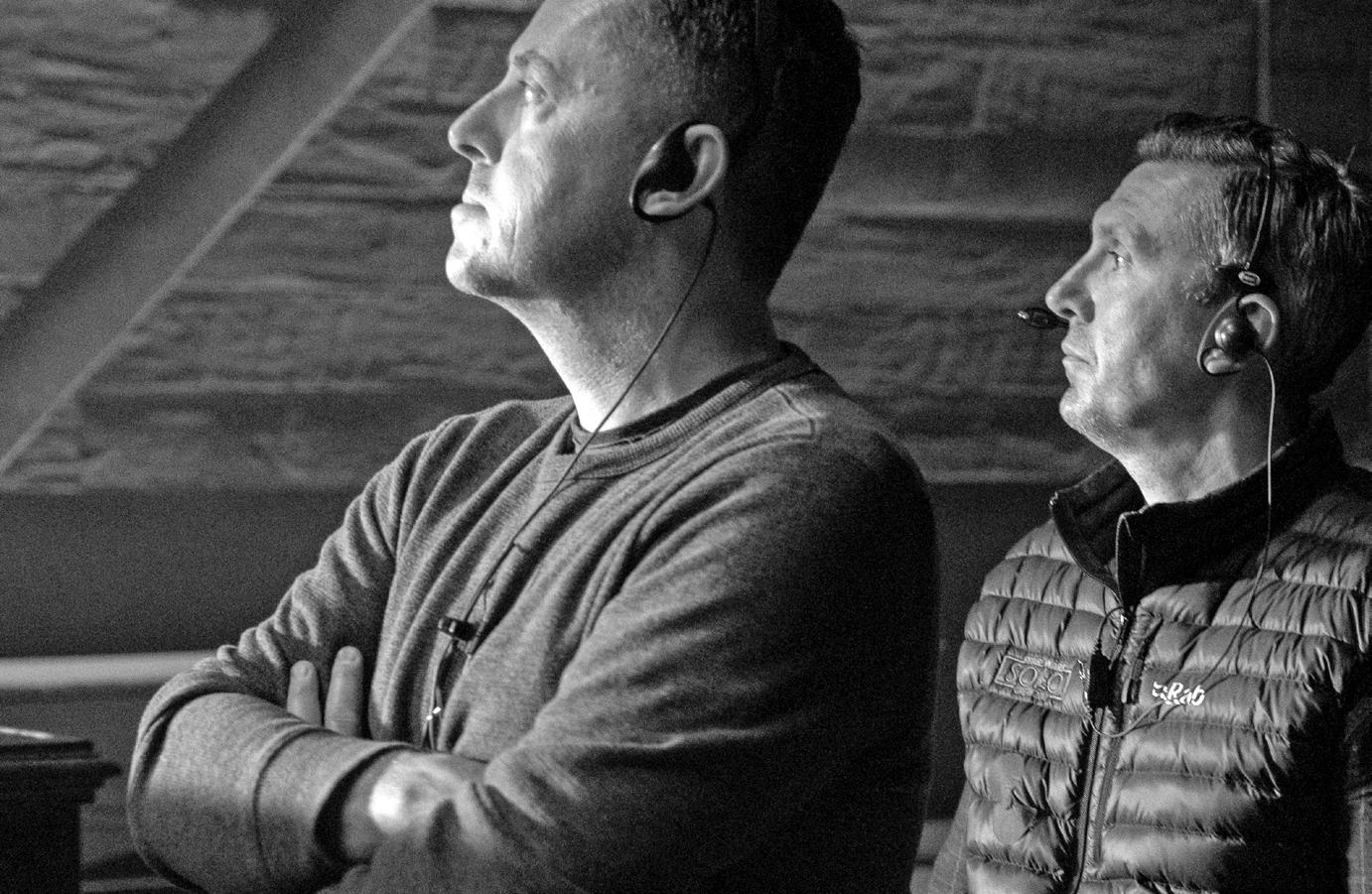
says his colleague’s insight into the Black community was invaluable.
“I’m a white guy from Wells-next-theSea who only brings privilege. Justin (whose uncle marched with Luther King) had grown up in the Baptist South. When you bring someone on board with that depth of subject matter there will be a fizzing of energy.”
It wasn’t so much the technical finetuning to achieve accuracy to period and character when lighting black skin tones so much as Dickson’s lived understanding of story that was valuable to Forrest.
“I was able to call my mama up to ask what did this [scene] feel like. Trevor is expert at finding angles and lighting but with some stories it is less about seeing the characters or scene so much as about feeling them. That feeling is what we are trying to translate.” n

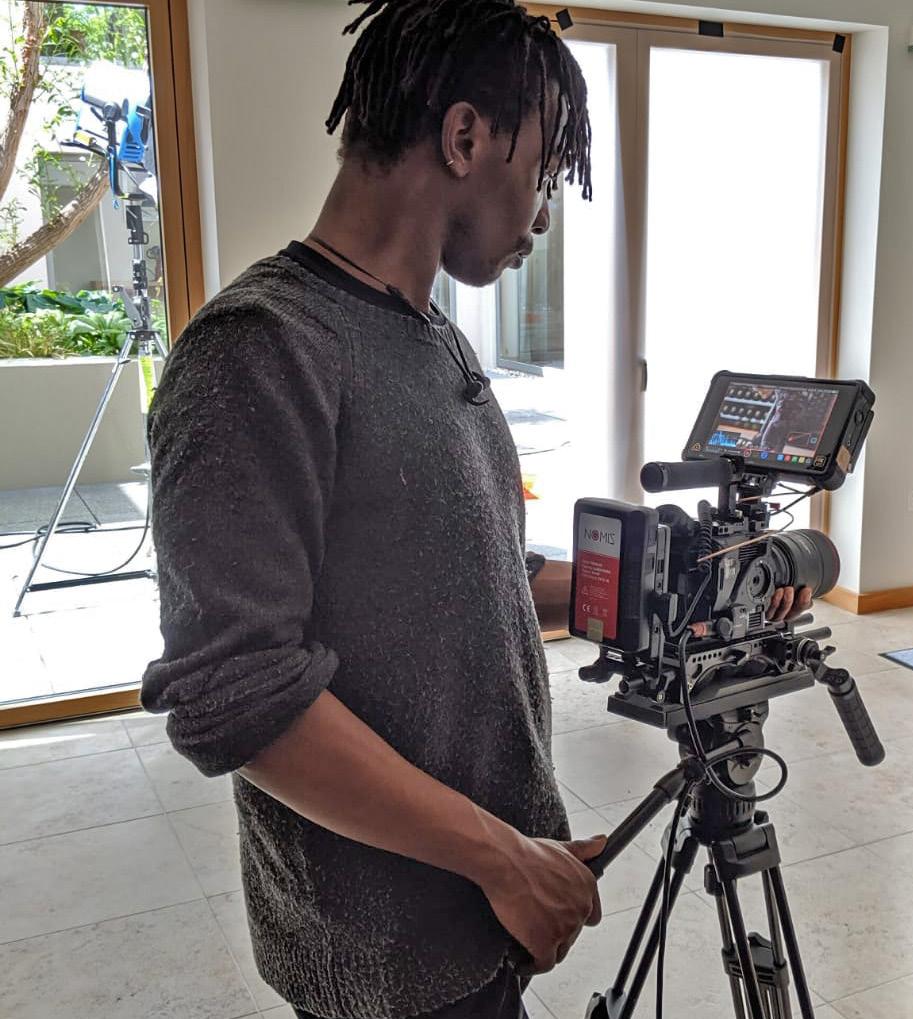
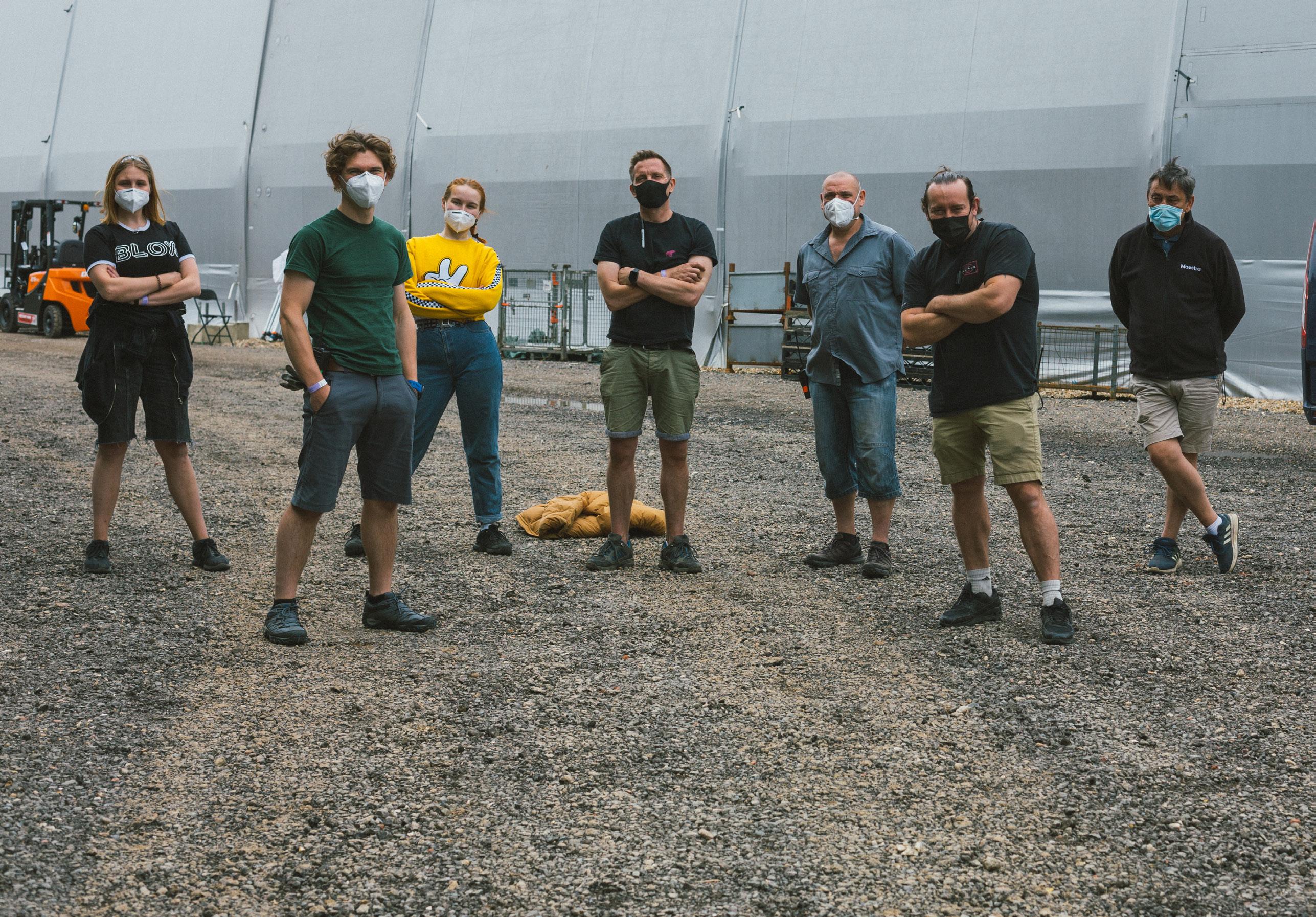
There remains no set route into film and TV production, especially in the craft grades. Looked at one way that means you can enter the industry from pretty much any angle, but those wanting to build a career in lighting will find many barriers in their path.

“There are lots of people who love movie making but can’t get in because they don’t know the right people,” says gaffer Julian White (The Midnight Sky). “Most people get into the industry because their mates or member of family are doing it.”
Chief LX Cullum Ross agrees, “There’s a lot of nepotism. There always appear to be opportunities in other department and fewer in lighting.”
Jamie Mills started off at Lee Lighting in 1993 as a 17-year-old, one of the first kids to get a job there without having any relations “in the game”.
“I stumbled into the industry by fluke,” he says. “I was just in the right place at the right time. I’d always loved film, just never thought about it as a career.”
He started out wanting to be a regular domestic electrician and attended an open day at a local college that was doing aptitude tests. He happened to come top of the class. Talent scouts from Lees were watching and hired him as an apprentice on the spot.
“After finishing the apprenticeship at Lees, I was sent to The Bill as a floor electrician. It was a great training ground. You learnt how to behave around camera, how to set flags, how to position lamps and the reason you were doing it. By the time I’d left four years later I was gaffering the show.”
John ‘Biggles’ Higgins trained as an electrician in the 1970s and then went into further education, eventually ending up as an engineer on oil platforms in the North Sea.
“With accommodation being in short supply on the rigs, we were sent home a lot on leave while another engineering crew took over. In that space between shifts I got a job in a small film studio in London, and I liked the workshop so much I stayed and never went back to the oil industry.”
Sir Roger Deakins CBE ASC BSC gave Biggles his big break by inviting him to light 1984 – the first of 70+ credits including 1917 and Skyfall.
White had an even more circuitous route to becoming a gaffer. He studied video performance in Liverpool and worked in the prop department on local soap Brookside. He left and rejoined the industry on a few occasions, never quite sure of where his more artistic sensibilities would fit in. It was in his thirties when DP Roger Eaton asked him to gaffer for a commercial for the charity Shelter.
“It was the first time anyone had asked me what I thought of the frame, the composition, the look and feel. I also got paid more in one night than as a waiter.”
Soon afterward he was part of the crew lighting hit TV series Band of Brothers, created by Steven Spielberg, and never looked back.
What they each have in common is a lack of career advice and progress gained by learning on the job. Mills advises spending a year at a lighting company learning “thousands of bits of kit” as the most valuable use of one’s time when starting out.
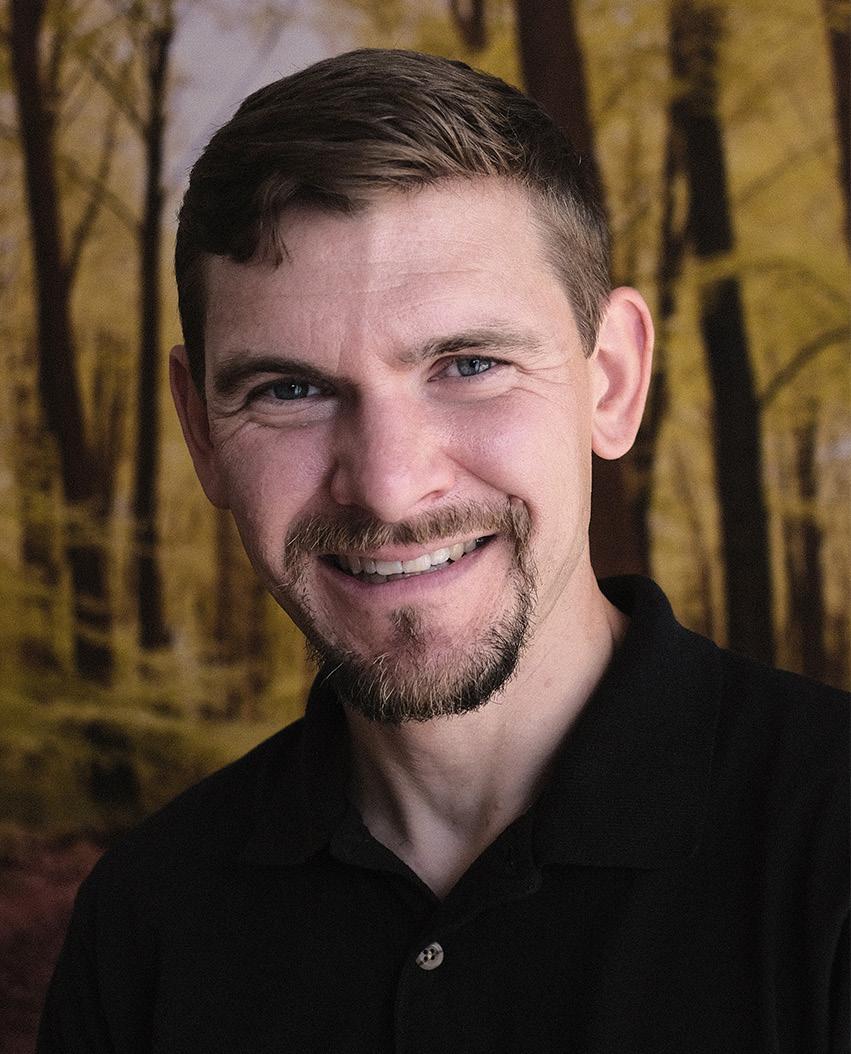
“No knowledge is a waste of time,” says Biggles. “Everything you learn has to be an advantage to you at some point.”
That mantra is repeated by the experienced hands talking to British Cinematographer. There’s no substitute for practical experience with, well, practicals, but it can help to have the basics of electrical health and safety under your belt.
“I get a lot of CVs from people wanting to come into the lighting department with degrees in filmmaking and photography,” Biggles says. “But, before they can aspire to go further in the lighting department, they need a very good grounding in electrical engineering. Often that means spending another three years training and learning about engineering and electricity. They need to realise they will be dealing with a very dangerous product.”
Ross steers newcomers toward attaining City & Guilds Level 2/3 (courses can last up to two years but have lifelong value) and BS7909, the standard on how to design and manage temporary electrical systems. Any number of specialist courses including for moving lights, automation control, lighting data networks can be added on top.
“Even with this, people should go get some experience with a local crew or lighting rental house. Demonstrate that you have the motivation, aptitude and staying power.”
Qualifying as an electrician will give you essential health and safety awareness and provide the basics for managing power and plugging in lights won’t necessarily make you better at lighting.
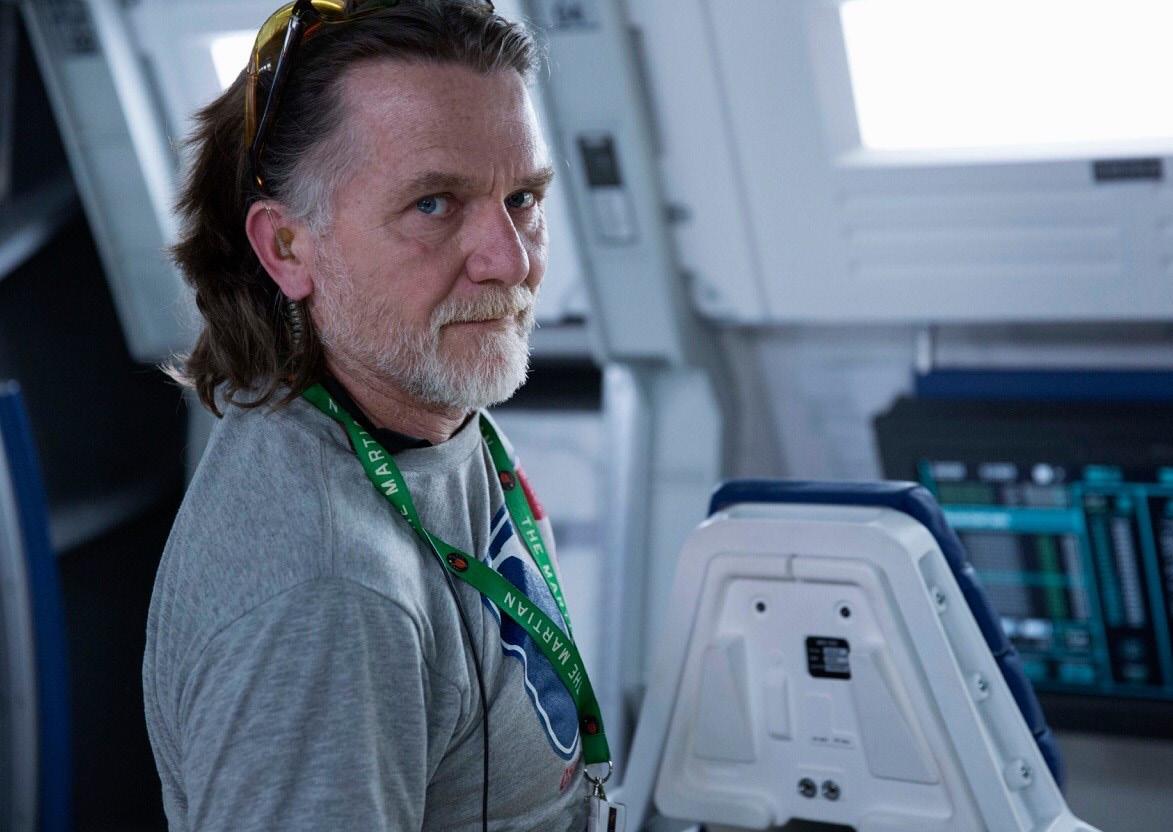
“The least you can do is be a facilitator and at best a creative collaborator too,” comments

On bigger shows the gaffer will orchestrate where the DP wants certain lights to be positioned, but the actual fixing of the fixture is passed to the rigging gaffer.
“Being a gaffer is a bit like being a racing car driver,” White says. “You don’t need to know how to fix the car. You need to know how to drive it. You can be qualified to the hilt and have no real understanding about why you are doing it.
do, he’d send me. If he had to step away from the floor, he›d stick me up front. And if there was a splinter unit going, he’d ask me to do it.”
White calls for more mentorship and careers planning, even to explain to entrants what the essence of the job is and what steps you would ideally take to get up the ladder.
Ross says all his experience comes “from working with different people in different countries on different types of production” but he has made it his mission to help mentor the next generation.
As one of a handful of ScreenSkills mentors, his role “is to help explain the industry, dispel some myths, explain the structure of a dept and potential career progression and qualifications.”
There are further steps to formalise the process. The ScreenSkills electrical trainee programme, for example, offers funding support to placements every year on productions with the aim of translating the opportunity into further employment. This is supported by the High-end TV Skills Fund, a pot of industry money that has only recently been tapped by lighting departments.
“The greatest thing we can do for the next generation is on-the-job training, but funding is a problem,” says Ross, who tries to unlock access to training opportunities on his team when he works with streamers like Netflix.
“PEOPLE SHOULD GO GET SOME EXPERIENCE WITH A LOCAL CREW OR LIGHTING RENTAL HOUSE. DEMONSTRATE THAT YOU HAVE THE MOTIVATION, APTITUDE AND STAYING POWER.”
CHIEF LX CULLUM ROSS
“If you’re good at managing people and practical logistics of organising crew, kit and positioning lights you can progress from spark to best boy, to gaffer,” says White. “However, you can be the best electrician in the world and still be useless as a gaffer.
“All DPs will appreciate their gaffer making their process as easy as possible so they can concentrate on talking with their director and thinking creatively. The least you can do is be a facilitator and at best a creative collaborator too.”
“You may know how to get the wiring right but lack empathy with the DP about diffusion and colour. The problem is finding the connective tissue between the technical and the artistic.”
If you’re lucky the aspiring gaffer will be taken under the wing of a mentor. Ross credits a couple of mentors including lighting cameraman Andy Bell - “a brilliant people person who taught me how to light for the screen, how to look after kit, and to travel smart.”
Mills worked for 16 years with Perry Evans beginning on Tomb Raider (2001). “Perry pushed me out as a gaffer. If there were any reshoots or additional photography he couldn’t
“You have to make the sales pitch to the production.
Sometimes that works and, even if it is a box-ticking exercise, I don’t mind as long as we get new blood into the industry.”
He adds, “With Bectu Lighting Technicians and other industry organisations, we are trying to reintroduce a training scheme [for productions]. It’s a work in progress but the idea is to formalise what the trainee will be paid, who they will shadow, and to agree with the production a structured set of experiences over the duration of production so that the trainee can walk away with an official ‘passport’ of what they’ve learned. By having an industry specific training, qualification and a simple verification process, crew and engagers will have confidence that qualified crew will be able to identify, and reduce risks, making film and TV sets even safer and more efficient.” n

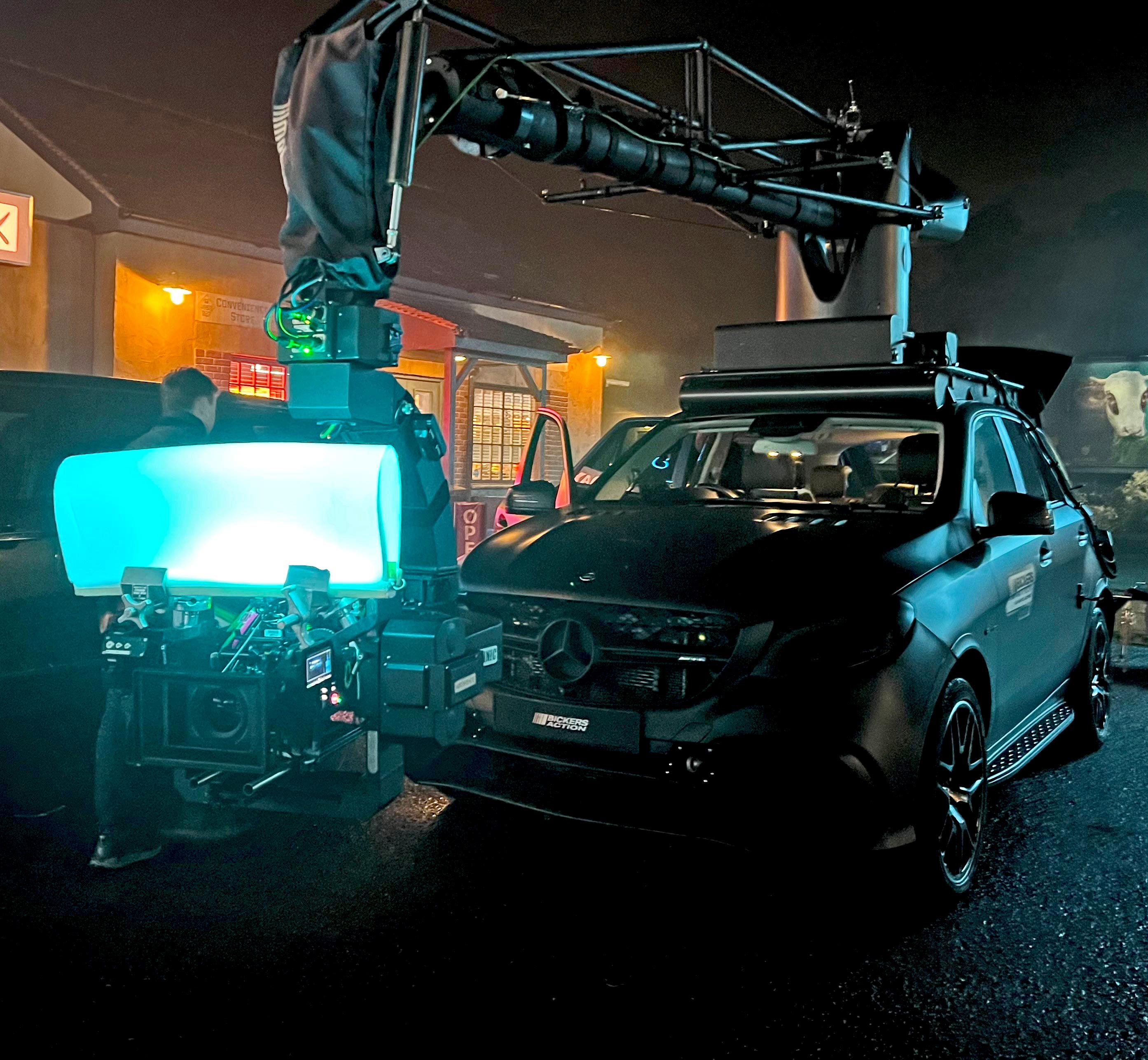
Gaffer Wayne Shields reveals how he uses Astera Tubes on Back in Action, Deadpool 3 and Apple TV+ series Disclaimer.
“Ican generally suss out how the DP likes to work after a couple of weeks shooting,” says gaffer Wayne Shields. “Most of the work is done in prep but their style of shooting, the type of lighting they prefer, which angles they like to use, and how they like to soften lights will be clear when you get to set.”
Shields is one of the most experienced lighting technicians in the business, having spent over a decade in his native South Africa learning the ropes on commercials before international film and TV production took off there.
In the last five years he gaffed on The Witcher (seasons 1 and 2), Paramount+ series The Man Who Fell to Earth (2021) and The Covenant (2023) with DP Ed Wild BSC for director Guy Ritchie on location in Spain.
His collaboration with Richmond continued on Argylle for director Matthew Vaughn (2024) and currently on Deadpool 3
“I’ll often go through the concept art with the DP and set designer to try to recreate the creative vision as closely as possible. With George on Deadpool, we put in all the bones upfront so that on the floor we’re using minimal lighting to give the actors as much space as possible. Some DPs tend to fill up the floor with lights which can inhibit the actor’s movement.”
Shields first started working with Astera Titan Tubes on The Witcher in 2018. “The latest versions have a built-in battery so you can run up them wirelessly for up to twenty hours which makes it so much easier to use on set. When you need to add a quick light under a table or behind a curtain you just reach for a Titan. They are very versatile and the colour range is also fantastic.”
What Shields particularly appreciates is that Astera use the same core engine across its range. He says, “Titan, Helios and Hyperion all have the same LED technology inside so you know what you’re going to get every time you pull it out. Shooting is a lot easier and quicker when you don’t have to run a cable in every time you need to add a
light. Astera Tubes are a game changer with speed and control.”
For Back in Action, a forthcoming Netflix action-comedy directed by Seth Gordon, DP Ken Seng wanted to recreate the specific colours of a petrol station set from some stills photos.
“Ken and I spoke about putting Titan Tubes along the top because he wanted to be able to change the colour. We did quite a bit of testing to match the colour he wanted for the street lights and the top and bottom of the station canopy. Astera just gave us the control of being able change whatever we wanted and to switch off certain areas to minimise the VFX.”
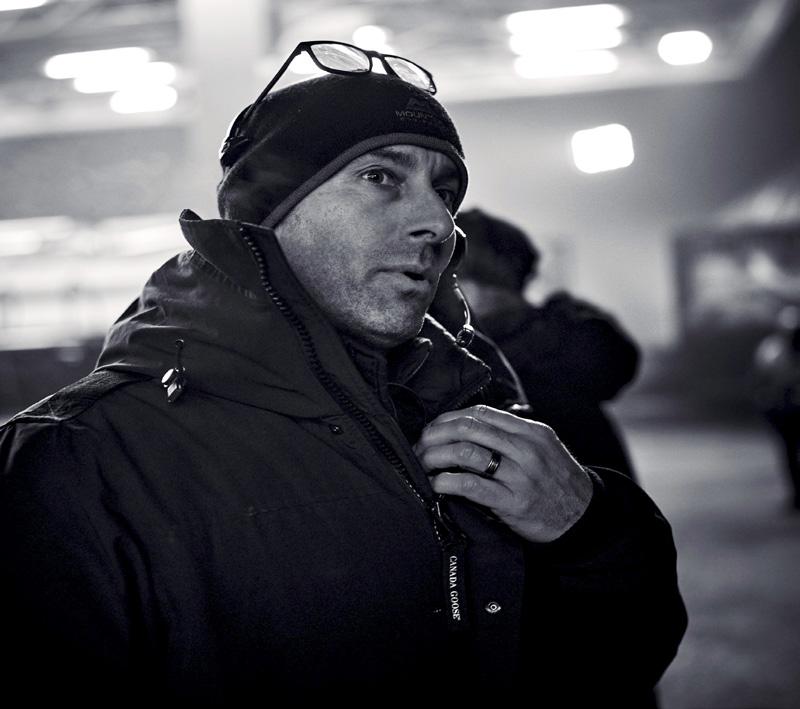
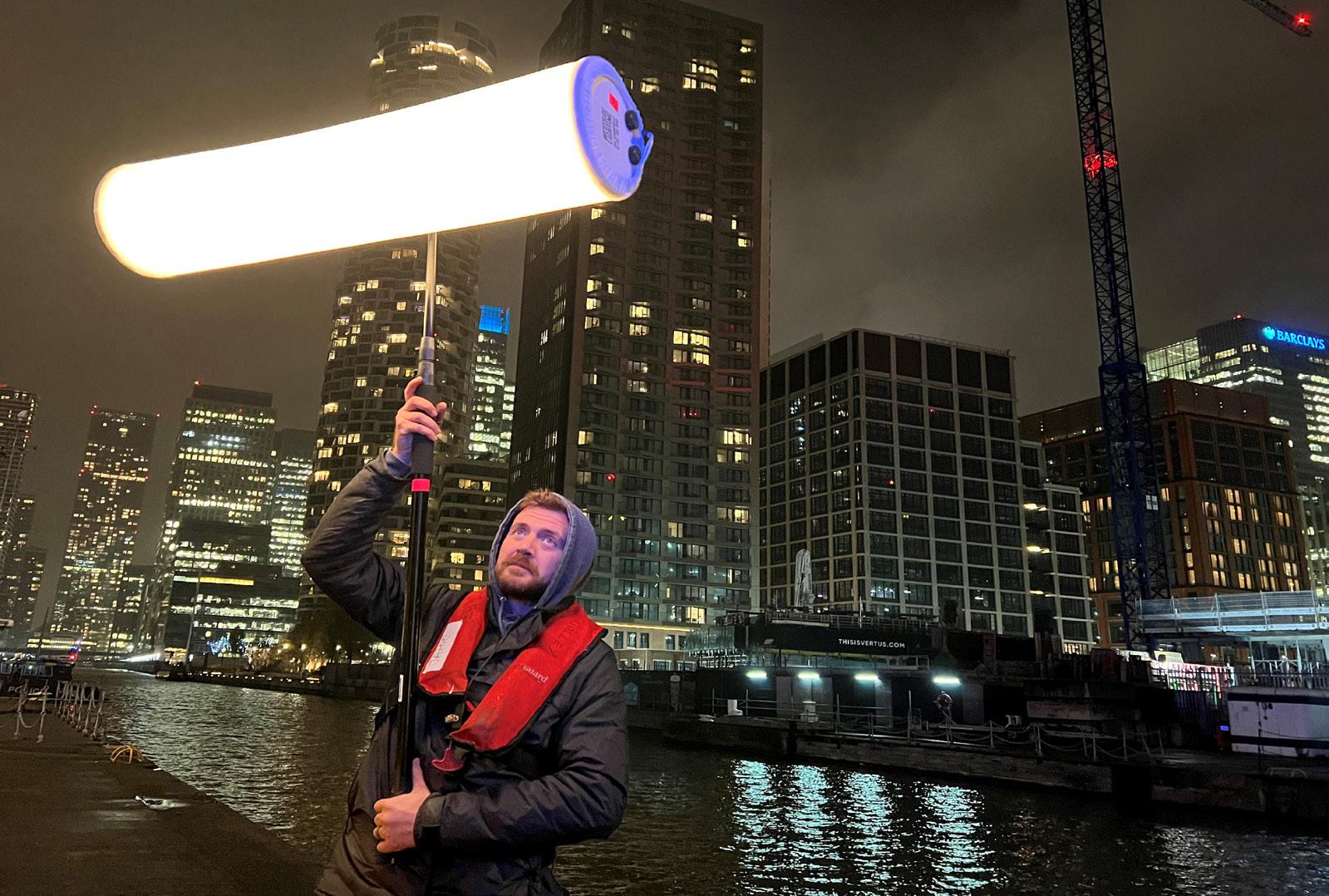

Also on Back in Action, they shot car work in a volume using Titan and Hyperion tubes for interactive light outside the vehicle. “Inside the car we used HydraPanels and Helios tubes which we covered in Depron to make the light nice and soft.”

Working with Emmanuel ‘Chivo’ Lubezki AMC ASC (and Bruno Delbonnel ASC AFC) on Apple TV+ series Disclaimer, directed by Alfonso Cuarón, Shields mixed ARRI SkyPanels with Astera products.
“We used a lot of Asteras on that job because Chivo liked the dimming curve colour rendering and mixing capabilities. We had a lot of cues with lights going on inside a house set so we needed to pair Astera Tubes with a light switch and practicals, so that everything came on in synchronicity.”

He adds of the three-time Academy Award winner, “Chivo is so involved in every aspect. He knows every detail of every light. That made it challenging, but I’ve got so much respect for him.
“Other DPs will tell you how to do everything and won’t encourage your own creative input. In those cases, it’s less of a collaboration and you’re more of a technician. As you get older and accumulate more experience, you’re able to walk onto a set and know how to light before the DP asks for it.”
Shields’ experience as cinematographer on Death Race 3: Inferno (2013) gave him newfound respect for DPs. He recalls, “Lighting is one thing the gaffer can concentrate on, but the DP has to be on top of every department all the time. You are almost constantly prepping for the next day. After I’d finished that job, I was like, ‘That’s it, I’m more than happy to be a gaffer!’”
As a board member of the International Cinema Lighting Society (ICLS), Shields is able to exchange information on lighting designs with peers and give feedback to manufacturers.
One of the most significant gaps in the market has been the lack of effective LEDbased Fresnel lighting. “Every manufacturer is trying hard to come up with LED Fresnels,” he says. “You get a certain quality of light from a tungsten lamp so it’s about recreating that with an LED and avoiding it feeling electronic. Also, when you put an incandescent bulb behind a glass Fresnel it creates a certain look because of the way a bulb shines through glass. The trick is trying to create that with LED.”
Astera has just launched its new Fresnel series: the compact PlutoFresnel and the larger LeoFresnel. By developing LED lights specifically for integration with a Fresnel lens, Astera aims to provide all the benefits of LED – including lower power draw, higher output strength, precise colour control, lightweight profile and full installation/application flexibility. All while still providing gaffers with the specific creative qualities associated with
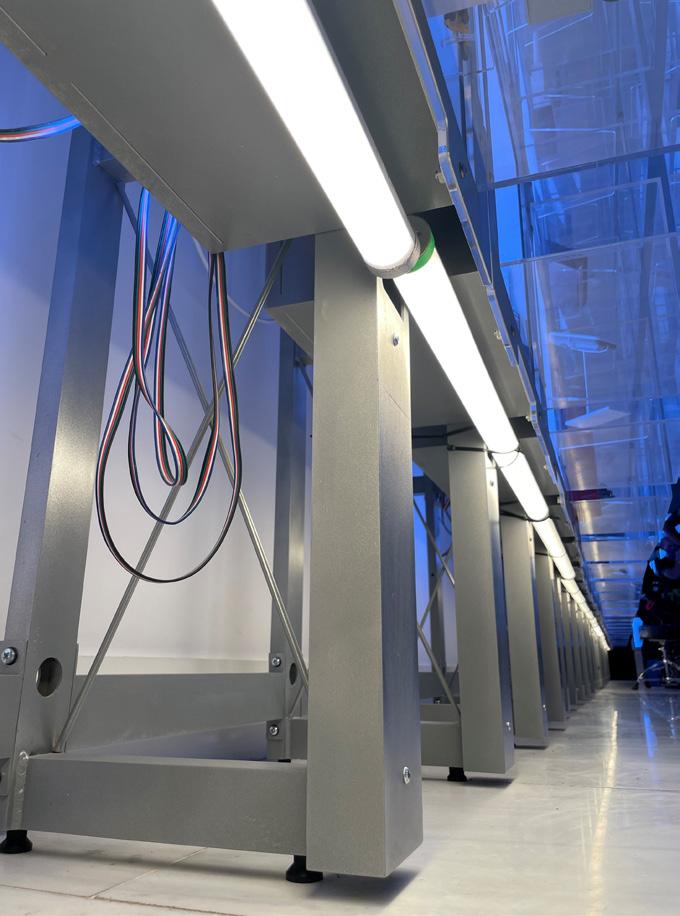
Fresnels, particularly in relation to portrait work and the replication of daylight settings. Shields tends to work with the same lighting crew on every job. “It’s very important,” he says, “you can be the best gaffer in the world but you will always suck without a good team.”
In Shields’ corner is charge hand Ben Caldwell. “He and I will run the floor when we’re shooting, and the rest of the boys will be outside bringing in the gear we request. It speeds things up with just the two of us. I know I can step away from the set at any time and he can run the floor. It will be a sad day for me when he goes off to gaff on his own.”
Best Boy Raz Khamehseifi is another key member. “Behind the scenes he is worth his weight in gold.” Other valued teammates include Scott Parker, Devan Green, Aaron Bartlett, Dean Coffey, Mark Robinson, and Ross O’Brien.
Concerned about bringing through next generation talent, Shields endeavours to get a couple of trainees onto each job. Alfie Green is his current trainee and Ben Saunders is junior spark.
“Technical lighting teams are getting bigger as lighting becomes more sophisticated,” he says. “What’s great is that my desk op Ed Kirby (or DMX tech Katie Spencer) can sit inside the set with an iPad next to the DP and adjust any of a hundred lights with full control over parameters like colour and intensity.
“We try to create a really good working relationship. They are the best team in the business.” n

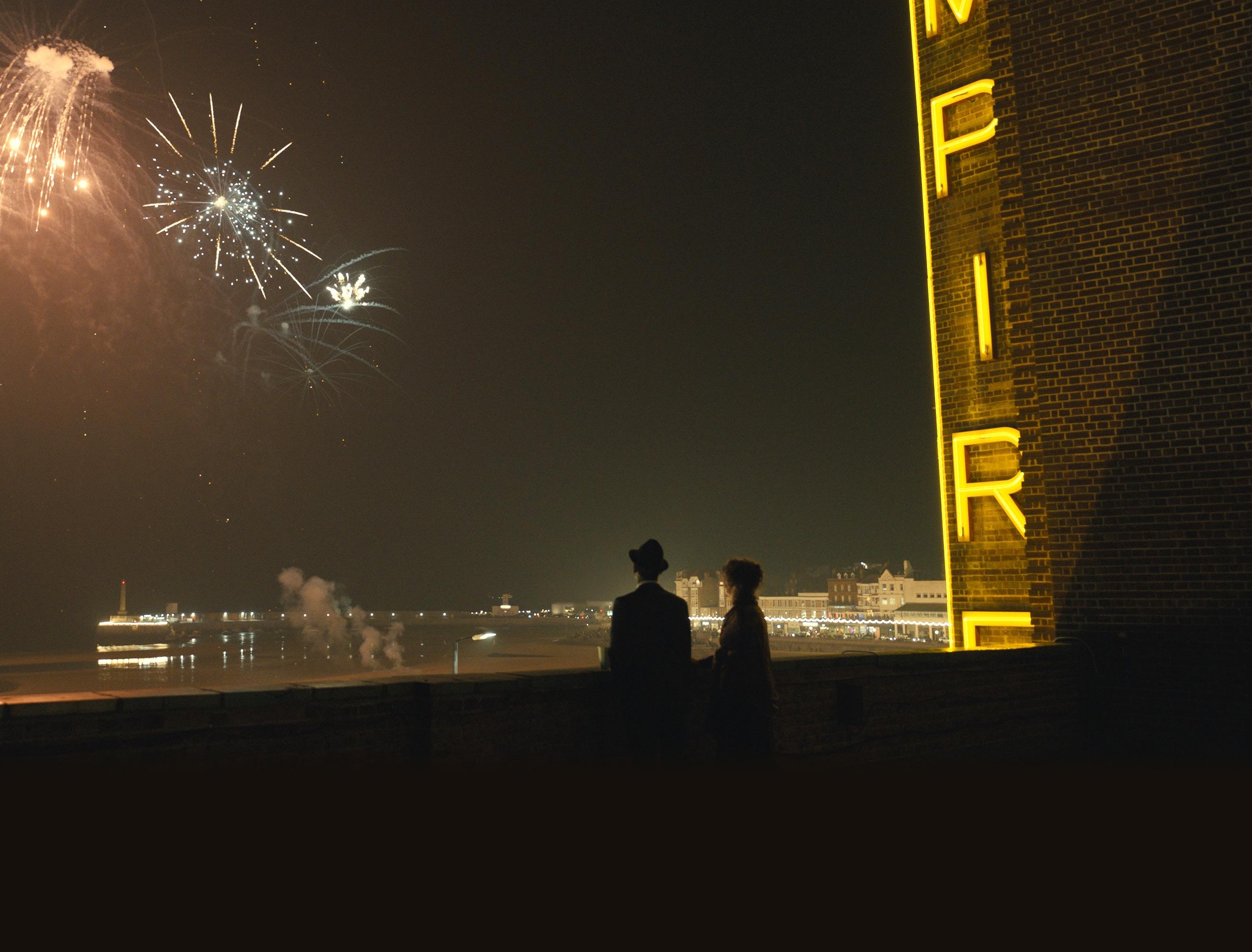
Gaffers Carolina Schmidtholstein and John ‘Biggles’ Higgins take us on a guided tour of how they approached lighting productions of various genres and sizes with creativity and originality to realise the director and cinematographer’s visions.
Camera departments constantly juggle a thousand challenges, but there’s one goal that’s almost universally sought, but rarely discussed in isolation: sheer originality. The drive to photograph a story in a way that’s interesting and new, or at the very least not played-out and hackneyed, is probably why there are as many ways to make movies as there are movies. It’s a situation demanding a certain amount of creative agility which gaffers John ‘Biggles’ Higgins and Carolina Schmidtholstein deal with every day. Higgins’ most recent experiences represent something of a case in point. “The last big film I was involved with was Mickey 17, directed by Bong Joon Ho, who did Parasite That was a very big production for Warner Brothers, with Darius Khondji ASC AFC. Now I’m in Ireland, doing a film called The Watchers which starts in three weeks. Mickey 17 is science fiction. The Watchers is a horror.” While switching genres might be all in a day’s work, though, the demand for a camera team to quickly comprehend then support the varying approaches of different cinematographers comes up often in any discussion of how a camera team works.
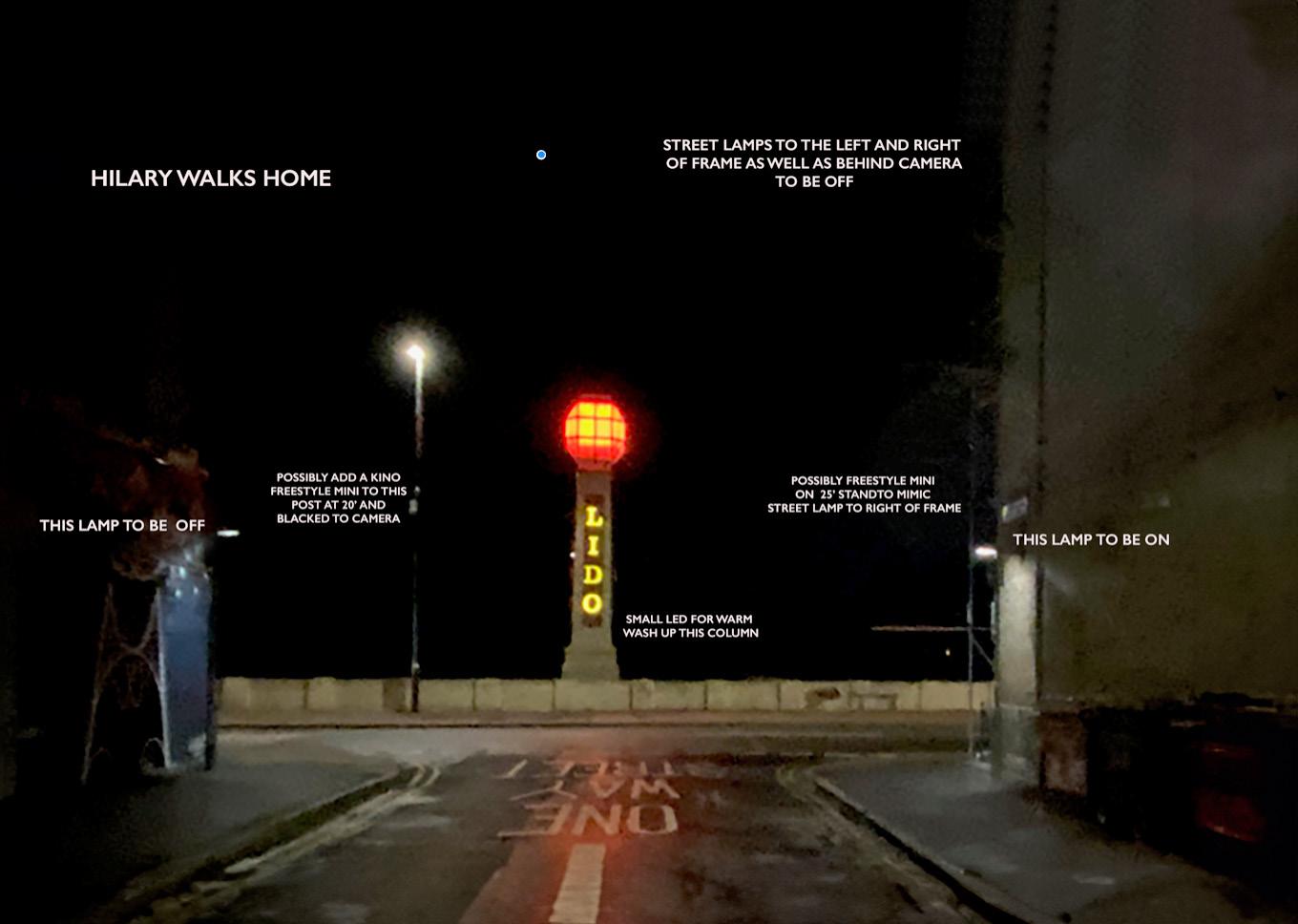
“No two cinematographers will approach the same task the same way. They’ll always do it in a different manner,” Higgins confirms. “In my position I have to try to work out what the cinematographer wants and get it as near-asdammit there, and the cinematographer can do the final tweaks. There are DPs who like things very hard and like to work like that, there are DPs who love the quality of tungsten… you soon find out what the cinematographer likes, and when we’re going for coverage, it becomes sort of a shorthand.”
There are many routes to that sort of utopian creative symbiosis, though Higgins has come to recognise a few as particularly useful. He describes something “most DPs use. The production designers often do concept art for the sets, and that’s an invaluable guide to setting a look. It mightn’t be exactly the same, but you have a great starting point. You see what the [practical] fixtures are like, you get the lamps they’re designing.”
What should be a creative collaboration is inevitably interrupted, at least sometimes, by the sheer technology that’s involved in

camerawork, and, as Higgins says, there are some peaks that more convenient, modern designs are yet to conquer. “What we didn’t have, until recently, was good, reliable, and high-output LED fresnels. That’s being rectified all the time. Rosco owns a lighting manufacturer called DMG, and they’ve brought a fresnel out, and the ones I’ve been using as a fresnel and as a softlight are by Fiilex. The Q10 is the biggest unit they do and it’s very impressive. I first saw the Q5 [at] Cirrolite and it was the first one that demonstrated characteristics of a proper fresnel.”
Replacing a tool with a better equivalent doesn’t necessarily alter the result, or at least probably shouldn’t. A less traditional part of the gaffer’s remit, meanwhile, involves reworking or even custom-building practicals, necessarily involving new designs for every project. As Higgins points out, it’s a crucial issue in an era of highly designed productions with mobile cameras that might often rely on practicals for sheer illumination. “The practical part of the lighting department is no longer just background. Practicals have become a very big element that sometimes production overlooks in their budgeting. There was one film which – will remain nameless – where that was completely overlooked. I had 16 guys in the studio just doing practicals, and we had to hit it hard to get everything ready on time. That’s not free.”


“NO TWO CINEMATOGRAPHERS WILL APPROACH THE SAME TASK THE SAME WAY. THEY’LL ALWAYS DO IT IN A DIFFERENT MANNER. IN MY POSITION I HAVE TO TRY TO WORK OUT
Even traditional approaches vary in sheer scale. The upper end of that scale has risen significantly over the last decade, and it’s no surprise to find an example at Cardington Studios, famous for its pair of vast, early20th-century airship hangars which are among the largest interior spaces in Europe. “We couldn’t put a silk over the whole roof area – it was just impossible to do,” Higgins recalls. “So, we worked out a scheme of
lightboxes. We had ninety 20-by-20 softboxes which gave us a beautiful light. Darius liked the setup. We used an ACL panel, which has very good output and colour rendering but is significantly cheaper than a SkyPanel. We had individual control on over a thousand lamps, each individually controlled and mapped. It was great.”
Achieving that end required what Higgins calls “a big engineering thing,” the like of which might not appear on more than a very few productions. “The first thing we had to do is put the infrastructure in for nearly four hundred chain motors. There are fixing points, but every time you put a rig in there you have to put the whole infrastructure in and every time you finish you have to pull it out. We had so many constraints – we had structural engineers involved with weights, we had to do method statements, and everything had to be tested as we went along. At the apex that stage is 180 feet high! We were scheduled to shoot there at the end of October, early November, and we started prepping in August.”
By comparison, illuminating an exterior with festoons of fairground-style incandescent lightbulbs might sound straightforward, although, as Higgins says, distance creates considerations of its own.
“I did a film a couple of years ago [Empire of Light, shot by Sir Roger Deakins CBE BSC ASC] where the director [Sam Mendes] wanted festoon lights all around Margate beach, around the promenade and coast road. It was a mile and a half. We did a test so we knew the distance between the bulbs, and it meant there were 6,000 bulbs around the beach, each 60 watts. That’s 360 kilowatts, so that’s three or four generators.
It just wouldn’t be possible to do it.”
The solution involved new technology standing in for old. “Each lamp post had a small electrical supply to it, which the council were happy for us to use,” Higgins explains, noting that the amount of power available might not have supported the traditional approach. “The only way we could do it was with warm white LED clear bulbs >>

We did a test at ARRI with a tungsten bulb and an LED at different levels on dimmers and we had the DIT there with a histogram, and it was very reassuring because the histogram was exactly the same for the tungsten and the LEDs. We got the warmest LEDs we could find. They are not tungsten bulbs, but you’d bet they were. The council supply was sufficient that we could run everything on their system.”
Regardless the technological approach, or the practical demands and the decisions those might impose, Higgins concludes by reinforcing the idea that accommodating the
particular needs of a production is not fundamentally technological; it’s interpersonal. “Sometimes I share an office with a DP and sometimes I don’t, but just by talking through things and developing a look, the DP will say I like that, but I’ll make it a bit different. It’s an organic process.”
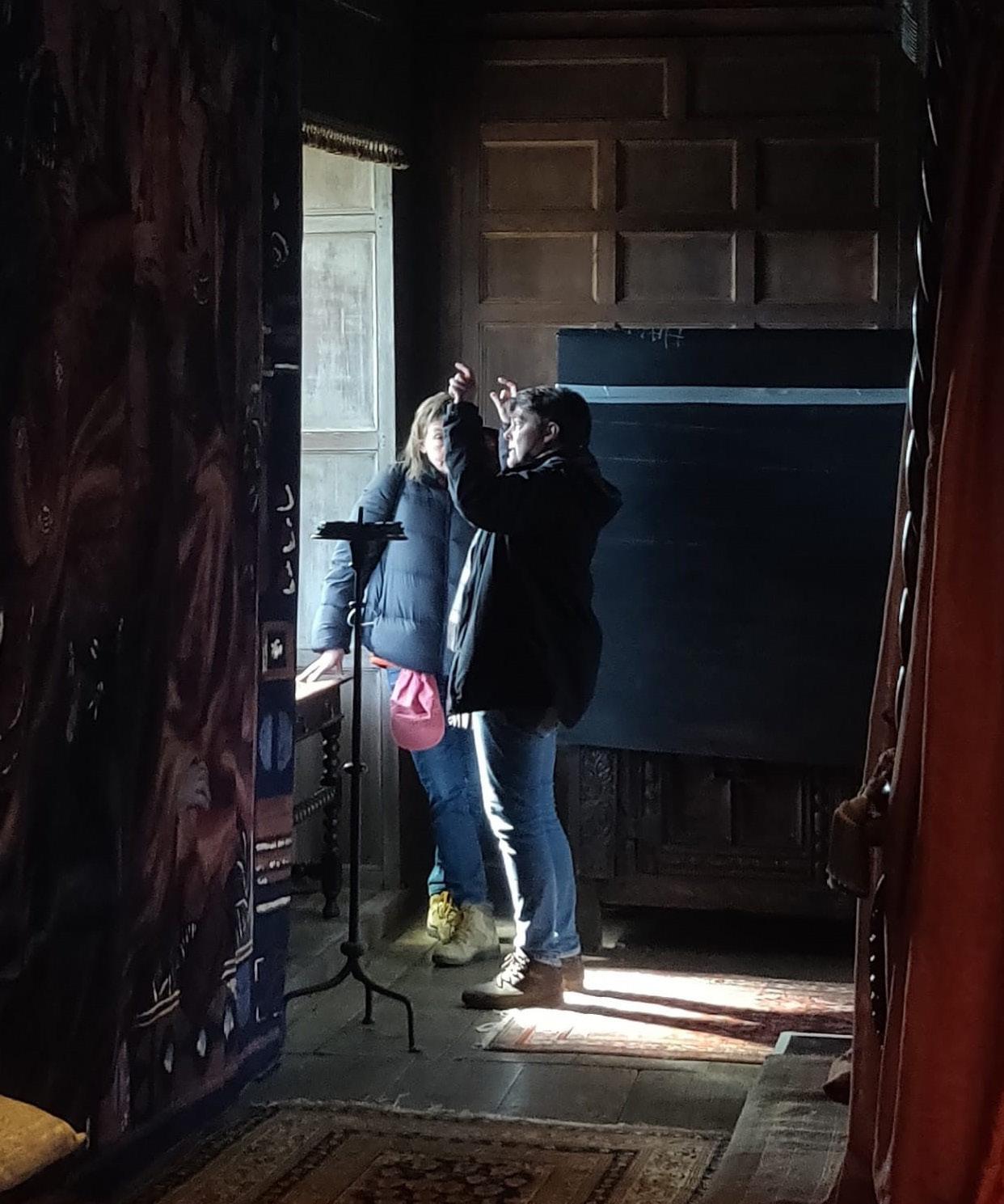
The importance of that understanding is so huge, and so widely recognised, that it’s no great surprise to find repeat collaborations in filmmaking. Just last year, gaffer Carolina Schmidtholstein worked with Hélène Louvart AFC on the historical drama Firebrand. Starring Jude Law and Alicia Vikander, the film premiered at Cannes in May 2023. At the time of writing, Schmidtholstein and Louvart were collaborating again on The Salt Path, a very different story in a contemporary setting. Schmidtholstein’s wider credit history broadens the scope even further, from the theatreland whodunnit See How They Run for Disney Plus to the extensive exteriors of The Unlikely Pilgrimage of Harold Fry Firebrand demonstrates how much techniques might vary even within the consistent look of a single production. Schmidtholstein remembers the film as “something unusual. It was quite a dark look, and we had a director [Karim Aïnouz] who was very much into colours. It was not your standard Henry VIII period costume drama. It’s not like we had crazy colours, it was the ambience that had a big palette and certain reflections would catch that. We had a big rig, covering all angles in the ceiling so that with a desk op, it was easy to control in all
directions. When we would turn around, it was very easy to light without re-rigging everything.”
That sort of convenience necessarily demands preparation, and Schmidtholstein worked with a rigging gaffer and a team who would, she says, “be two weeks ahead. Before we started filming, we had at least four weeks pre-light, so I would be making the plot, and they would start rigging. I would check and while we would be filming in the first room, they’d pre-light the second room and so on. It was almost like stages. There was a lot of work in the scheduling.”
Outdoors, the approach, and thus the workload, changed. “For the exteriors, it was on the same compound, and to shoot at the right time of day we were very involved in scheduling. On exteriors we would mainly use butterflies, reflectors, and stuff. We had occasionally also the LED 9-lights, but the exteriors rarely used added light. It was rather shaping it with butterflies and bounce. There’s also a lot in the grading to keep it still in that mood of low level, or contrast, so we used a lot of negative fill as well.”
For ...Harold Fry, photographed by Kate McCullough ISC, things were different. The crew relied on natural light almost exclusively since, as Schmidtholstein says, “80, 90 percent of the film was outside. It was Jim Broadbent walking from one end of the country to the other, and other than the last three weeks when we filmed the interiors in London, we filmed in chronological order from south-west England to north-east Scotland. On the road it was something like two transit vans of gear. We were four, maximum six. Often it was three of us. We had a minimal kit.”
Here, Schmidtholstein enthuses about the ability of reflectors to handle a wide variety of situations, particularly Lightbridge’s CRLS panels. They found use working with available light on ...Harold Fry, but also on the vastly different Firebrand, where the crew combined CRLS with Dedolight’s PB70 parallel-beam system, creating what Schmidtholstein calls >>
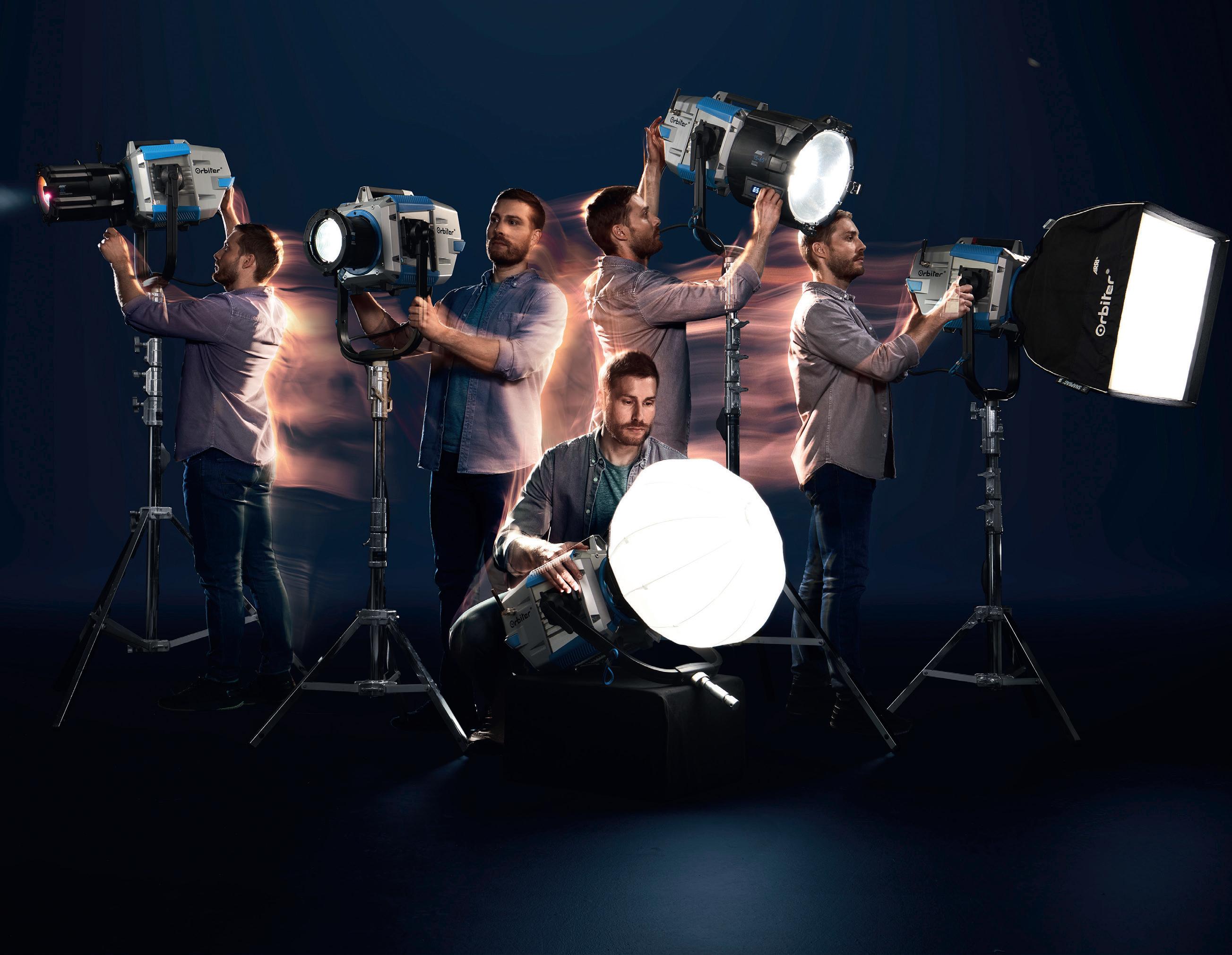
The ARRI Orbiter is a versatile and directional LED fixture. This spotlight convinces users with its high-performing six-color light engine, ARRI Spectra, and its large variety of changeable optics. Orbiter is ready for any application and can be easily transformed into di erent types of lampheads, including Open Face, Fresnel, Projection, and Soft Light, all in a matter of seconds. Film and TV production, broadcast, theater and live entertainment, and photography are just some of the environments where Orbiter excels.
Learn more about Orbiter: www.arri.com/orbiter

“a really realistic kind of sunlight. It’s a 1.2kW HMI, so you can run it from a mains socket, but you get enormous light out of it. On Firebrand we used four of them, all that’s available in the UK. The reflectors are a metre square and come in four different strengths, which is how you quickly go from a hard light to something a bit more soft.”
The reflector system worked particularly well on Firebrand, given an ambition to light through the windows but also to see through them. “I suggested that we build scaffolding tower so we could work off the platform. The beauty is that the light stays on the floor, and you send it straight up to a reflector, and you can tilt it down so much you can get a very steep angle. Again, you can look out the window and you don’t see the light. You don’t have to bring them far away from the window to get them out of shot. There aren’t that many lights you can tilt down so much.”
See How They Run worked very differently, taking special advantage of the otherwise grim pandemic shutdown of theatrical venues. “It was in the second lockdown, and it took place in the theatre world,” Schmidtholstein says, describing the storyline as “like the Agatha Christie Mousetrap story in a way – behind the scenes, a whodunnit taking place in the theatre world of London. The theatres were all empty and nobody was working, and we had sparks from
the theatre world, so it was again a big crew, with a rigging gaffer, pre-lights, and studio rigs.”
All of this was organised at very short notice, a practicality that might make two similar jobs feel very different. “Another gaffer dropped out and I was taking over, so my prep time was two weeks, or something silly. It was a tricky one,” Schmidtholstein admits. “COVID restrictions were a thing, and that’s why we didn’t have as much time as they wanted. It was also such an ensemble piece. With 12 main actors, it was really important to get all the angles of all the people. It was a lot of turning around and turning around again – lots of different angles. It was fast because we had to be really quick turning around.”
Much of See How They Run would be shot on stage, representing something of a return to traditional techniques. “It was more conventional in that we had HMIs on cherry pickers and 10Ks in studios, and lots of LED, either SkyPanels or Geminis, in the studio rig. What I found interesting was mixing into the theatre world. I had some theatre sparks and I had two radio systems, one talking to the theatre sparks for what they had rigged for the
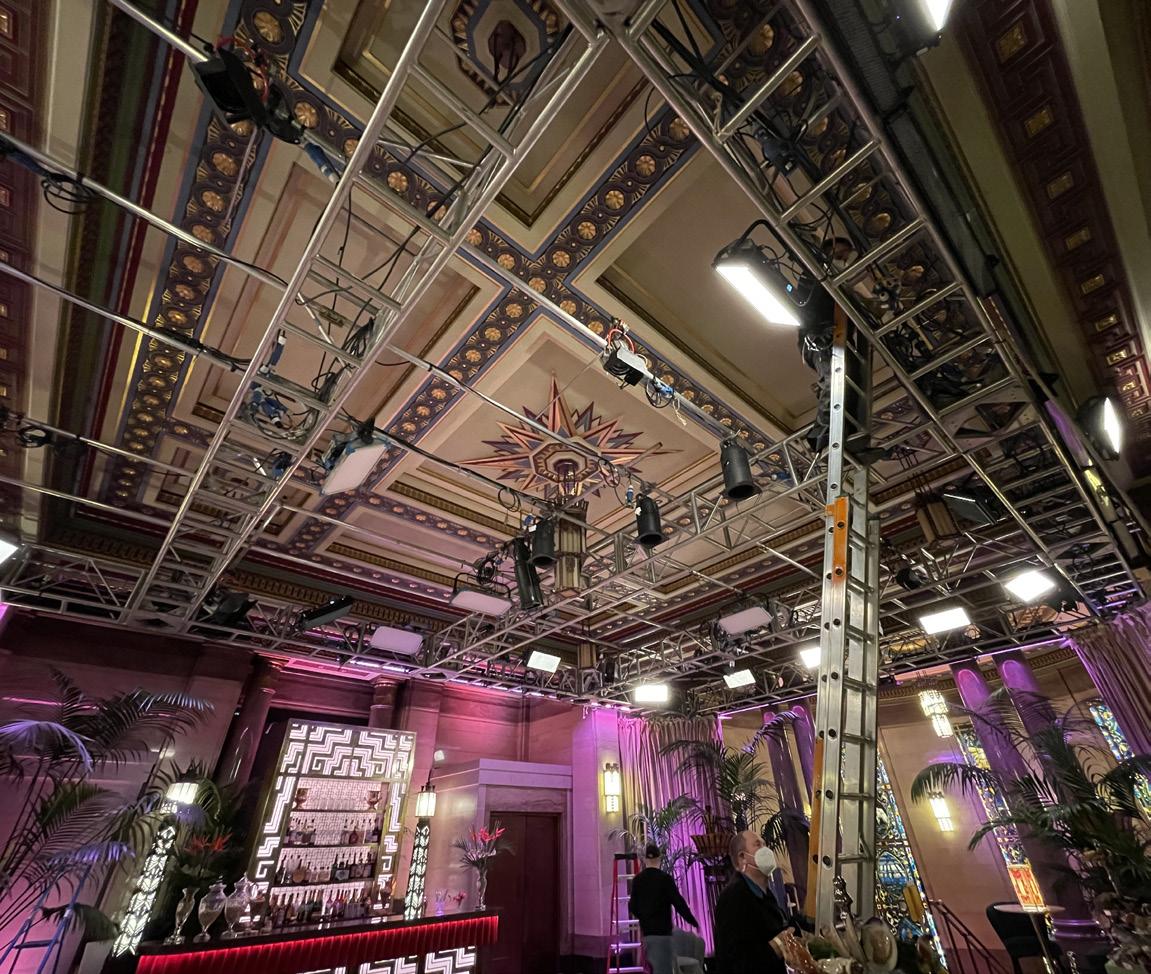
See How They Run worked differently to Schmidtholstein’s other productions as it took special advantage of the otherwise grim pandemic
theatre and augmenting it with our lights.”
No matter how complex things become, though, the most telling comparison is to smaller, simpler projects, albeit often with a very specific creative intent. “Every now and again I do films for artists – it’s my little pleasure on the side,” Schmidtholstein says. “It’s something really different where you don’t have a story and you don’t have continuity issues. It’s more like playing with light, creating interesting moods and shadows. I love lighting through textiles, for example, and I like to move the textiles to give it another level of movement and change and alteration.”
In a field which covers this much ground, perhaps the only preparation anyone can do is to bear in mind just how wildly the task might vary from one engagement to the next. Despite the inevitable influence of fickle creative opinion, though, Higgins concludes with a feeling that while the world of equipment has seen some upheaval, the underlying intent has never changed. “LED is great up to a certain power level. It goes quite quickly from LEDs like the DMG Dash, up to 200kW SoftSuns. I think for the foreseeable future there’ll be a place for the 18K HMIs. But in the end, the basics of lighting haven’t changed in a hundred years. The principles are the same.” n
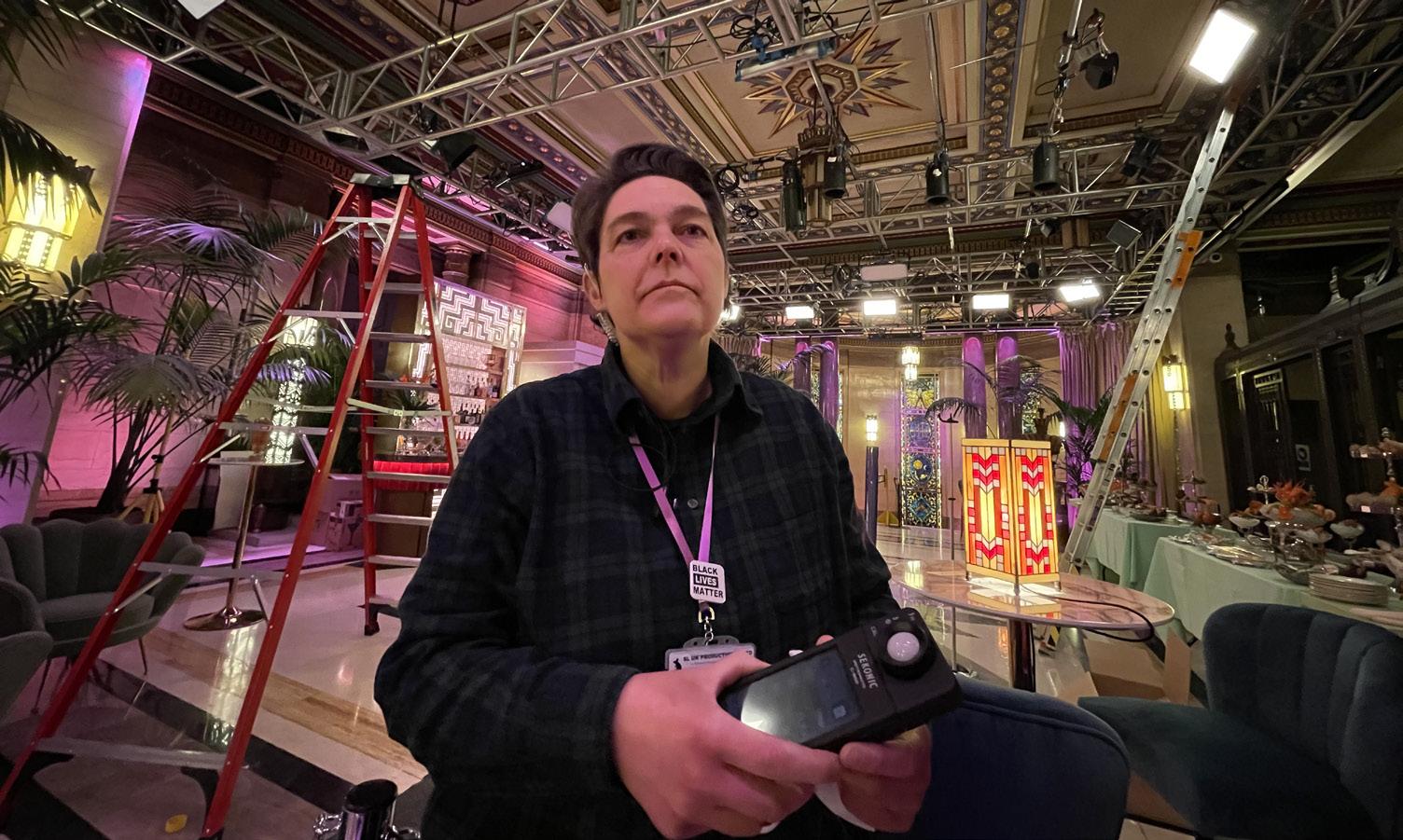


VELVET introduces two new fixtures this September to join its KOSMOS series of unique LED Fresnels.
VELVET has been a reference for LED lighting in cinema since two Spanish DPs (Javier Valderrama and Toni Hernandez) founded the company in 2008 in order to work with the light they dreamed of. VELVET have the best lumen/watt ratio of the industry. The efficiency and quality of their luminaires are appreciated by hundreds of cinema professionals for their very low power consumption and high performance.

Known for its technical innovations, VELVET was one of the pioneers in throwing the light placing optics in front of the LEDs further than anyone else before. They created a full range of robust, IP54, sustainable and durable lights that are highly valued as a quality standard for displaying high colour performance with skin tones and shadings.
Their product range has evolved into an ecosystem – called the RGB Ecosystem – which includes EVO colour soft panels; CYC, the asymmetric cyclorama lights; and the KOSMOS series. KOSMOS 400 is a real Fresnel light due to its 12-inch true borosilicate lens and its compact design is full of advanced features such as motorised zoom, connectivity, gels, and effects.
As with all their luminaires, VELVET take care to manufacture each one at their lab in Barcelona. Working with local suppliers and collaborators, they generate a lower carbon footprint, minimising the environmental impact of manufacturing. Their factory and office’s electricity is supplied by a green energy provider.
VELVET are proud to announce the latest members of the family, the KOSMOS 200 and KOSMOS 1000.
This unique fixture is equivalent to a 1kW tungsten Fresnel. It is based on the KOSMOS 400, with the half output power (which is equivalent to a 2kW) with a 10-inch true borosilicate Fresnel lens.
It has the same COB (chips-onboard) of five colour LEDs, which gives it the best lumen/watt ratio with high TLCI (Television Lighting Consistency Index) and CRI (Colour Rendering Index) values.
This a pure Fresnel with a motorised zoom that allows remotely controllable, full connectivity options, gel libraries, customisable effects, and all the connectivity of the current KOSMOS 400. It can be controlled locally via DMXRDM, Ethernet and remotely via LumenRadio, WiFi and Bluetooth.
The brand-new luminaire version is a bi-colour Fresnel with plus green/minus green adjustment and outputs equivalent to 5kW tungsten Fresnel. It has a 14-inch true borosilicate Fresnel lens (versus the 12 inches of the KOSMOS 400).
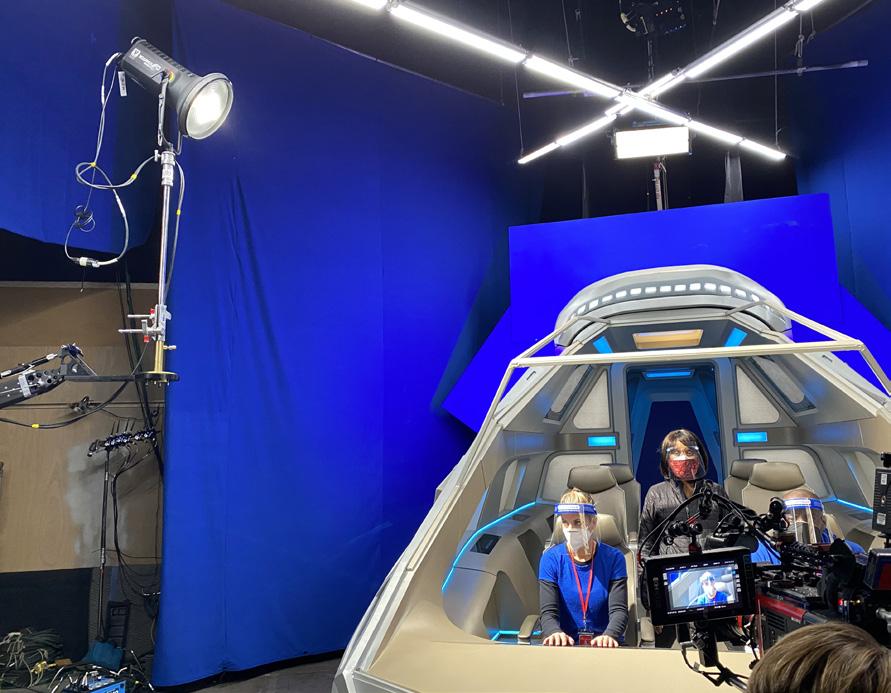

This new KOSMOS 1000 is a robust, cost-effective, powerful, and quality light source, intended for studio shooting. Next, VELVET will introduce a colour, waterproof, IP-rated version which will integrate with the rest all the KOSMOS Colour series for perfect colour spectrum and intensity harmony.
These new luminaires combine all of VELVET’s know-how in cinematic
“WE ARE WORKING ON THE NEW DISNEY DRAMA, ATHOUSANDBLOWS , WITH THE VELVET KOSMOS LAMP AND THEY ARE A VERY POPULAR LAMP WITH US, IT’S PUNCHY AND LIGHTWEIGHT, ITS COLOUR RENDITION IS OF GREAT QUALITY PLUS ADJUSTABLE DIMMING CURVE. ALSO, IT HAS SEVERAL USES, YOU CAN USE IT AS A FRESNEL OR A BALL, IT HAS THE SOFT BOX AND THE ACCESSORIES – SO THREE IN ONE IF YOU LIKE. IT IS A VERY ADAPTABLE LAMP. WE ARE VERY PLEASED WITH IT.” MICHAEL MCDERMOTT, GAFFER, ATHOUSANDBLOWS, DISNEY UK
lighting and completes the KOSMOS series at the top of the range.
All KOSMOS are compact, lightweight, and consistently reproduce in all colour modes. They are fully wireless controllable and have plenty of advanced functions to enhance your creative possibilities and speed up your shoot.
KOSMOS is ready to shoot at 100% light output with standard camera batteries. It has an integrated plate for external standard camera batteries, making this series of fixtures the perfect light for every production need on location.
Javier Valderrama, CEO and co-founder of VELVET, says, “VELVET proposes and develops innovative technologies to produce more energy-efficient luminaries, to give more creative possibilities and to speed up the lighting set-up and adjustment process.” n
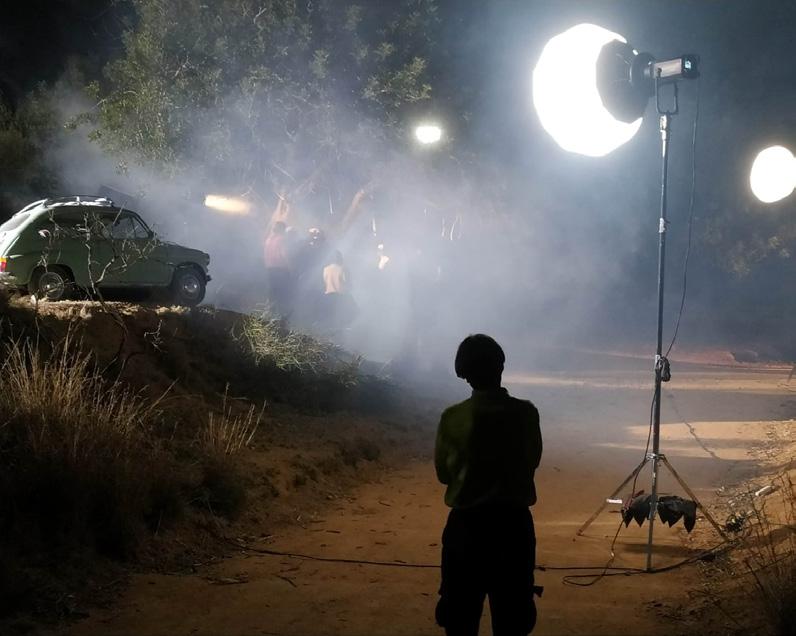
Jean-Marc Selva AFC, who has experience with Indian and Moroccan shoots, highlights that “it’s important to not come across as knowing better” when working overseas with people you don’t know

The quality and efficiency of studio lights may have improved since Hollywood’s golden era, but safety remains non-negotiable.
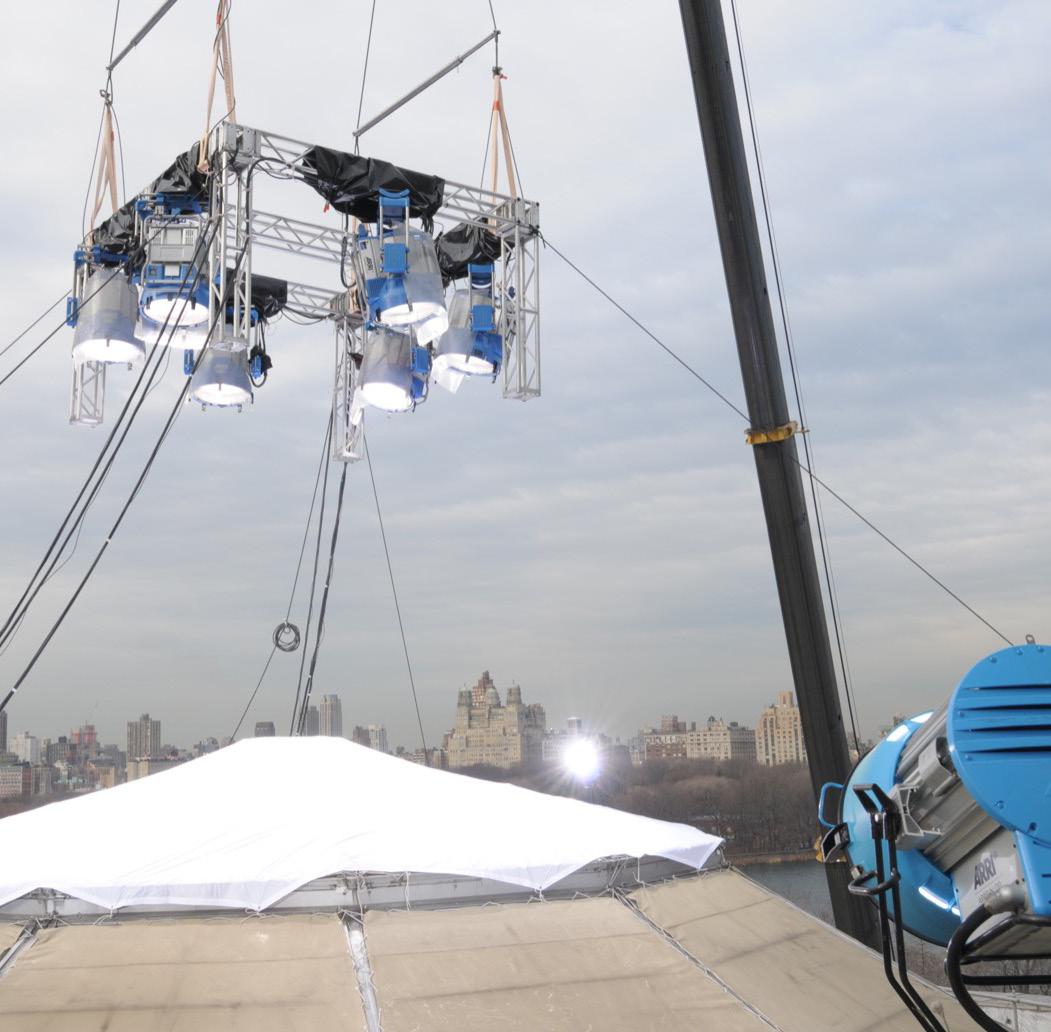
The tragic and untimely death of cinematographer Halyna Hutchins and the injury to director Joel Souza after a gun was mistakenly discharged by Alec Baldwin during the making of Rust in 2021 brought on-set safety back into sharp focus.
Yet while this was described as a freak accident, it was a reminder that even small oversights or mistakes can have devastating consequences.
“Every production I work on requires set plans combined with electrical lighting rig designs, based around the visions of the DP, set designer and director,” says Martin Smith, co-founder and director of the International Cinema Lighting Society (ICLS) and a gaffer, with a CV boasting Mission: Impossible –
Dead Reckoning - Part One, 6 Underground, The Witches and Transformers. “Overloading, short circuits, fire protection – a lot goes into preparation before a cable is even put into a stage. In the UK, all our sets are designed to comply with BS7909, which is the temporary electrical installation British standard that we must adhere to in the film and TV industry –and not everyone does.”
Once the rigs are pre-lit, there’s a safety briefing, so everybody in proximity is aware of the potential dangers.
“The DP doesn’t have ultimate responsibility for a rig in terms of safety,” says cinematographer Dale Elena McCready BSC NZCS (The Burning Girls). “So really, a DP is a layperson when it comes to safety.”
Luke Bryant, cinematographer on The Last Kingdom: Seven Kings Must Die, adds: “If there are any safety issues they are normally dealt with and covered with a morning briefing and if there are any particular concerns about a lighting rig, they will have already been raised by the gaffer in their risk assessments prior to shooting.”
Likewise, Karim Hussain CSC, cinematographer on Infinity Pool (2023), says that’s also the protocol in the North American unions. “The electrics will bring up any rigging and cabling concerns, especially if there’s water on set that day,” he says. “They will explain that they are using GFIs (ground fault circuit interrupters) to protect the set, in case there’s contact with water – there’s a breaker that will turn off all the electricity, etc.”
Gaffer John ‘Biggles’ Higgins, who has worked on more than 70 feature films, including the recent Mickey 17, says: “We work under The Health and Safety at Work Act 1974, so we do risk assessments, method statements and we liaise with the owners, engineers, and administrators of the location. Every location has the potential to be hazardous if safe work practices are not observed – some people tend to take risks in the use of stepladders etc.”
Certain countries have a more cavalier approach to on-set safety than others, but cinematographer Jean-Marc Selva AFC (Lakadbaggha, Un été à Boujad) says “it’s important to not come across as knowing better” when working overseas with people you don’t know.
Quentin Jorquera, DP and virtual production consultant (House of the Dragon) and a former gaffer, says accidents and injuries are usually caused by incompetence: “I saw a DP pushing a gaffer into walking on roofs without any safety measures for a shot. Imagine the level of ego and hubris. People will put themselves at risk to prove their worth.”
Gaffer Helmut Prein (Dunkirk, John Wick: Chapter 4) concurs. “Electricity in general is still one of the biggest causes of injury to crews. Electrical shocks, tripping over cables, for example. I read that twisted and broken legs are very common issues. We’re in such a specialised working environment and we know that we are not just responsible for people on set, but also for our own careers.”
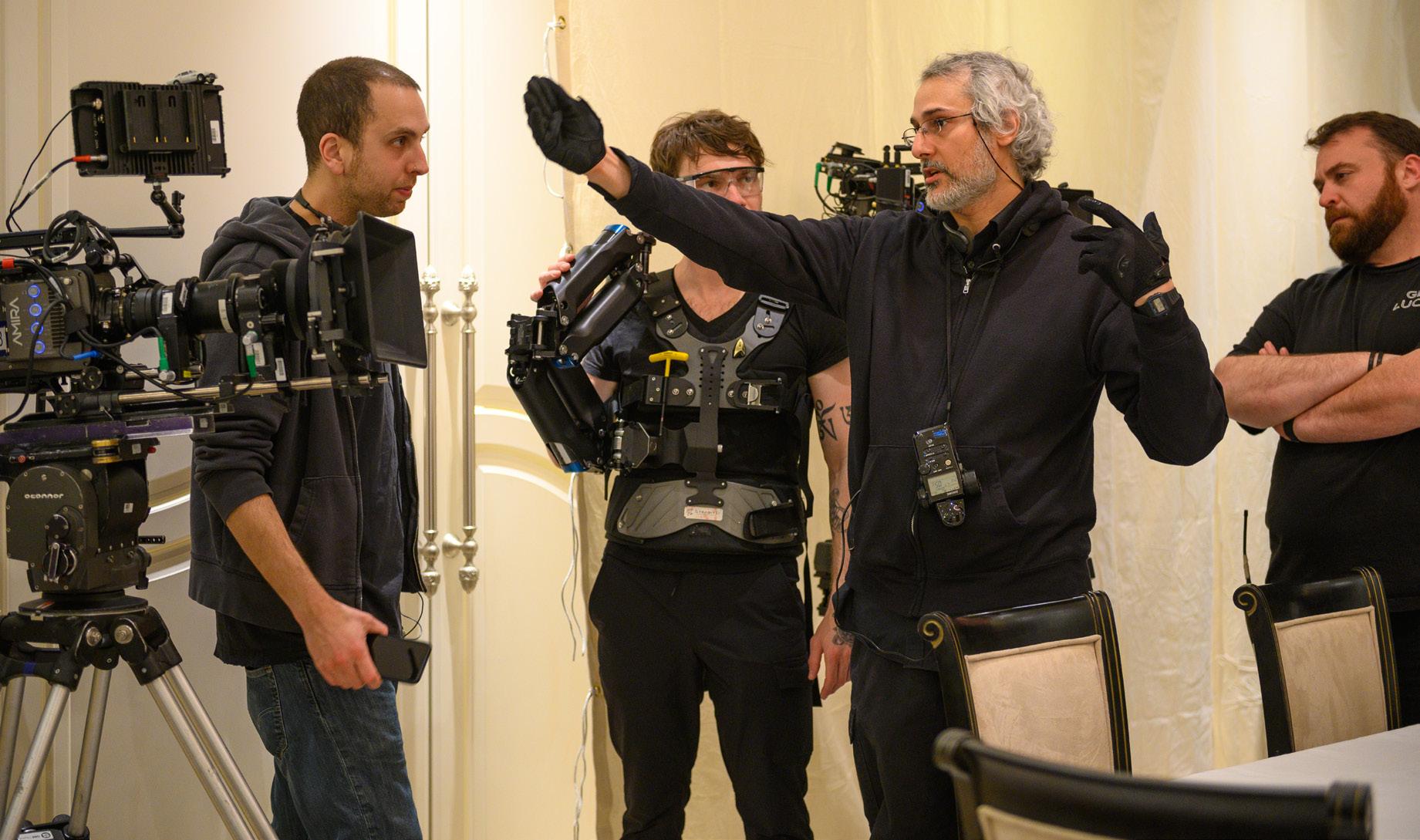
The good news is powering modern lights is far less of a safety hazard than in the past and Hussain says he likes Portable Electric’s emission-free, battery-powered Voltstack generators. “We’re using primarily LED lighting these days, particularly for interiors, so we no longer need to worry about excessive cabling if a battery-powered generator can be nearby or lights plug in the wall normally,” he continues. “Also, a lot of these new LED lights are reasonably waterproof, and battery powered – Astera’s Titan Tube Kit handles water very well, for example.”
However, Smith argues that “while the quality of lighting has improved”, today’s schedules don’t appreciate the art of lighting. “In the golden era, it would take a day to light a set – it now takes minutes,” he says. “Actors often don’t leave the set, so you end up working above their heads. You’re lucky to get five minutes to light a scene now, so we don’t even shoot with doubles. It’s that ‘rapido’ –more reactive than planned.”
If the worst does happen, there’s usually a medic on set. “You contact production first and then call an ambulance,” says Prein, “because it’s easier and faster than driving the person to hospital. Also, electric shocks are tricky to deal with because you don’t automatically know how serious they are, so the person goes under 24-hour observation.”
Remember, even the smallest of oversights can have devastating consequences. Stay safe. n
“IF THERE ARE ANY SAFETY ISSUES THEY ARE NORMALLY DEALT WITH AND COVERED WITH A MORNING BRIEFING AND IF THERE ARE ANY PARTICULAR CONCERNS ABOUT A LIGHTING RIG, THEY WILL HAVE ALREADY BEEN RAISED BY THE GAFFER IN THEIR RISK ASSESSMENTS PRIOR TO SHOOTING.”
LUKE BRYANT, CINEMATOGRAPHER ON THELASTKINGDOM:SEVENKINGSMUSTDIE

If you harbour ambitions to become a gaffer or lighting technician, there are key training courses at your disposal. However, it’s also important to acquire hands-on experience.
“The new generation knows more about the wireless networking, whereas I don’t,” says Julian White, gaffer on The Midnight Sky and Cinderella. “It’s as much about experience as it is training. I think introducing a formal, universal qualification is a good idea because there are some highly qualified electricians, but they have no set etiquette.”
One can also gain relevant experience working in another branch of the arts. Cullum Ross, 2nd unit gaffer on Bridgerton season three and Man vs. Bee on Netflix, comes from a theatre background, which, he says, has been invaluable to his success in the film industry. “When you work in a theatre, you prioritise safety because you’re dealing with members of the public,” he adds. “In the industry today, lots of former industrial and commercial electricians have been introduced to film and television lighting or got jobs through friends. Others have come through the arts route. Typically, they may not have many technical qualifications, yet a film set is like a construction site, with many hazards.”
In the ‘90s and early 2000s there was a dedicated qualification and apprenticeship scheme run by the four big lighting hire companies of the time, according to Mark Thornton of Bectu’s Lighting Technicians Branch.
“This put approximately 140-160 new entrants (including me) into the freelance market,” he explains. “Alongside ran the NVQs, government-established qualifications which were being pushed in film and TV to get already working sparks ‘up to date’. These schemes failed because of the lack of audience. For many years, Bectu Lighting Technicians have been working with ScreenSkills, lighting suppliers and other industry stakeholders, to reintroduce a training scheme similar to the NVQs and apprenticeships hosted by lighting companies throughout the 1990s.”
Further information:
ScreenSkills says “those looking to go straight into a job or apprenticeship” can look to gaining Level 3 vocational qualifications in:
l BTEC Diploma/Extended Diploma in Electrical and Electronic Engineering|
l City & Guilds Advanced Technical Diploma in Electrical Installation
l EAL Diploma/Advanced Diploma in Electrical Installation
The ScreenSkills electrical trainee programme is an initiative funded by the High-end TV Skills Fund to support electrical trainees for both short course qualifications and workbased learning. Visit: screenskills.com

Sources that appear in frame are an important part of a DP’s palette, but balancing the light is an artform in itself.
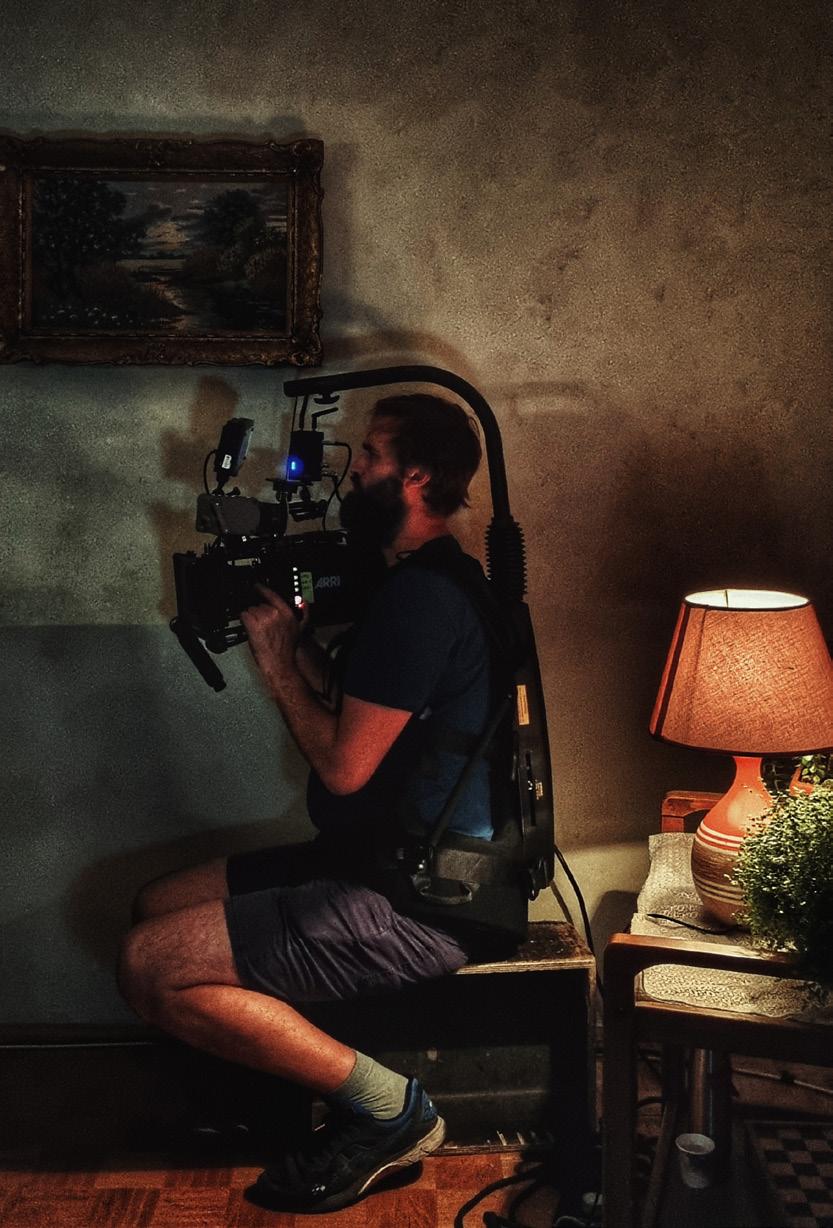
When it comes to practicals, collaboration between the cinematographer and the art department begins early. “It starts in pre-production when we are looking at locations or talking about sets that are going to be built,” says Roger Simonsz BSC. “In a film I did quite recently, [the characters] had just moved into this apartment, so there was nothing, and we had to decide what lamp could they possibly have put somewhere… If the team is together, on the same page, then you should be able to get what fits the story and the situation and also matches the needs of the cinematographer.”
While shooting the Indian Netflix show Class, Alana Mejía González observed that many working-class people in Mumbai lit their homes with white LED tubes. Although she disliked them, the DP knew the tubes were the right fit for the story, but still needed to shape the output. “Sometimes it would be my department just putting some tape on the back of the tubes. That would help control a little bit of the spill of the practical on the walls.”
Cinematographer Matthias Pilz likes to have plenty of options for practicals. “I can’t have too many, as long as they look right, and it doesn’t look too contrived. I love to have lots of practicals in place, but I rarely switch them all on… If you have a location that you come back to for multiple scenes throughout the film, if you have options, you can make them look different each time.
“I always like a wide selection of bulbs because sometimes you want a diffused tungsten bulb, sometimes you want a smaller one, sometimes you want a bigger one, then having LED bulbs is great if you want to play with colour or you don’t have access to power.”
“I’m praying for tungsten bulbs not to ever go out of production!” laughs González. “Even when they are dimmed down and they are much warmer than they would be at full power there is something in that quality that looks, for me, very nice. In terms of skin tones in interior spaces, night interiors, I think they become very interesting.”
Gaffer Julian White explains some of the drawbacks to be considered. “With tungstenhalogen lamps, once you start dimming, they start getting warm and they start making noise. Then with LED bulbs, sometimes the light’s going in the wrong direction.” No light comes out of the bottom of these bulbs, as both White and González point out, hence González prefers to use them as supplementary sources just out of frame.
“Camera sensitivity’s got so great that you don’t need so much light,” says White, “but it’s just trying to tune those [practicals] a little bit more so they’re not burning out.” His tricks include cutting a small hood for the bulb from black wrap to direct the light; using black wrap tape directly on the bulb; fitting ND gel inside the shade so that it retains its texture on camera; or cutting a circle of Depron for the top of the shade to diffuse the light coming out. He has also been known to paint a dot of brown hairspray on the camera side of a bulb to reduce the hotspot. “The other thing is not putting the practical too close to the wall. A lot of set dec people will push the lamp as close to the wall as they can… but I always suck it out so the light’s not hitting [the wall] so much.” n
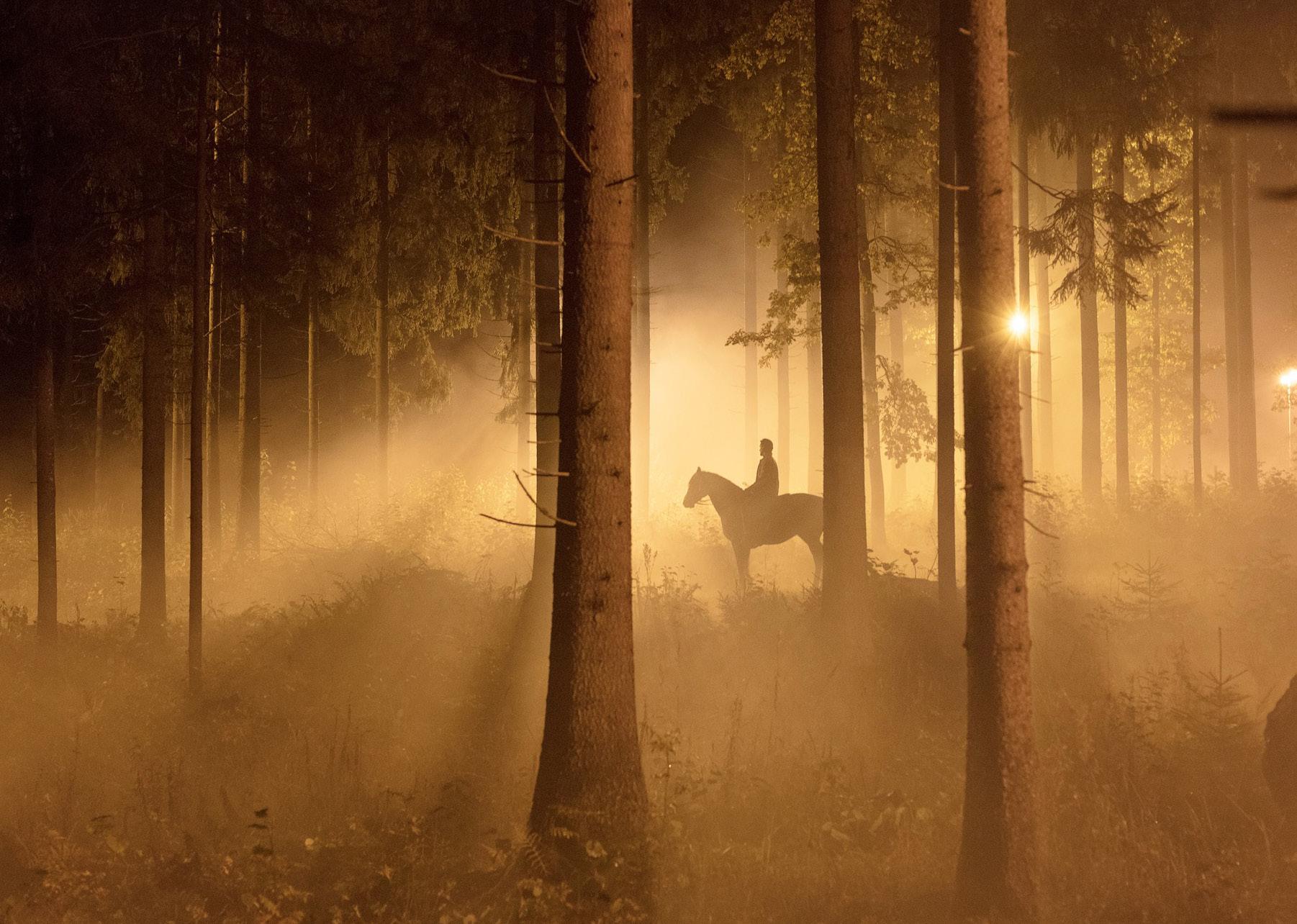

Tommy Maddox-Upshaw ASC achieves skin tone accuracy from prep to set with Rosco DMG Lights.
Cinematographer Tommy MaddoxUpshaw ASC was introduced to Rosco’s DMG Lighting fixtures by gaffer Wayne Shields on the 10part Paramount+ drama The Man Who Fell To Earth, which was largely shot in the UK. Since then, he has used these unique LED soft lights on every production.
“They are a staple of my creative process, from conception – to testing – to the final shot,” he said. “I use the entire range to manipulate lighting even when I’m on a stage because of their sheer speed and power.” The DMG Lighting range of soft lights includes the DMG DASH Pocket Light, the DMG MINI and SL1, and the powerful DMG MAXI.
“Working on episodic shows always requires a faster turnaround in setups than on features, and with the DMG lights I was able to set and change in double-quick time.”
Maddox, who previously photographed the apartheid drama Kalushi: The Story of Solomon Mahlangu, the third and fourth seasons of FX’s 1980s saga Snowfall (winning an ASC Award for his work), and the second season of Netflix’s On My Block, is drawn to projects that celebrate and explore diverse characters and stories. Naturally, that means working with actors of diverse skin tones,


and for Maddox – that demands authentic and accurate skin tone rendition.
He extends this sensibility universally. “People in the UK have different skin pigmentation from Caucasians in South Africa or the Mediterranean. All digital cameras interpret skin tones a certain way, but my take is that I should be the one in control of manipulating skin tone if I want to.”
The unique, phosphor-converted MIX LEDs inside Rosco’s DMG lights produce more of the wavelengths found in human skin tones.
“I want a camera and a lighting system that gives me a great foundational base in order to have great colour separation,” Maddox explained. “I want a neutral point before I start to colour mix and under or overexpose. The colour rendition of the Rosco DMG lights is exceptional, and their neutral is pretty darn accurate in daylight or tungsten.”
Maddox begins his creative process using the DMG DASH and the DMG MIXBOOK, which he controls using Rosco’s free myMIX app. “I like to start testing colour on my own skin tone just as a reference, using myself as the first guinea pig, if you like. So, I make use of those two products hooked to my phone to figure out colour by bouncing the light off certain materials. Both units are small, so they are easy to set up at home.”
“Then I bring my findings onto the camera test. Using the
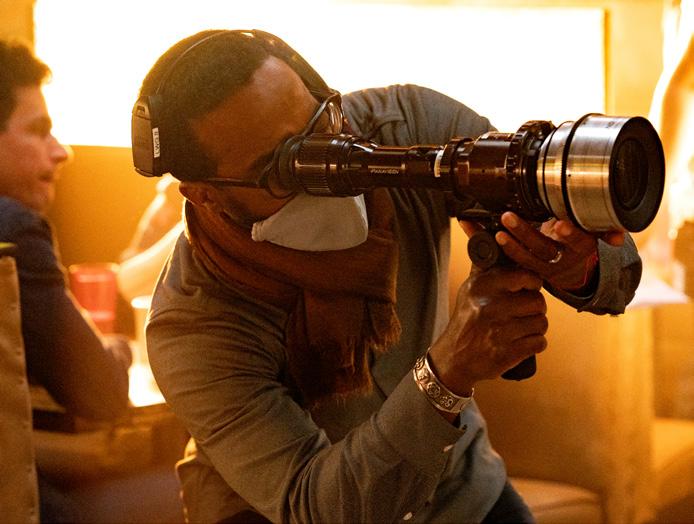
larger DMG fixtures, you can see the evolution from testing to execution on set,” Maddox observed. “Each DMG product retains the same colour spectrum. This is something Rosco has done that no one else has been able to do.”
“With the myMIX App, I can simply note down the colours or colour temperatures I want, and then the dimmer board op punches them in when I get to set, and all of a sudden – bam! The vision I began to bring to life in my office is now something we can use for real. That process is something I really enjoy.”
Rosco also recently revealed its latest DMG Lighting range product, the DMG LION. This powerful, weatherproof, 13” Fresnel will feature two easy-to-swap LED engines – a powerful bi-colour engine and a MIX LED engine that will match the output of their DMG soft lights. n
Learn more about the entire Rosco DMG Lighting range: www.rosco.com/dmg
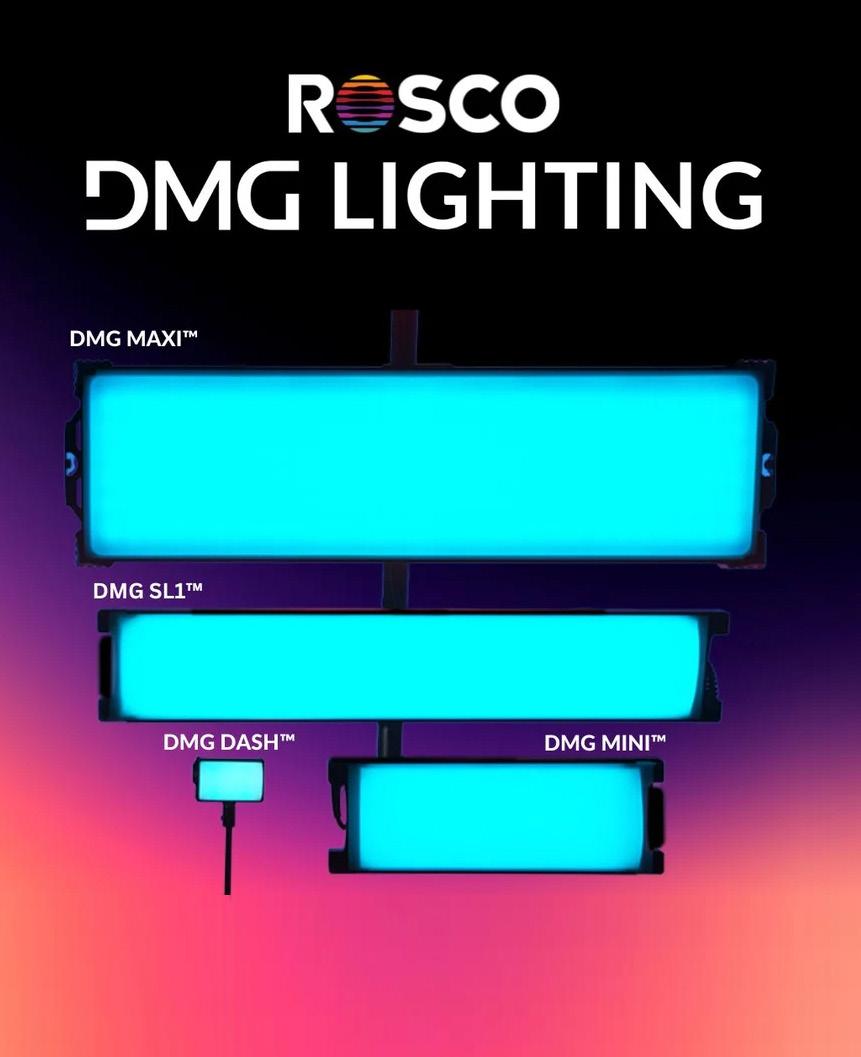

Find out how Godox’s innovative lighting solutions aim to simplify the filmmaking workflow.
The corporate mantra of Godox is to embrace creative possibilities, empowering creators to shape their artistic signatures effortlessly.
“Our holistic system ranges from compact tools for handy use, to game-changing fixtures with ample power, providing a boundless canvas for imagination and creativity,” says Junna Wei, continuous lights’ marketing supervisor, Godox. “We aim to help our users turn once-daunting ideas into captivating realities, fuelling the passion and joy of the creative journey.”
“Godox serves the global market by collaborating with distributors in various countries and regions, continuously expanding our network of partners. Ensuring that users from every corner of the world can access top-quality products remains an unwavering priority for us. Our diverse product line
includes flashes, continuous lights, audio equipment, monitors, and accessory systems, making us one of the few comprehensive brands in the film lighting industry.”
Godox made a significant impact with the launch of the groundbreaking MG1200Bi.
This high-power LED lighting product earned praise from professionals, bolstering Godox’s position in the video and film industry.

The MG1200Bi adopts COB blending technology, delivering an impressive output of over 1200W at any colour temperature, even at an input power of 1400W, showcasing exceptional brightness and power reliability. Its brightness (with Fresnel) is on par with a 2.5k HMI Fresnel or a 1.8k PAR, with high colour-rendering and smooth light quality as natural as sunlight.
Notably, Godox incorporated the G-Mount being a larger surface area, that enables the light to withstand greater weight and higher working temperatures for enhanced safety. It also features touch-spots that allow intelligent recognition of accessories.
Another advantage of the MG1200Bi lies in having a complete light shaping system, including projection attachment, Fresnel lenses, reflectors and softboxes, enabling it to handle complex on-set environments and improve on-set efficiency.
Beyond the MG1200Bi, Godox offers a range of popular products for film and video lighting solutions. For instance, the KNOWLED flexible LED mat comes in three sizes and power options: F200Bi, F400Bi, and F600Bi. This unconventional LED light features a flexible, foldable and slim design, allowing it to be used in scenarios where traditional lights cannot easily be set up, such as car interiors, compact spaces, or curved surfaces. With IP65 water-resistance and practical design elements like Velcro and rings, this LED mat offers extensive application flexibility.
Another notable product is the pixel tube lights, available in three sizes: 2’, 4’ and 8’. They present high pixel density, resulting in smooth and seamless light effects. The built-in LumenRadio modules allow for CRMX control, empowering users to creative and synchronise lighting results with other professional equipment. Godox continues to enhance its film and video lighting system with the addition of RGBWW bulbs and more.


Time on set is incredibly valuable, considering actor fees, location expenses, labour costs and more. Each camera angle change requires a complete re-lighting process. Godox is highly committed to helping crews using our products to reduce their creative costs, and this dedication is reflected in three key aspects: a comprehensive and versatile product line, a well-developed accessory system, and seamless integration of control options.
Created to serve film and video productions is the Godox Cinematic Lighting Solution System. “Godox offers a wide range of products in different shapes and power options, meeting specific needs. Our COB lights range from 30W to 1200W, catering to various shooting scenarios.” explains Wei. “For run-andgun shoots, we have the ML series, while the UL series is perfect for audio-sensitive scenes. For larger spaces and demanding lighting scenes, there are options like the MG1200Bi and KNOWLED M series. Moreover, we provide various options in bi-colour, daylight and RGB configurations. Additionally, Godox offers space-saving and high-brightness options like the P600Bi Hard, which serves as an excellent space light; the flexible LED Mat, suitable for narrow or curved spaces; and practical lighting options like the C7R and C10R ambient light bulbs.
“In perfection, Godox designed a comprehensive accessory system that caters to various mounting requirements. Whether you use a Bowens Mount, G-Mount or Godox Mount, you can find compatible light shaping tools such as projection attachments, Fresnel lenses, softboxes and reflectors in our accessory system. This perfect compatibility reduces the time spent on selection and adaptation. For specific needs, we have the capability to develop targeted accessories due to our in-house research capabilities.”

For different products, Godox also incorporates clever designs. For instance, our flexible LED mat features Velcro and rings, providing practical and versatile usability, covering a wide range of application scenarios.
Control options are a primary concern for lighting professionals, including gaffers, who may wish to control all on-set lights from a single device. Godox provides solutions to achieve this seamlessly. Our lighting fixtures support professional control methods like DMX/CRMX, app group control, 2.4GHz wireless control, and more. The integration of control features ensures remarkable stability, enabling users to enhance work efficiency and unleash their creativity.
Godox’s dedication lies in optimising efficiency, reducing costs and empowering professionals to unleash their creativity. We are fully committed to providing the film production industry with high-quality lighting solutions, ensuring exceptional results in every creative endeavour.
Godox equips its film and video lighting products with a professional control system, including industry-standard DMX512 and

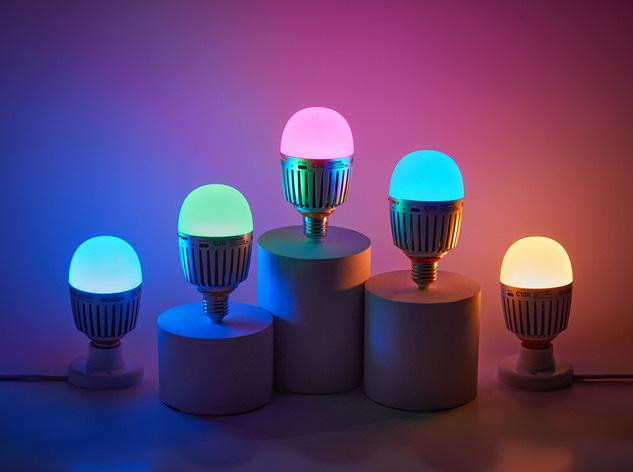
CRMX control options. The integration of these control capabilities enhances on-set efficiency and allows seamless coordination with lighting from other brands.
“The company places great emphasis on understanding the needs and challenges of lighting technicians and filmmakers. Through extensive consultations, Godox actively explores new technologies and addresses user pain points to create high-quality products that help professionals save costs, improve work efficiency, and simplify their creative workflows, while sparking limitless creative possibilities,” explains Wei. “For instance, with the Timo Link RX/TX, a receiver and transmitter pair developed by Godox, DMX512 signals can be converted into a unified CRMX signal, enabling lights without built-in Lumenradio modules to achieve the same CRMX functionality.”
Godox is committed to innovation, evident in products like the world’s first lithium batterypowered on-camera flash, the VING V850, and the innovative AD360 equipped with a power pack, which makes the photography process faster with greater portability.
“Since our establishment in 1993, Godox has grown into a globally renowned enterprise in the photography, videography and film production industries, offering an exceptional range of product lines. Moving forward, Godox’s focus on research and development in film lighting and accessories, including the development of 2400W and higher-wattage LED lights, will continue to drive progress and innovation in the industry,” notes Wei.
“We aim to create lighting products that make film production and shooting easier, more efficient, time-saving and cost-effective for professionals. Godox will continue to dedicate itself to this industry, aspiring to make a positive contribution to the world of film and video.”

Pete Romano ASC explores the tech milestones and lighting kit developments that have impacted his work as a specialist in underwater shooting.
Working underwater combines several tricky factors. There’s often no, or less, natural light, space fades to blue over quite short distances even when it’s spotlessly clean, and taking lighting down there is, well, still tricky.
Those are questions Pete Romano ASC seems more than qualified to answer, having enjoyed a career in underwater photography ranging from Star Trek IV: The Voyage Home in 1986 and The Abyss in 1989, up to recent productions including CSI: Vegas and Obi-Wan Kenobi. “My former partner and I were the first ones to put HMIs underwater on Abyss,” Romano recalls. “That was a game changer for us, that was a milestone, and we’re still renting underwater HMIs to this day… You’d need a big bank of LEDs to overcome the light of a 4K HMI.”
That notwithstanding, the convenience of recent lighting developments (and the huge sensitivity of modern cameras) have fomented
change. “It’s changed since Abyss. There’s only one person who could have pulled that thing off, and he did it. Now we’re looking for some nice lights with a bit more output. We’ve been using tiny brick lights [the now-discontinued Litra Studio], only six by four inches and two thick. Those are extremely helpful.” The company’s stable also includes such industry favourites as Astera Titan Tubes in underwater housings, and, as Romano says, “We’re building cases for SkyPanel S30. They’ve become extremely popular, they’re very versatile.”
Design considerations for underwater housings include such practicalities as making the light sink, or at least be neutrally buoyant, to make underwater handling practical. “The light as you hold it is 15 pounds. We drop it in a box that we made out of three-eighths aluminium plate welded outside with a fan for cooling... but it still needed lead. In each one of our housings there’s a little brick of lead to make it balanced. It weighs 66 pounds before it goes in the water. That’s the law, you can’t change that.”
The majority of Romano’s work, he says, takes place in tanks as opposed to open water, a factor which can demand special measures if the environment needs to look natural.

“The cleanest tanks I’ve ever worked in are in the UK,” he says. “One would be Pinewood, and one would be the Leavesden underwater stages. Dave Shaw, who runs the Pinewood setup, has it all dialled in. The heat, the filtration, everything. The flip of this is if you’re supposed to be in an ocean or a river that’s dirty. I have a witch’s brew I make up using dyes from one of the special effects houses in California. I mix a green and brown dye in a bucket, and I’d take that gross-looking stuff down to the set in a little water bottle. If it gets out of control, you’re in big trouble, but I’ve never had any big issues with that whatsoever.
The coordination often demanded when working in such a specialist area is what Romano describes as “my diplomacy hat. I’m going there to help this camera person. I’m there at their beck and call, to guide them and the director to get what shots they want. Sometimes they’ll be asking for things you can’t do physically, so you have to diplomatically say ‘here’s another idea that might work for you.’ I look at it like a collaboration. I’m not coming in like a fivehundred-pound gorilla to a crew that’s been together for months. It’s teamwork.” n
Formerly PKE Lighting, we are the leading specialist in production lighting and sustainable power. We have a comprehensive and technologically advanced rental inventory, not only in lighting, but also in camera, access, grip, power and temporary infrastructure, we offer a full production solution from prep to wrap. Leave the how to us.

Lighting Enquiries
0161 511 8131
lightingsales@sunbeltrentals.co.uk sunbeltrentals.co.uk/filmandtv


From RGBW LEDs to traditional tungsten, from wireless consoles to simple textiles, the tools of the lighting department are many and varied. A range of working gaffers share their must-haves
and go-to items with us.
eep it simple,” is Julian White’s advice. “Less is more, because if there are less things to work with there is less to go wrong.”
A veteran gaffer of many big features including The Midnight Sky and 2015’s Cinderella, White lists LED panels like Kino Flo FreeStyles and the compact Rosco DMG Maxi and Mini units amongst his essentials, as well as Astera tubes. However, “It’s all about crafting the light and the way you shape it and allow it to travel through the room,” he reflects, “which really comes down to textiles and show card and things like that.” His favourite textiles include unbleached muslin.

“I like dirty Ultrabounce,” he adds.
“I don’t like it when it’s nice and shiny.”
Textiles are also key for Jeremy Dawson, a gaffer of indie features including The Jack in the Box. “I’ve often thought if I put tungsten on someone they glow, or if
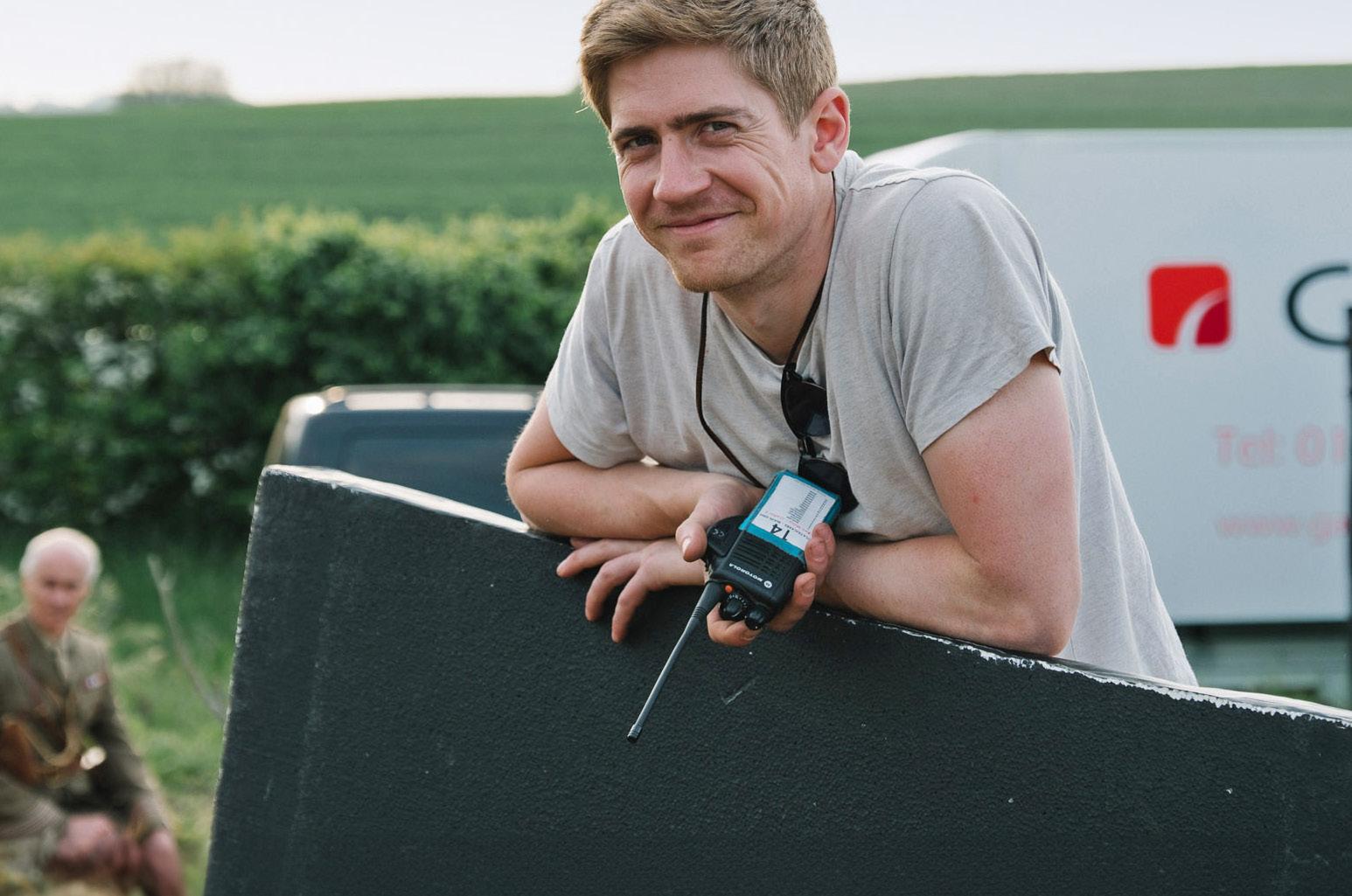
I put LED on someone it just looks plasticky,” he says, “and to my eye, when I put a bit of natural muslin in front of it, it breaks that.”
His unique grip trick is to employ the boom poles normally used by sound crew. “They’re super light,” he explains. “They’ll go on a lightweight light stand with just a superclamp, and they’ll extend a decent length and I can clip on muslin… so I can get myself an 8x8’ muslin with almost no kit.” Adding black and white bedsheets provides plenty of other options with low cost and great portability. “All you’ve got is a backpack with a sound boom stuck into it.”
Dawson uses several apps on set, but highlights one called Windy. “Technically it’s a windsurfer’s app, I think.” He explains that it provides “particularly detailed and accurate wind reporting, so if you’re putting up bigger textiles or anything like that it can be really useful to have.”
Weather is also a concern for New York-based Jennifer Scarlata, gaffer of The Marvelous Mrs. Maisel. Her go-to fixtures include the Vortex range from Creamsource; “bright, punchy LED full-colour units that are also waterproof. I love using these in lifts or for moon boxes. We deal with a lot of weather out here so there is peace of mind that they are waterproof.”
Scarlata frequently uses Astera tubes, tungsten Fresnels, ARRI SkyPanels – “The S360 is great for a large soft source for day exteriors when you don’t need the push of an 18K” – and LiteGear LiteMats, that she describes as “very lightweight and great for rigging on location in New York.”
“I’d always have LiteMats,” agrees Ben Millar, gaffer of Lady Macbeth and the recent Detectorists special, “and [tungsten] 650s, and maybe a Source Four. That to me is such a simple combination of stuff, so fast, very good quality of light, and just lightweight and tiny and not very expensive.” He says of Source Fours, made by ETC, “They can do something very, very specific. You’re able to throw a very controlled piece of light a very long way.”
Millar has a custom-made textiles kit to fit 3x3’ frames which allows him to
bounce, soften or cut light with a relatively small amount of equipment, not unlike Dawson’s backpack set-up. “I would use that on a big commercial or to light a big actor’s close-up, but I’d also have that in my bag if I was doing a documentary film and we’ve just got one LED panel light… You could do a whole job without any lights; you could do it with just practicals and textiles.”
Although Millar has a light meter, he only tends to use it for green-screen work. Instead he prefers to carry a compact digital stills camera “with manual settings so that you can emulate what the A-cam’s going to be doing. Even if it’s rough it doesn’t matter for me. It’s just getting a feeling of the stop.”
Californian gaffer
Mina Stollery has a different approach.
“When I’m on set, my meters are absolutely critical to the work I do,” she says. “The past few films I’ve done have only rarely been able to afford an operator for our DPs, so proper, consistent, exposure is something that I’ve had to monitor constantly.”
Stollery requires a “flexible and fast” lighting package for the small- to medium-budget indies that are her stock in trade, like Fairyland This includes many of the LED fixtures already mentioned, plus more traditional units. “I round the package out with a couple of big HMIs and tungsten. I always love having a selection of peppers to float off camera as an eye-light, and nothing beats the feel of a T12 or larger tungsten unit at night for me.”
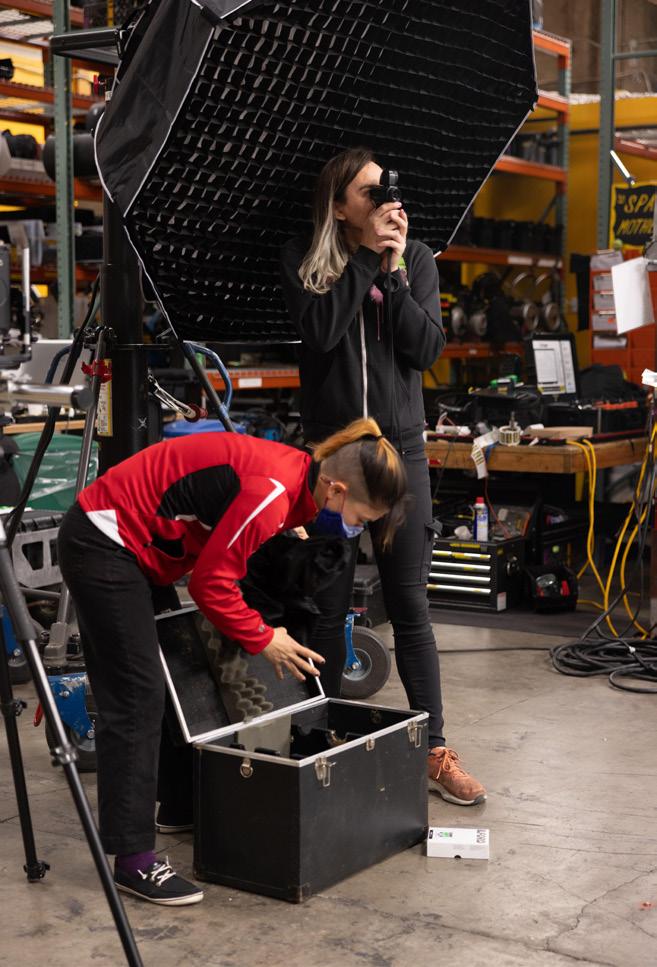
Stollery has adopted a custom fixture she first implemented with John Lacy for a scene in an ‘80s punk venue in Freaky Tales “We ended up taking a bunch of old par cans, cutting a few notches in the back, and then we were able to hide Fiilex Q5s in them almost seamlessly. We could have period fixtures in the shot, but then had the flexibility of RGB and wireless dimming control.”
Cullum Ross is also a fan of Fiilex, often turning to their P3 and Q3 Fresnels. “They’re fantastic lights and of course completely colour tuneable.”

Asked what his go-to fixtures are, Ross – whose credits include Man vs. Bee – offers: “I’ve done a lot of documentary lighting (and camerawork) in the past, and nothing quite beats Dedos… You can key with them, you can fill with them, you can bounce them, they’ve got great optics on them.” Having a keen interest in sustainability, he notes: “These days they’re LEDs.”
A favourite tool for Ross is the Gaffers Control, a wireless lighting console made by Spots Unlimited. “It fits in a very small Peli case,” he explains. “It uses something called LumenRadio which is an open-source lighting control protocol and it has hundreds of different personalities or fixtures in the desk, and it can run simple cues and it’s reliable.”
Jakob Ballinger, gaffer and founder of The Light Bridge, agrees. He doesn’t like to use phone apps to control lights because the bright screen affects his ability to

judge the mood and exposure of the set. With the Gaffers Control he can close the lid and operate by touch. “I can play around with it and I’m looking at the monitor or I’m looking at the set and I know what I’m doing,” he says. “Tungsten,” is Ballinger’s simple answer when asked what fixtures are essential. “We cannot get that colour [from LED bulbs]. It’s just so special and beautiful.” He describes a custom-made fixture consisting of multiple candle bulbs in an old Kino Flo housing. “I first started doing that when we were shooting Ludwig II,” he explains. “They always had hundreds of candles around. That is interesting but the flicker is also an issue.” His custom fixture added a consistency to the light.
“Another universal thing that I love is shears,” Ballinger continues, “having our own cloths for the windows… different patterns… It just breaks it up beautifully, because what we’re fighting these days the most is it’s become very technical, the lighting… I think the most fun part these days is to figure out how to get something funky in again.” n

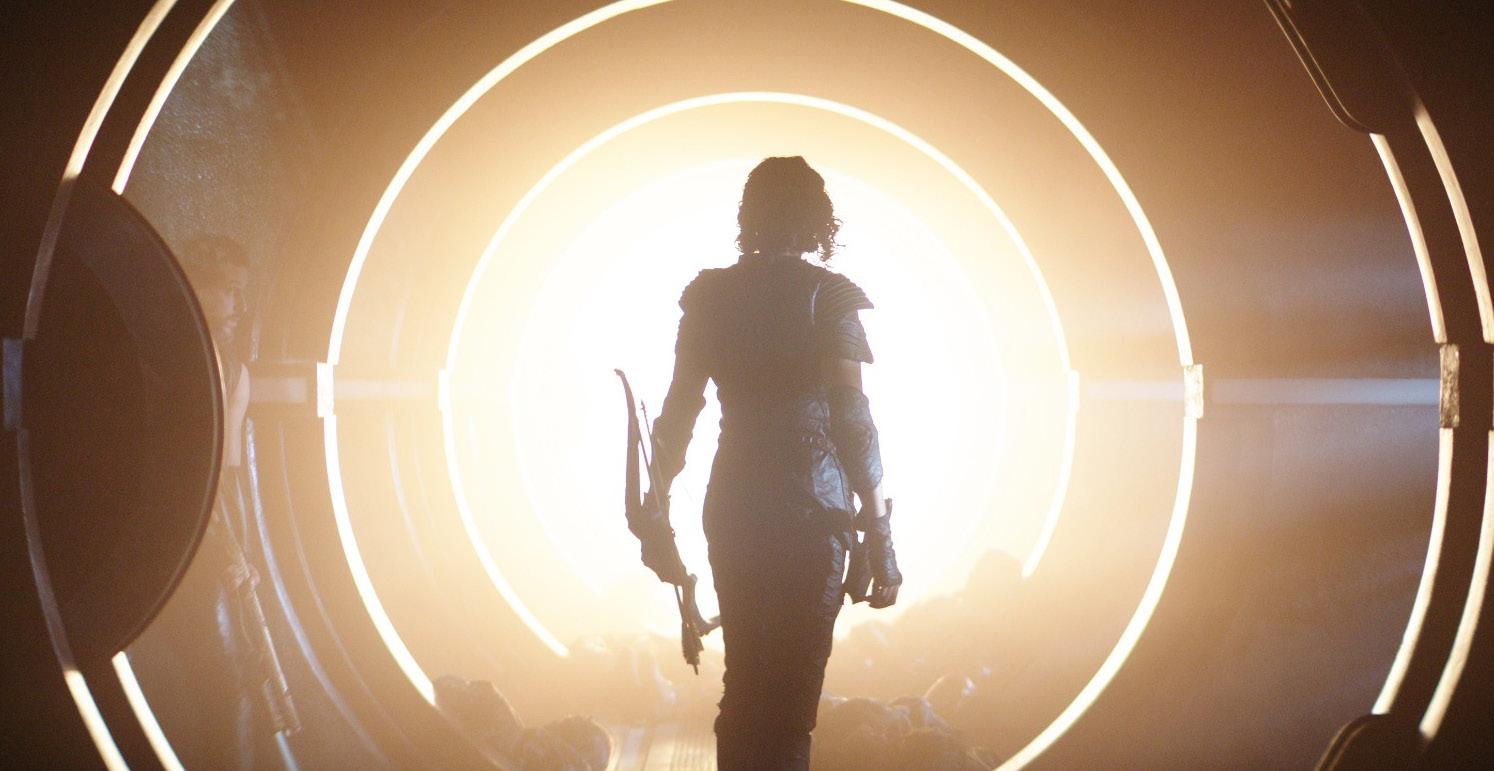
There’s a certain subset of lighting techniques that film schools can’t teach. Cinematographer Owen McPolin ISC sheds some light on the creative thinking and resulting methods used when illuminating spaces.
Even the highest-end shows will eventually present a camera team with problems which require a solution nobody has ever used before. Owen McPolin ISC has been shooting mainly for television since the late ‘90s, with recent credits including episodes of Penny Dreadful, Ripper Street and Shadow and Bone. He tells us that even the best-prepared production might occasionally provoke desperate measures.
“Because of the world I work in - TV shows, eight or 10 episodes long - there’s usually a long period of prep. You have a period of time when you can decide what you’re going to do in a particular circumstance, and sometimes that can tie you down. You don’t know if it’s going to work - you hope it will. On Shadow and Bone, a few years ago, shooting in Budapest, there’s a scene where our hero is tracked to a forest which was in a large warehouse.”

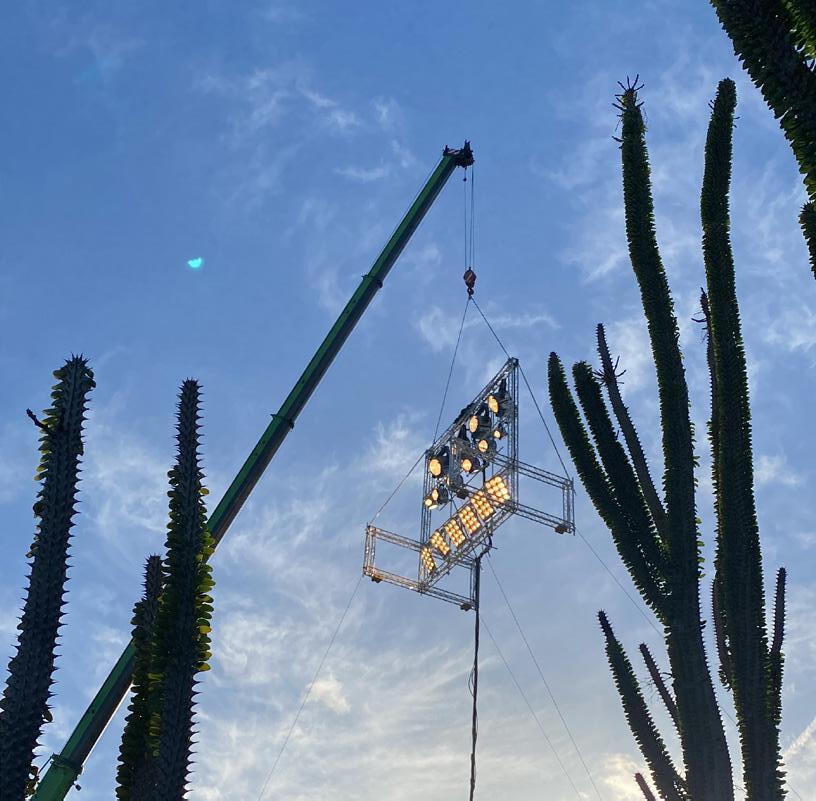
“It was snowy, a nighttime sequence,” he continues, “a scene where the lead character and her romantic interest take a moment to sit down beside a fire, or in this case light she’s developing from her hand. The director said this is fine, but is there anything we can do that would give us anything else? We thought, ‘Okay, what are we going to do?’ I could just bring
in a T20 or a T12 for sunset - that’s quite romantic. But it’s too close to the backdrop; we’ll see the lamp. Then we thought let’s just cut a hole in the cyc. We got a Leatherman off the camera assistant and cut a two-footdiameter hole, put some black behind it, and rolled the light in.”
Chagrined production designers aside, McPolin describes this sort of last-minute decision as encouraging creative thinking.
“This has only happened in the last few years as I relaxed more, becoming willing to go to the director and say ‘are we missing the trick here, are we approaching this in a more formulaic way’ - is there something that instigates something in the performers or direction... and it might not even be related to the initial suggestion, but it instigates a process of thought that sometimes we lose by being so rigorous to our plans and forethoughts.”
Sometimes, innovation can coincide with disaster recovery. On a production to be released later this year, McPolin was required to turn day into night on cue: “We shot it in Lanzarote, in an open-air cactus farm, and we were talking about it for ages. We thought, ‘What if it’s evening, then we have a chance,’ so we mounted a SoftSun and eight, maybe 12 T20s on a rig which would create really massive sunset backlight. We’d have three large backlights, each one on a large crane, depending where we were looking. Each box contained about 40 SkyPanel S60s, and we’d crossfade from the SoftSun and T20s to the overhead softbox. And it worked!”
But things were soon to become complicated. “We had three camels, 150 extras and all our key cast, and all our backlight set up. It was all going fine, then one of the camels broke loose from its animal handler and ran out of the cactus garden at speed, hitting the water main with its hoof. A huge jet of water emanated from the water main, scattered the extras, flooded the electrical distribution and all the lights went out.”
McPolin reports a meaningful exchange of glances between himself and the director. “I said, ‘Don’t worry, it’s fine, we’ll get the cables out of the water and retrieve the camel.’ About an hour later the DIT tent was moved away from the flood and we were back at work. If it all went smoothly it’d be so boring!” n

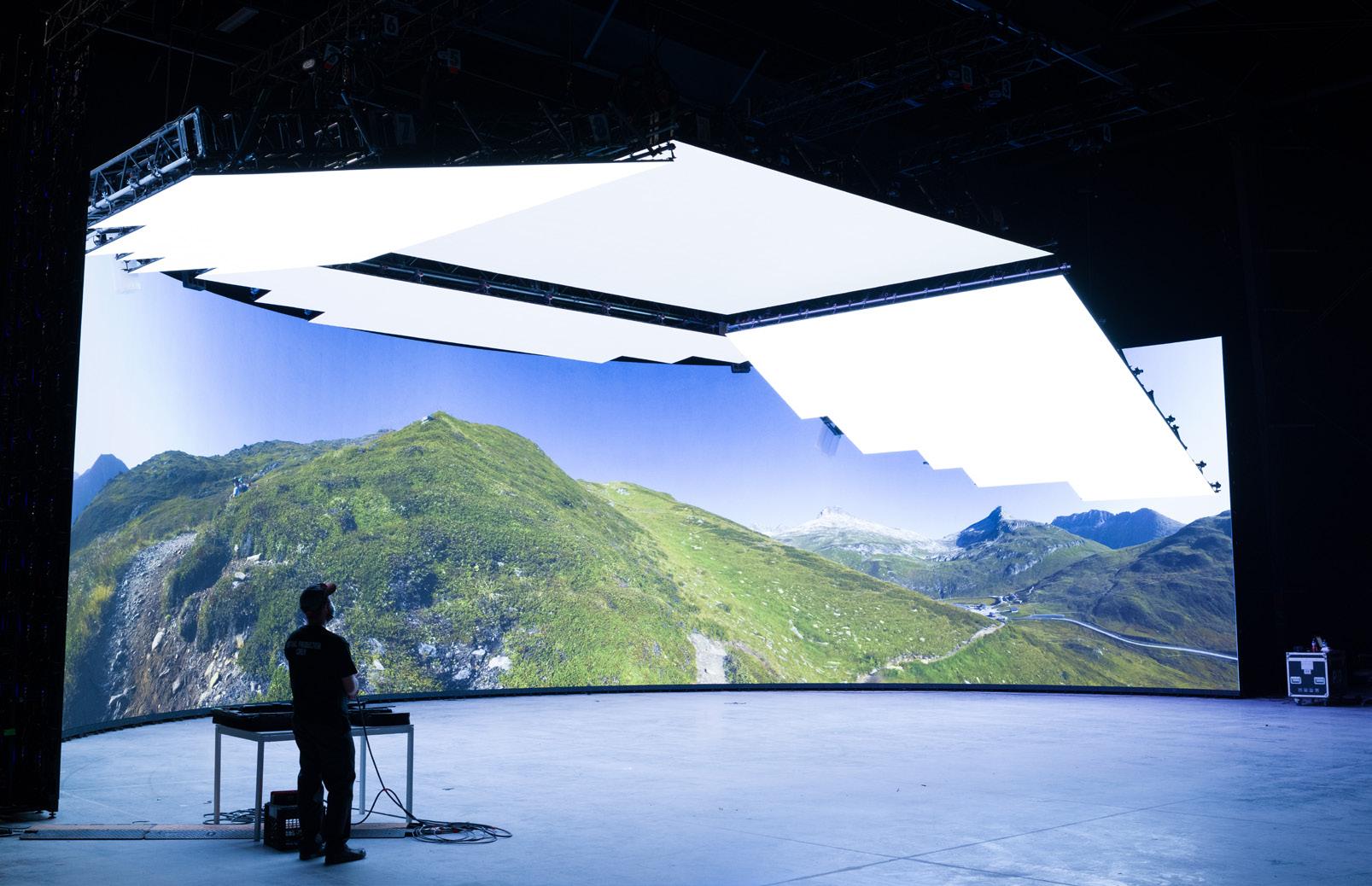
Sunbelt Rentals is among the companies making a large-scale investment in energy saving lighting to help productions to meet their carbon reduction targets without compromising on lighting quality.
Advances in LED Lighting technology has progressed exponentially in recent years. This in part is due to leading equipment manufacturers consulting with industry gaffers and DOP’s to ensure they produce products suitable to support the art of filmmaking. These technologically advanced improvements provide game-changing solutions, that supports a faster, more efficient workflow on set.
So, it’s no surprise that sustainable film production is rapidly picking up pace with production teams everywhere supporting the move as they look to cut emissions and costs, without compromising on innovation and quality.
One of the easiest and most-effective means of reducing carbon emissions is to switch from high carbon light sources, such as tungsten lights, to LED lighting. The emergence of LED and energy saving lighting has made a real impact on the industry.
Making the switch to energy saving lighting can reduce carbon emissions on productions by around 15%. Some organisations have even estimated that LEDs use around 75% less energy than other forms of lighting. Ultimately, shoots should be cheaper to run with LED lighting. Energy efficient lighting sources such as LED lights not only consume less energy, but advances in colour science and cooling have allowed LED technology to compete with traditional fixtures, so that the lighting quality and craft of image capture during filming is not compromised.
Key companies are making large-scale investment in energy saving lighting to help productions to meet their carbon reduction targets without compromising on lighting quality. Sunbelt Rentals, which offers one of the widest ranges of lighting rental equipment in the industry, has invested over £4 million in state-ofthe-art lighting equipment in the last year alone.
Albert estimated that “an average hour filming equates to the carbon footprint of a
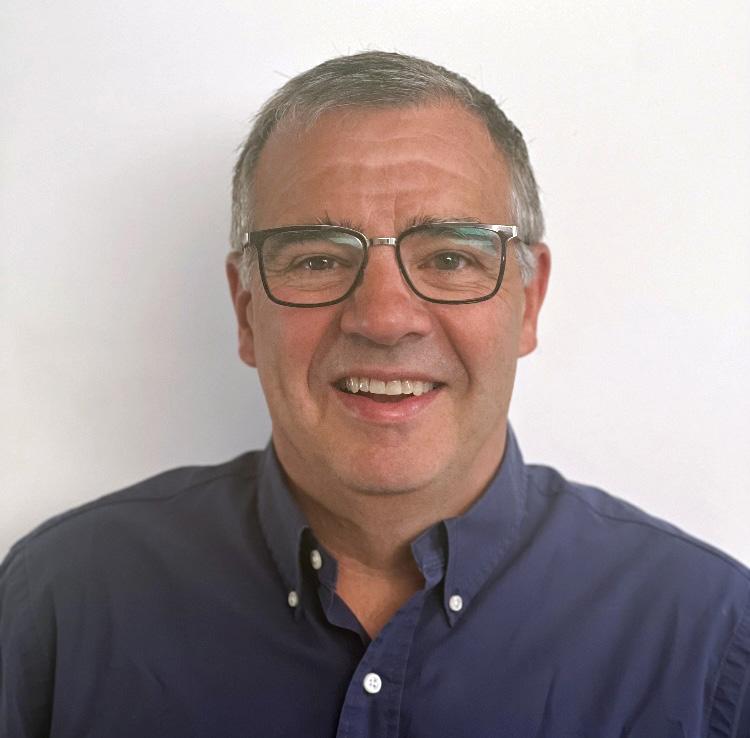
Commenting on the investment this year, Mike Pollard, Managing Director of Film and TV at Sunbelt Rentals, said: “We pride ourselves on providing high-quality, innovative lighting equipment to productions of all sizes. Our longstanding relationships with key manufacturers such as ARRI and Creamsource are essential to developing our product portfolio and as such were pleased to be able to offer the very latest LED lighting products to our customers.
“With intelligent control options, the LED lights can be used in conjunction with a lighting control app which allows lighting to become faster, easier, and more intuitive than ever before. Not only do these products speed up the lighting workflow, but they also allow more time for the craft and creativity.”
Sunbelt Rentals has made significant investment into its ULEZ Stage 5 compliant custom vehicle fleet, which is designed to provide on set solutions for location work across the UK.
Sustainable practices in filmmaking have continued to accelerate since the pandemic, with studios and media houses leading by example. Sunbelt Rentals is supporting this change through their ongoing environmental and social value commitments, Our Planet is Sunbelt’s ESG strategy. With sustainability, innovation, and business governance at the heart of their plan, Sunbelt Rentals are committed to driving emissions down, helping customers to achieve their sustainability goals today and developing tomorrow’s essential skills and jobs. Education and engagement are two key factors that will help drive sustainability efforts. Together we can drive the culture of sustainability and make a real impact on the environment. n
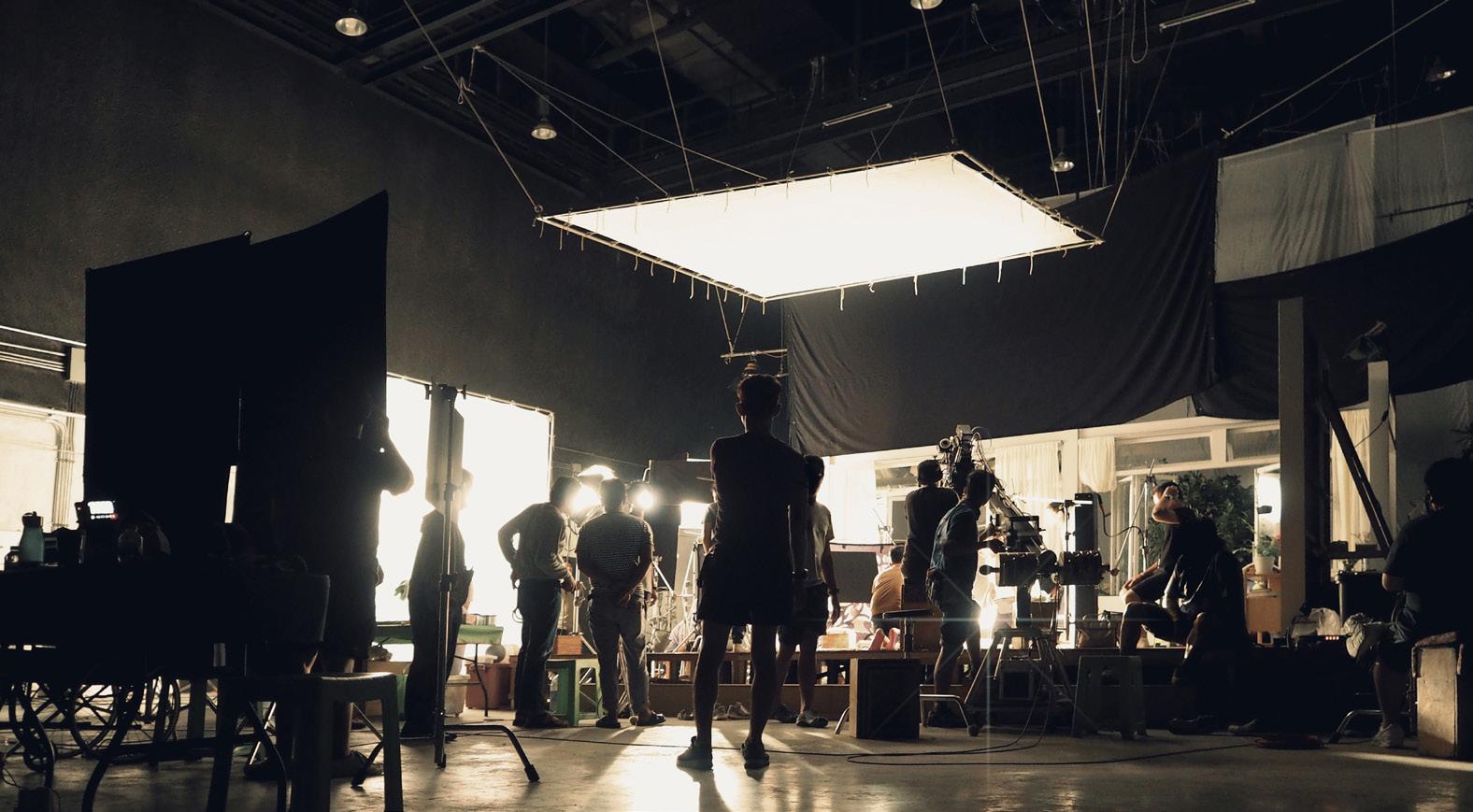

Sustainability must be factored into all aspects of a production from the outset, from environmentally friendly ways to light a show through to finding greener ways to travel.
Some of the things a film or television production can do to improve its sustainability are popular with the production office. Less diesel burned means both less pollution and smaller invoices. At the same time, a cinematographer’s preference for tungsten light, or a production’s need for an exotic location, might collide uncomfortably with the concept of controlling carbon emissions. Gaffer Cullum Ross reports that it’s an issue the industry has been taking more and more seriously.

Given the enormous amount of material currently being shot in the UK, more and more productions are being forced into spaces which were not designed as studios, and which might not have enough wall-socket power to begin with. “On a lot of these stages,” Ross begins, “the stage exists, the set exists, the roof exists, but there might not be any rigging overhead and there may not be any power. Productions are moving into spaces which are retrofit. It might be a distribution warehouse but there’s no power there and you have to bring in an energy solution.”
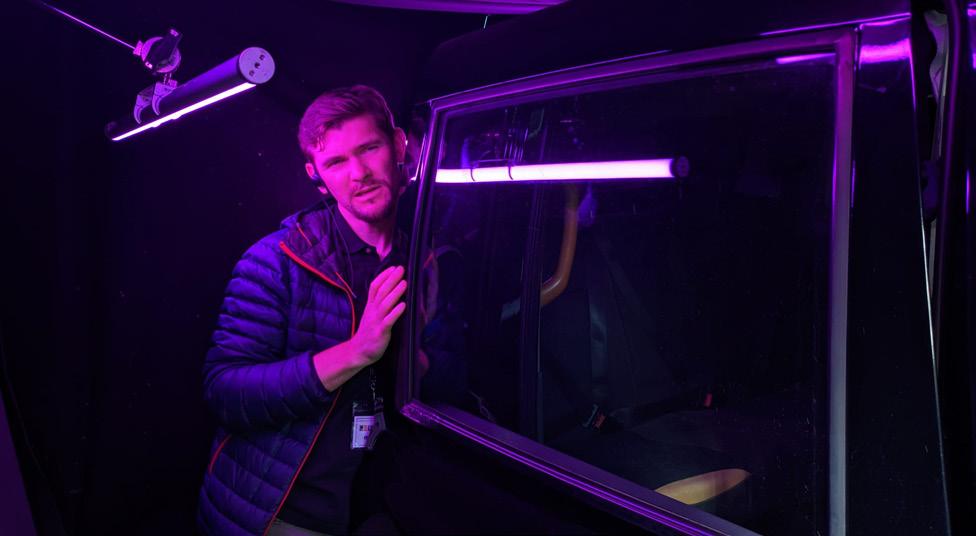
Sheer power consumption, Ross continues, is only part of the equation. “It starts the moment I get hired… we have meetings with sustainability coordinators, and we talk about not just how we’re going to light a show, but how we can travel greener, how we can reuse things, perhaps use recce buses rather than we all drive there individually.”
At the other end of the technological scale, Ross has also seen hydrogen-fuelled power generation begin to emerge. “We’ve been doing Bridgerton - that’s been our life for the last 12 or 13 months - and we’re trialling hydrogen generators. This was a company called GeoPura, part of Siemens, which provides on-demand grid backup.”
Hydrogen power is an emerging technology which makes sense in fairly specific situations. Ross confirms that it’s been successful, and not only at powering lighting. “We’ve been trialling it to run our unit base – all the honeywagons, the makeup trailers, and so forth. For the last eight or nine months they ran off hydrogen. In theory the unit we had was 200 KVA, so if you went all LED, one of the jobs I did last year, Man vs. Bee for Netflix, was a hundred per cent LED and we could have done the whole thing off a hundred amps.”
With LED lighting now an entirely established part of film and television lighting, Ross reiterates the common demand for ever higher-power lights which match the performance of the incumbent. “I’ve used everything – Fiilex, loads of Creamsource, V8s, V4s. I’m most interested in the Fresnel range, anything with a lens. Velvet have their own LED Fresnel which again seems fantastic - you can run it off a battery, use modifiers, but you can’t use it outside yet.”
Perhaps the most important advice Ross has, though, is to look at the bigger picture. “A lot of us now drive EVs (electric vehicles), and there might be a diesel generator from which we charge up while we’re on set. At some point we’re going to reach parity with that: consider the costs of production [of the EV], the lithium mining, where we derive the raw materials from. At some point we’ll reach parity with internal combustion engines. There’ll be a net neutral kind of target, there’ll be some kind of offsetting.”
Details matter, Ross says. “It all ties into the efficiency of the whole system. Do your cables need to be three hundred yards long - is your generator noisy? Can we have a big battery, a flatbed 200KVA battery and have it wrapped out overnight or charged at off peak rates by grid power? The message is we’ve all got to do our bit.” n
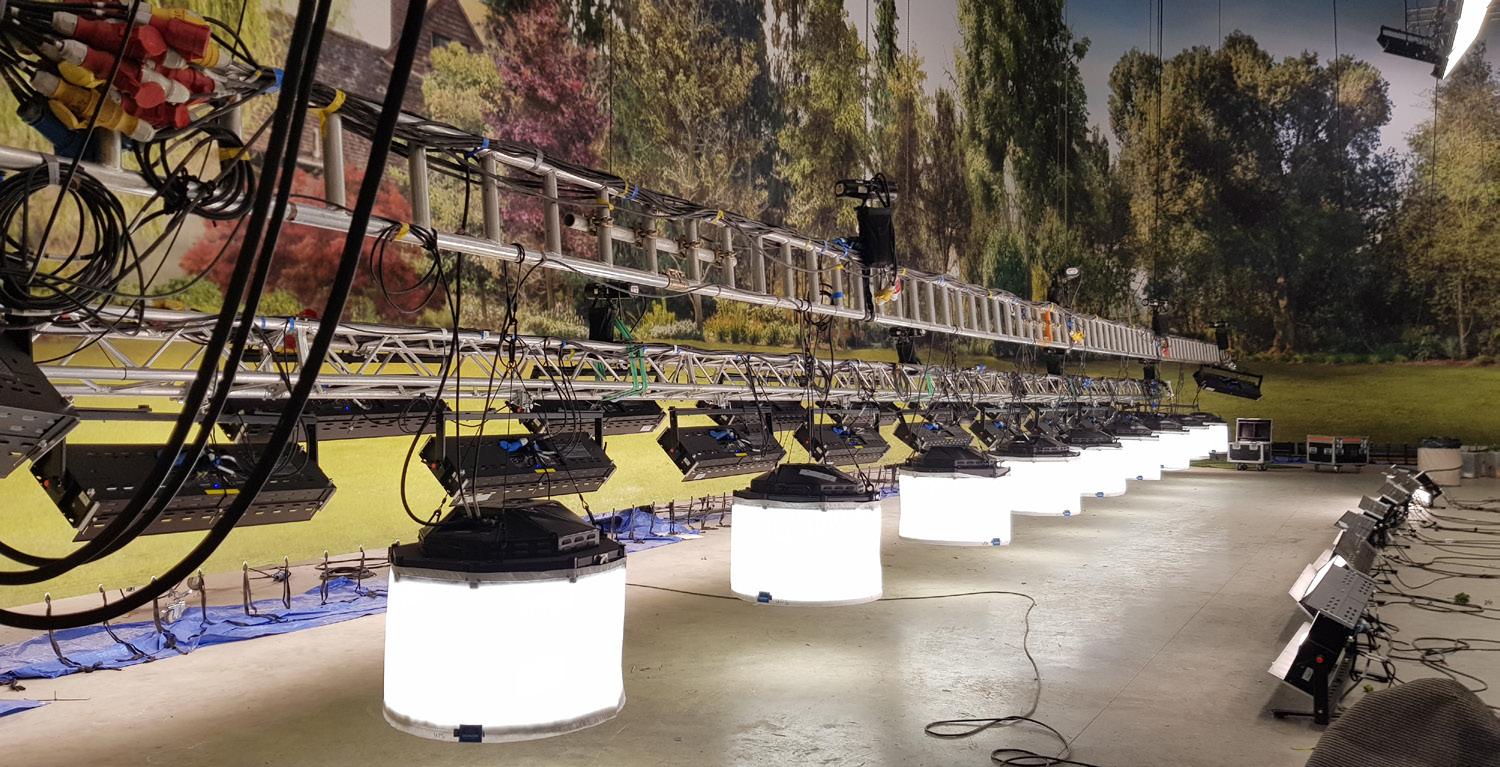



Child actor turned gaffer and businessman Harlon Haveland shines a new light on his career.
Family has played an integral role in shaping Harlon Haveland’s career, both in front of and behind the camera. His captivating journey in the film industry began with an iconic childhood role. Back in 1990, at just eight years of age, he was cast by chance to portray one half of the infamous East End gangsters in the critically acclaimed The Krays. Haveland brought Ronnie to life, while his real-life brother played his on-screen sibling, Reggie.
Remarkably, destiny had more surprises in store for Haveland, as he happened to grow up just a couple of miles from the actor who played the third brother, Charlie, in the film. “He grew up in Hampton and I grew up in Sunbury,” he says. “I bumped into him when I was about 15.”
It was this early exposure to acting that instilled in him a love for the world of cinema and a desire to pursue a career in the industry. However, instead of continuing along the acting route he decided to follow in the footsteps of countless relatives who established successful careers on the other side of the camera.
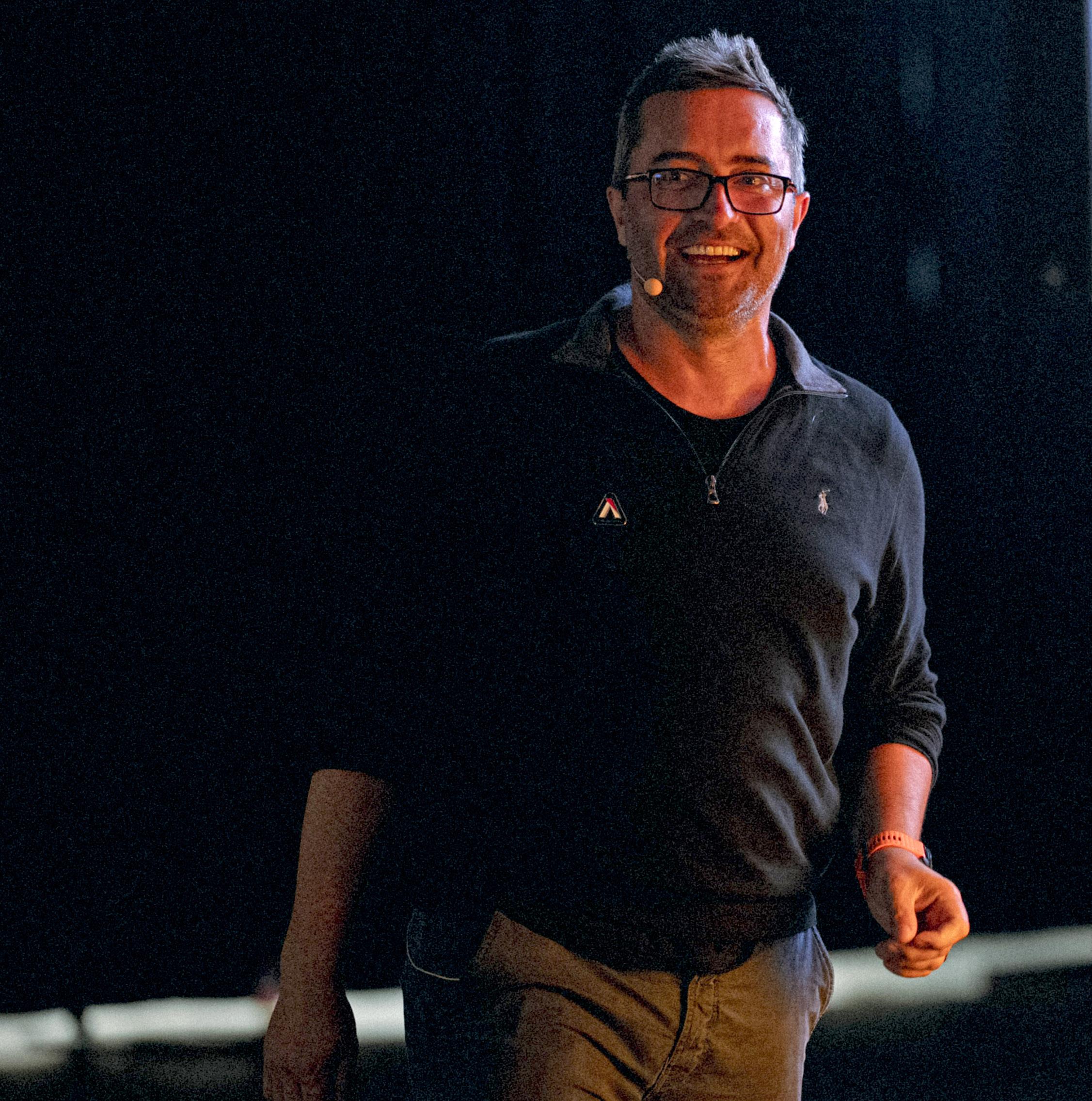
“My grandfather was a first AD who worked on the James Bond films, my grandmother did hair and make-up, my uncle was a first, my father was a first, my brother’s a first, so I joined the circus,” he says.
At the age of 17, Haveland got his first taste of the industry when he was invited to work a show called Harbour Lights, the BBC One drama starring Nick Berry.
“My grandfather was working as a location manager on the series down in Dorset,” Haveland says. “I fell in with the electricians and then they offered me a job. It was then that I knew that this is what I wanted to do with my life.” Therein started a long and illustrious career in the lighting department.
Haveland knew he had to learn the basics of the trade first, so he secured an apprenticeship at the renowned Michael Samuelson Lighting at Pinewood Studios in 1998, where his grandfather had worked on the aforementioned Bond movies. Since then, Haveland has established himself as a sought-after gaffer, with a CV boasting a list

of prestigious projects such as Guy Ritchie’s Operation Fortune: Ruse de Guerre, Luther: The Fallen Sun, No Time to Die and the upcoming Star Wars series, The Acolyte for Disney+.
Up until late last year, Haveland explains that he had a very different approach to lighting. “I always used to use the old HMI lights and tungsten lights,” he says. “They were good, but using them was usually a laborious task. If you want to colour-correct them, you have to add gel. If you need different colours, you have to change the gel. Then, if you wanted to dim the lights you have to put scrims in them. The lamps are hot, bulky and use up a lot of power. It’s not a good look when we’re trying hard to make everything green and sustainable.”
However, a transformative moment occurred when Haveland landed a job on the film version of the hit BBC series, starring Idris Elba and Ruth Wilson. It was there he first saw the brand new Aputure LS 600c Pro, a cutting-edge lighting fixture and the manufacturer’s first-ever full-colour pointsource light fixture.

“I was immediately impressed by the brightness, the size, weight and colour spectrum of the light,” he continues.
“You control everything from a desk – you can change colours, intensity, everything. I went from having to do everything methodically to using something that would do what I wanted without me even touching the actual product.”
After Luther had wrapped, he flew to Japan to film Sunny, the dark comedy on Apple TV+. Haveland saw how the Aputure-made LS 600d Pro, the first Light Storm fixture, was such a big hit in the Far East.
“The Japanese crews embraced these lights enthusiastically,” he says. “They work differently out there. Everything is powered by battery packs, so because of the low wattage I could achieve what they wanted with minimal effort and to good effect. In fact, I would say they were ‘lamp du jour’ out there. The Japanese don’t do it the same as the British, they don’t necessarily have a pre-rig crew. So, the light being lightweight and nimble allowed me to deploy it immediately where and when I wanted. We used them all the time.”
Haveland’s next job was The Acolyte, part of the Star Wars franchise and set at the end of the High Republic era before the events of the main films. The job saw him work with James Friend BSC ASC, renowned for his Academy Awardwinning cinematography in Edward Berger’s All Quiet on the Western Front and recipient of the BAFTA Award for Best Cinematography.
“I introduced the LS 600c Pro to James and he loved what it could do and how it sped things up,” says Haveland. “The lights’ utility and adaptability made them an essential tool in the lighting repertoire. James thought it was a great piece of kit.”
Haveland says he’s also impressed with the case the kit comes in, because everything fits in it so compactly. “I don’t how, but it does,”
Haveland, along with cinematographer James Friend BSC ASC, hosted the first UK Aputure FLEX (Film Lighting Experience), a free-to-attend lighting workshop and masterclass (Credit: Fran

he adds. “Although it’s so well organised it takes an attempt or two to nail it.”
Whilst there are other lights on the market that can do a similar job, Haveland says the alternatives, do not match the brilliance and compactness of the Aputure ranges.
“The competitors’ products are larger and lack the same level of brightness, making them less appealing for my projects,” he says. “A DP recently asked me for a recommendation, and I told him to go for one of these.”
Haveland’s next project is The Diplomat, a six-part drama for Netflix and will be using the LS 600c Pro for that, along with the new Aputure Infinibar. Released in early spring, it can connect multiple one-foot, two-foot, or four-foot Infinibars together using 10 differently shaped connectors to create unique flat or 3D lighting shapes and designs. “These are so versatile, I combined four in a square and shine it through a full diffusion frame as a lovely key light,” Haveland adds.
Away from sets and locations, Haveland is the man behind Light Source Film, the largest database of qualified electricians in the British Isles. Starting out with 300 members when it launched 10 years ago, it now has 3,000 on its books. No doubt, they all have their own stories to tell when it comes to lighting. n

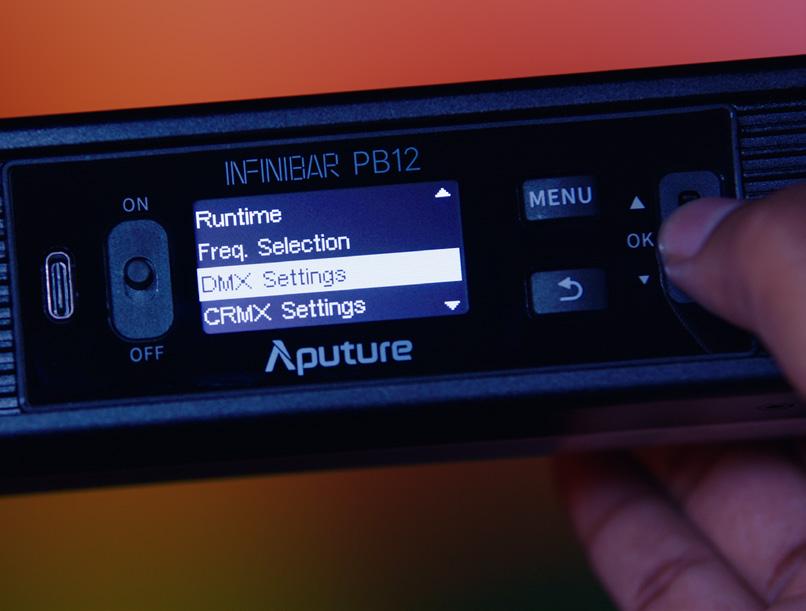

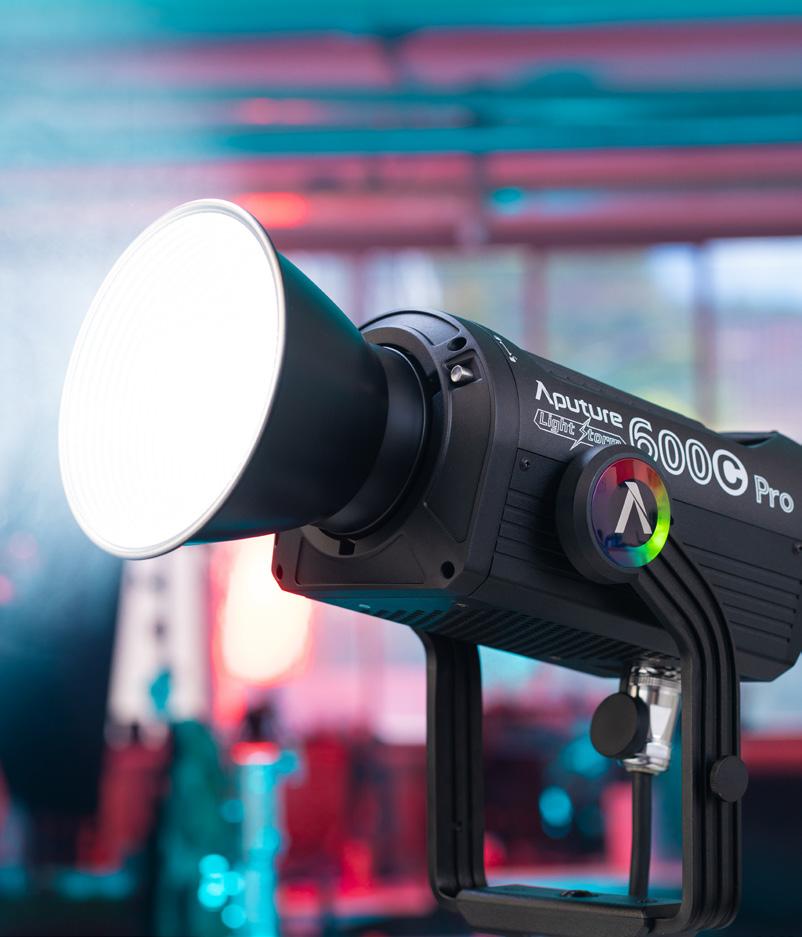
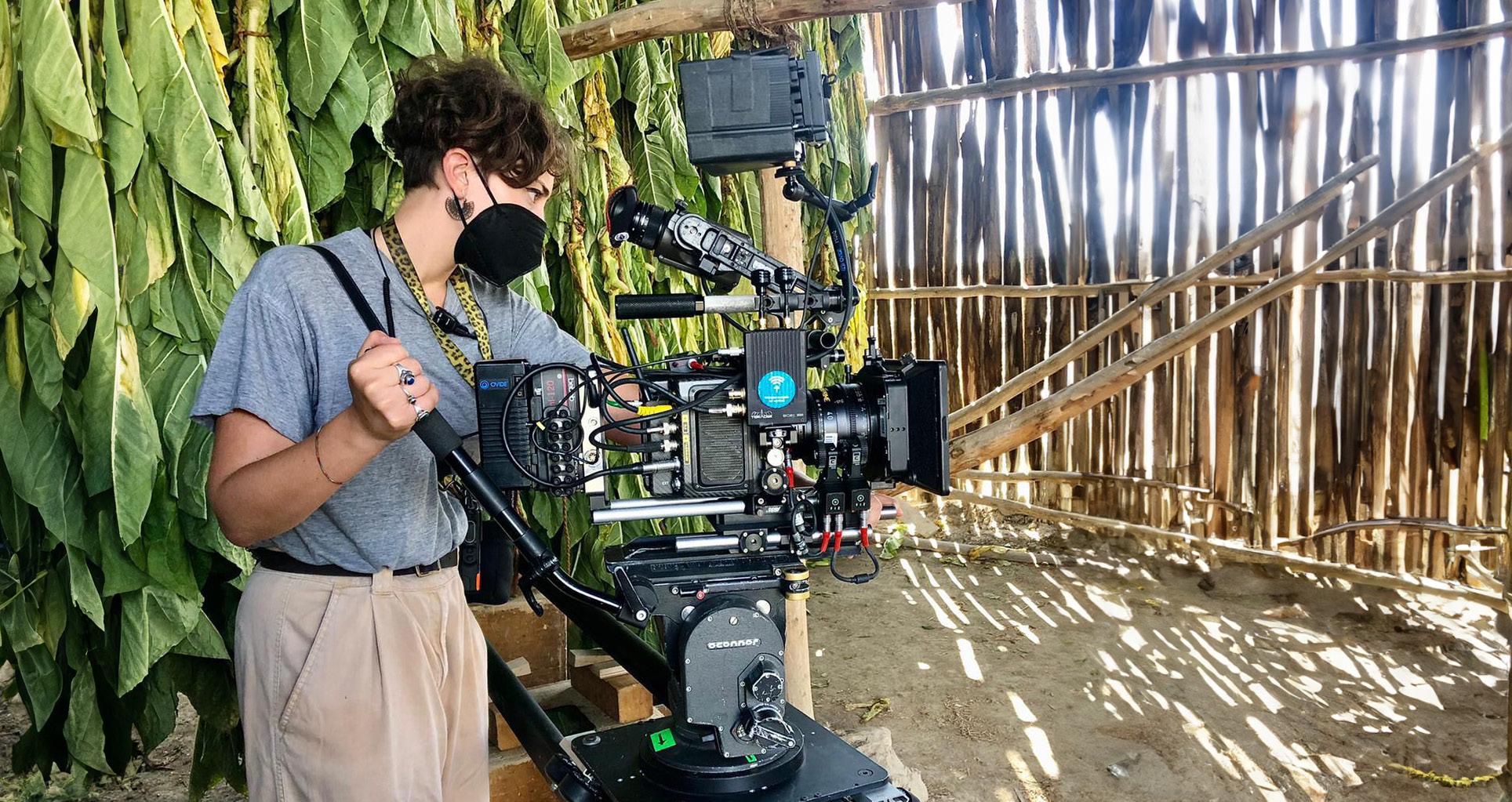
Beautiful but fleeting, natural light often presents DPs and gaffers with their greatest challenges.
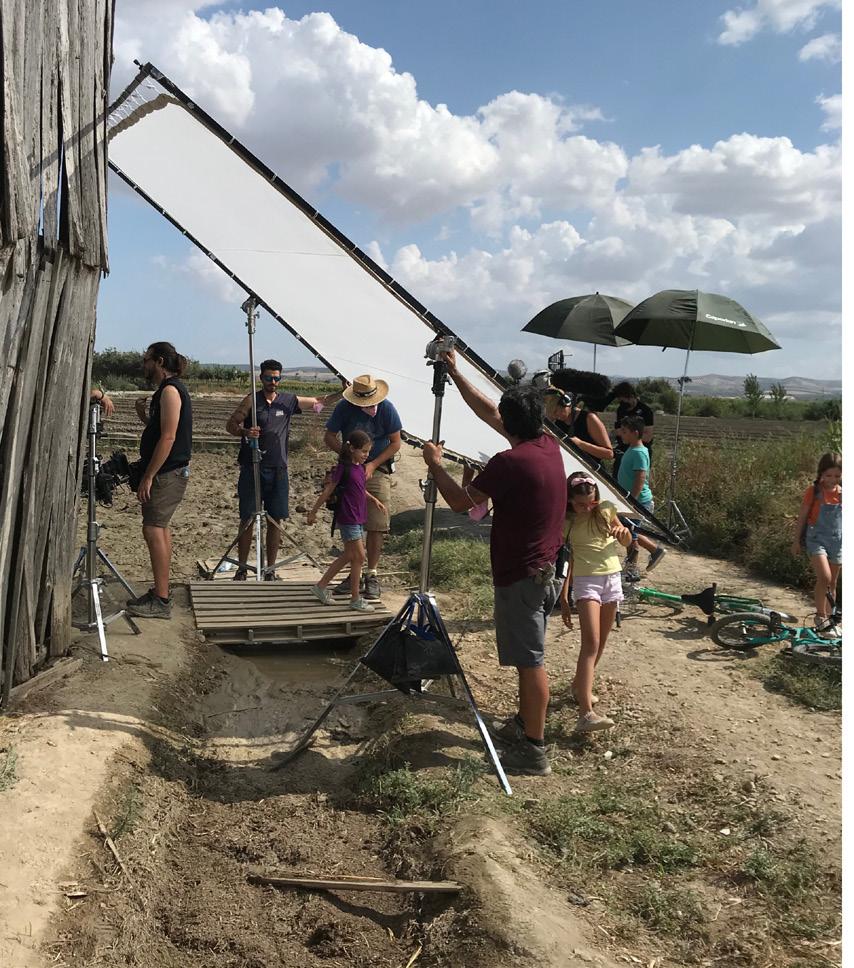

atural light is interesting because you can’t really control it,” states Roger Simonsz BSC. “You have to remain very flexible.”
Simonsz prefers not to use artificial lighting for day exteriors. “I’ve always tried to work with reflectors and diffusers… for the simple reason that if there is an atmospheric variation like a cloud comes in or you’re losing the light then at least everything moves together, because it’s all reflected off the main source.”
Gaffer Julian White offers, “What I would always have is a couple of telehandlers with 20x20’ either bounce or sunshade, so positive or negative, or both – one of each, so you can either bounce a big HMI into it when you need it, or you can shade the light when you need it as well.”
“One of the most extreme things I’ve done was on By the Sea, the Angelina Jolie movie,” says gaffer and founder of The Light Bridge, Jakob Ballinger. “Christian Berger [AAC] was obsessed by the blue of the sky… The whole rig was built in a way that I could take out the sun just in bits and pieces when we needed to, but we could keep the cool blue light from the sky.”
Ballinger highlights the importance of the Inverse Square Law. “The further the light is away, the more natural it’s going to look,” he says. “It’s also important for secondary light sources like bounces off the floor, off the ceiling, off the walls. If that original light source is so far away, everything harmoniously falls into place.” He points out that natural light often causes multiple shadows. “It’s everything reflecting off everything. [The shadows] all have different colours and different grades, and that’s what makes it look so beautiful.”
Day interior scenes require a careful balance of artificial and natural light. “As soon as you see a big window you think, ‘I need to put a big light through that,’” says White. “Well, you don’t necessarily need to do that. It depends on the room, the tone of the room, the colour of the walls, what we’re shooting, all that.”
“I’d rather use what’s in the space to shape the light,” remarks DP Alana Mejía González. This could be as simple as closing a curtain, or “maybe I just close the door a little bit, so it just cuts down the bounce on the wall that I didn’t need… When I ground myself in something that’s particular to that space, I will always do a better job.”
“The most important person when you’re trying to do any of this is your 1st AD,” says Simonsz. “At 12:32 that sun’s going to come through that window and that’s when we’re going to catch that moment.”
Gonzalez and her crew missed their window to shoot a golden hour close-up for Forastera, but the end result was even better than she’d imagined. “I was like, okay, one more shot and then I will have no light to shoot this! We struggled a lot in the grade, but it did become more interesting having to shoot the scene at blue hour, because [the actor’s] face was distorted in a way because of the lack of light.”
“I think the most beautiful light is light that has a character,” Simonsz muses. “I always take pictures of light that’s reflected, because you can use that. Sometimes even in the city you see somebody’s lit up and you realise it’s the reflection of a window on the fifth floor that just happens to catch that person – and you think, ‘Oh, I can use that one day.’” n
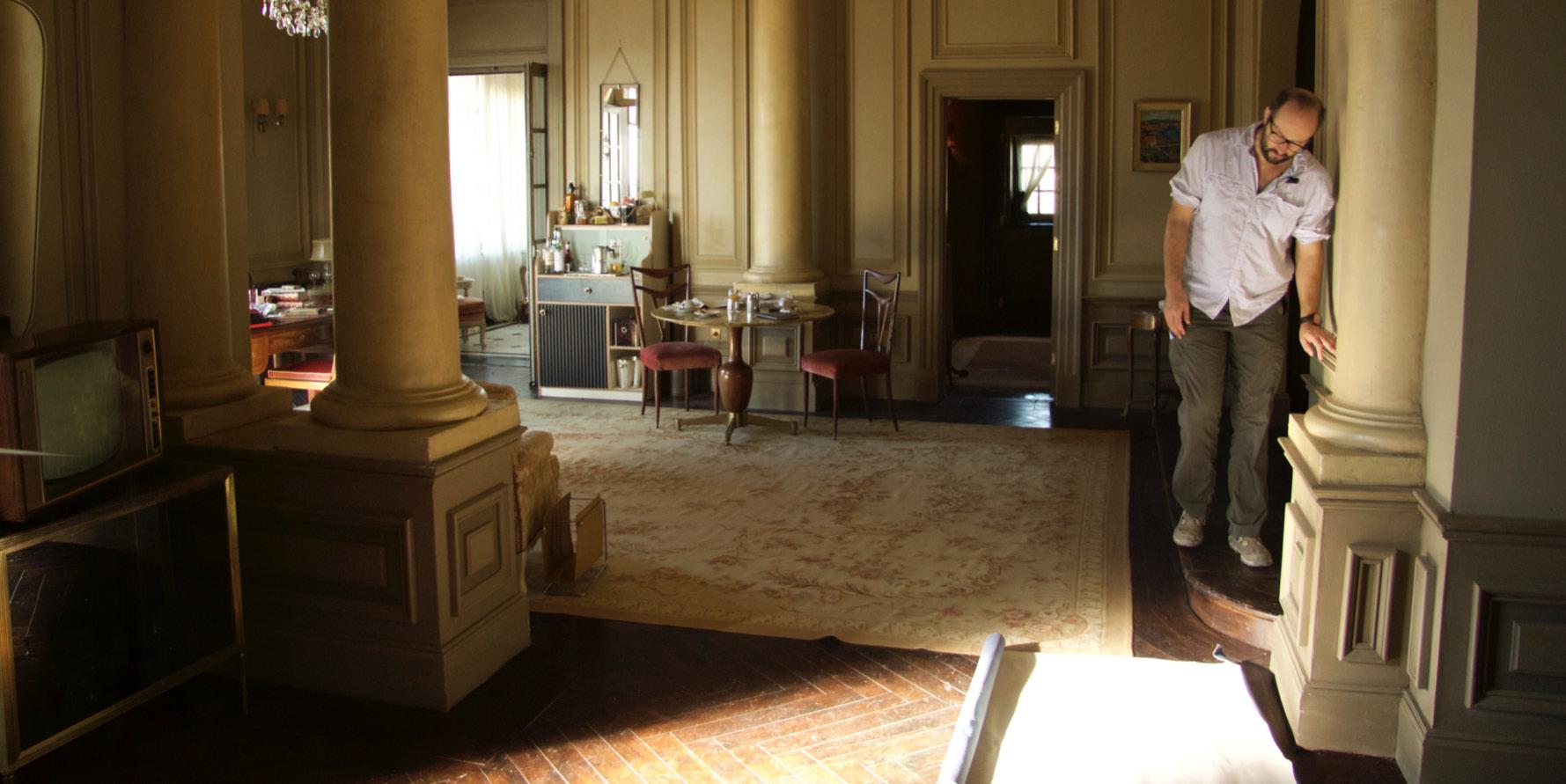


DP Hamish DoyneDitmas reflects on the fixtures of yore and how filmmakers can pair classic techniques with modern technology.
Film and television is an unusual art form in that much of the most respected work has been done with tools which are now only in use when people make a special effort. That’s a factor oil painters and violinists don’t have to deal with, but cinematographer Hamish Doyne-Ditmas has nonetheless found ways to bring some of the gloss of classic moviemaking to the modern camera department.
“I grew up with all the musicals, the Busby Berkeleys,” Doyne-Ditmas remembers. “I really do love that Hollywood lighting style, when they had 25 ASA film, and they used various kinds of open-faced units above the camera. But at the same time, they would really take care with the back light on the hair and everything else. Then, you get into the noir, and they’d take it one step further – people like John Alton.”


Bringing that approach into the modern world is easier, Doyne-Ditmas suggests, given a varied background of both main and second-unit work. “I’ve been freelance for 26 years. I started at a camera rental place, then clapperloading, as an AC and DP. I’ve done quite a lot of second-unit and three main-unit features.” That kind of background inevitably involves lots of variety. “I’m lucky to have
worked with some great names – with Janusz Kamiński, Phedon Papamichael [ASC GSC]and I’ve seen people lighting in different ways. On second units, I have to follow main unit... It’s harder to follow than to do your own thing.”
The differences between historic technology are sometimes large and sometimes subtle. “Originally, DPs used Klieg lights which were carbon arcs and the purity of that point source is striking,” Doyne-Ditmas continues. “Yes, they were unwieldy, and they needed a technical operator to make sure the rods were at the correct length. They generated a lot of heat. But the quality of the light was the closest to replicating the sun. Of course, we moved onto tungsten incandescent lighting and then xenon, and high intensity discharge lighting.”
While historic equipment is sometimes tacitly credited with some sort of inscrutable magic, Doyne-Ditmas is clear about the differences of technology and technique, particularly in the notoriously demanding regime of hard light. “I’ve done a couple of films that were fully tungsten. I got interested and went all the way back to the original days of the carbon arc and the very pure sources of light – tungsten lights that were over the camera. I found there’s a certain quality to a light that’s a long way away. A Source Four or a follow spot 250 feet away from the artist, that has a reflector and a lens… by the time it hits the person, it has a beautiful feel about it.”
An opportunity to put all that thinking to practical use arose on How To Date Billy Walsh, directed by Alex Pillai for Amazon. “I tried to light it with hard light. The director at first thought I was going to use soft light everywhere. On day four he said, ‘she looks so beautiful,’” DoyneDitmas recalls. “But nobody’s doing that anymore. People have gone down the LED soft light route. We had a ballroom sequence and I borrowed heavily from Janusz Kamiński’s West Side Story. I used tungsten follow spots and Source Fours and Parcans as well as some newer moving lights to add into the mix.”
“If you look back in time, at the work of James Wong Howe ASC, John F. Seitz ASC, Stanley Cortez ASC and Gregg Toland ASC, it’s wonderful that we can still use some of the technology they had at their disposal,” Doyne-Ditmas says. “LED lighting has its uses, but its efficiency and convenience, I feel, have taken centre stage. It certainly doesn’t have the glamour these older lighting technologies have. I love trying to recreate the magic, the colour. I don’t think people look back enough. They were the masters.” n
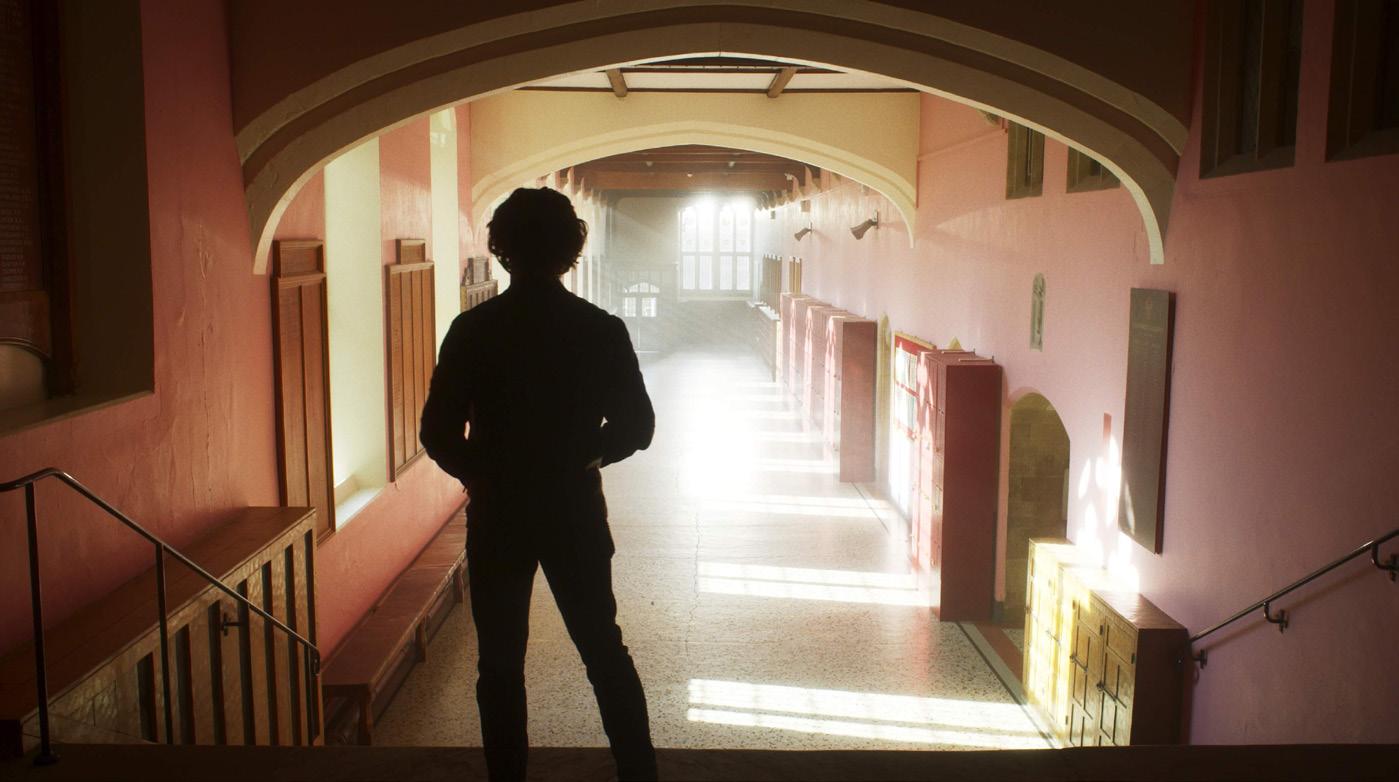
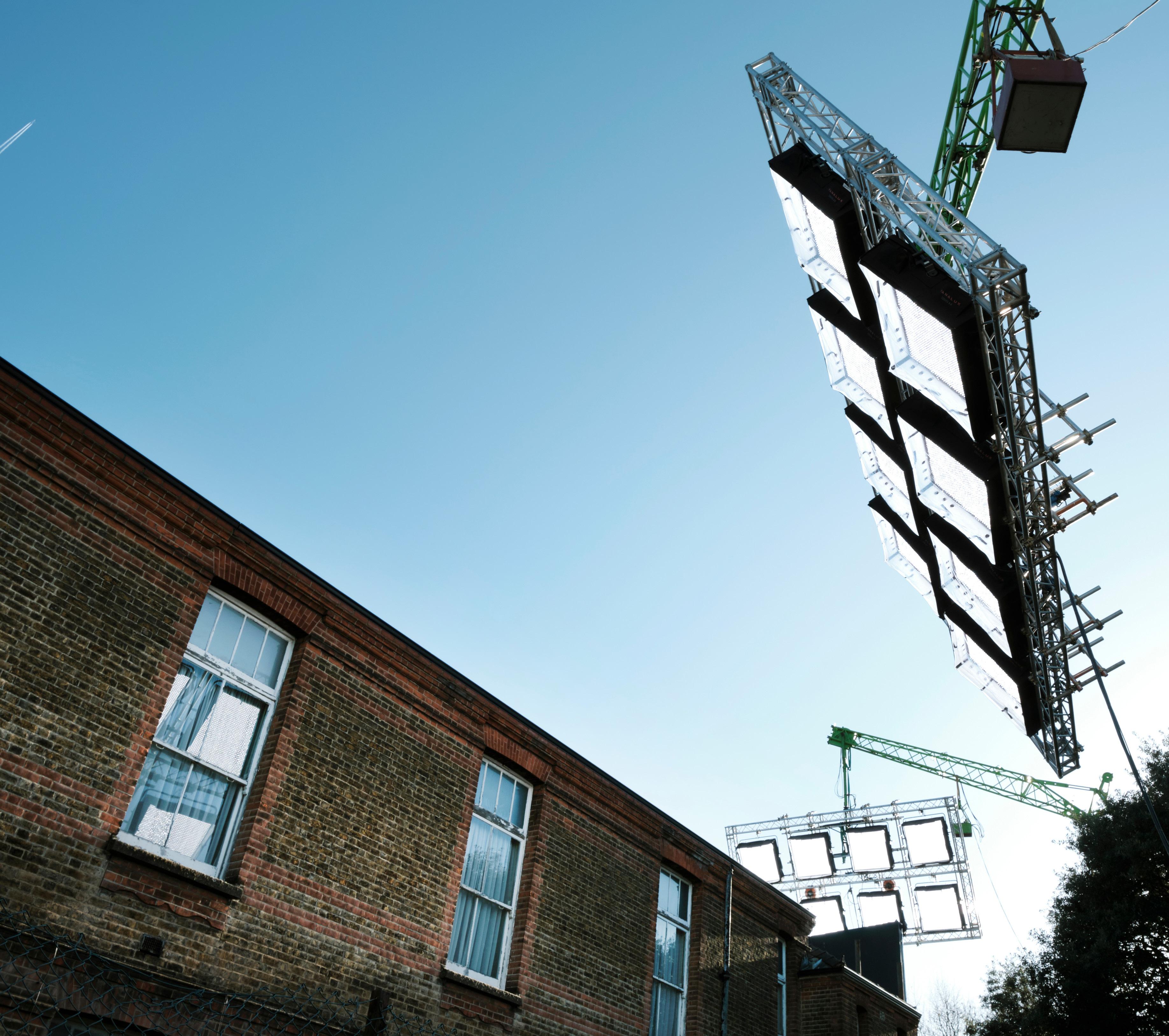
“When you’ve got a big job, Panalux has to do it,” says cinematographer Ben Smithard BSC. “I know they’ll always have what I need.” The lighting provider’s massive rental inventory includes solutions from all the major manufacturers backed with state-of-the-art services such as engineering support, textile manufacturing, and an unrivalled transport and power-generation fleet. Additionally, the company offers a range of proprietary innovations developed in-house and purpose-built to meet cinematographers’ creative needs, including the Panalux Sonara family of variable-white LED heads.
Available in 4:4, 3:2 and 4:1 form factors, Panalux Sonara incorporates an innovative LED array to provide incredible accuracy and control across a colour-temperature range of 1600K-20,000K. “What really sets Panalux Sonara apart are the quality of the whites and the breadth of the spectrum,” says Dave Amphlett, technical director for Panalux. “The unique LED array we use in Sonara produces much warmer and much cooler whites on the black body locus, enabling extremely precise control and accurate skin-tone rendering.”
Charlotte Bruus Christensen ASC and gaffer John “Biggles” Higgins were among the first to put Panalux Sonara 4:4 through its paces when they used the fixtures on All the Old Knives, and Higgins was quick to re-enlist the fixtures when he teamed with Sir Roger Deakins CBE BSC ASC for the period feature Empire of Light. “We used the Sonaras for a very big night exterior,” Higgins says of the latter project. “If Roger wanted to make it cooler, make it warmer, we had it, and the [native LumenRadio CRMX] links worked at an amazing distance.”
In addition to CRMX and a detachable handheld local control, Panalux Sonara offers wired DMX and Art-Net as well as a range of operating modes, including CCT, HSI, Gel, and x y coordinate. As Higgins notes, “If you have a practical light in shot and the cinematographer wants to continue that mood to light the actor, you just take your reading from the practical in x y, and you change the Sonara to that colour. It’s remarkable how accurate that is.”

Panalux’s proprietary innovations, extensive inventory and breadth of support enable cinematographers to bring their visions to light.

When shooting the feature Allelujah on location in northern England, Smithard used Panalux Sonara to match the ambient daylight. “There were lots of scenes that lasted 3 or 4 hours with fairly big interior locations,” Smithard recalls. “Gaffer Mark Taylor suggested the Sonaras, which provided us with the spread we needed. The fact that the Sonara is powerful and lightweight makes it very flexible.”
Panalux Sonara’s soft, even spread, slim profile, and dedicated soft box and egg crate were also a boon to Ben Davis BSC and gaffer Onx Narang, who used 4:4 heads in place of space lights within the tight confines of the stage on the feature My Policeman. “We decided to use Sonaras for the ‘studio’ part of the shoot, which was actually a hangar at Farnborough airfield,” Narang explains. “We were able to light the sets to look like night or day or whatever time we wanted to achieve.”
The Panalux Sonara family’s unique LED array includes two amber and two warmwhite channels, benefitting a wide range of applications. For example, when emulating candlelight or firelight, “effectively you can ‘ripple’ or ‘pulse’ between the channels for a more nuanced flicker than other lights allow,” Amphlett notes. “There’s a greater level of control and subtlety.”
Panalux’s proprietary LED solutions also include the lightweight Panalux Allegra range of full-colour and bi-colour heads and controllers. The full-colour Panalux Allegra C — available in 4:2, 4:1, 2:2 and 2:1 form factors — features a unique eight-chip LED array with
five phosphors to produce an extremely wide gamut and extended tail on warmer CCTs, setting the lights apart from other LED sources on the market. The precise control and incredible accuracy of the Panalux Allegra and Panalux Sonara ranges underscore the technical expertise Panalux offer to support cinematographers’ artistry without compromise. n


The question of whether a virtual production stage’s videowall counts as a lighting device is still vexed, even as the technique in general becomes a comfortable part of the mainstream.
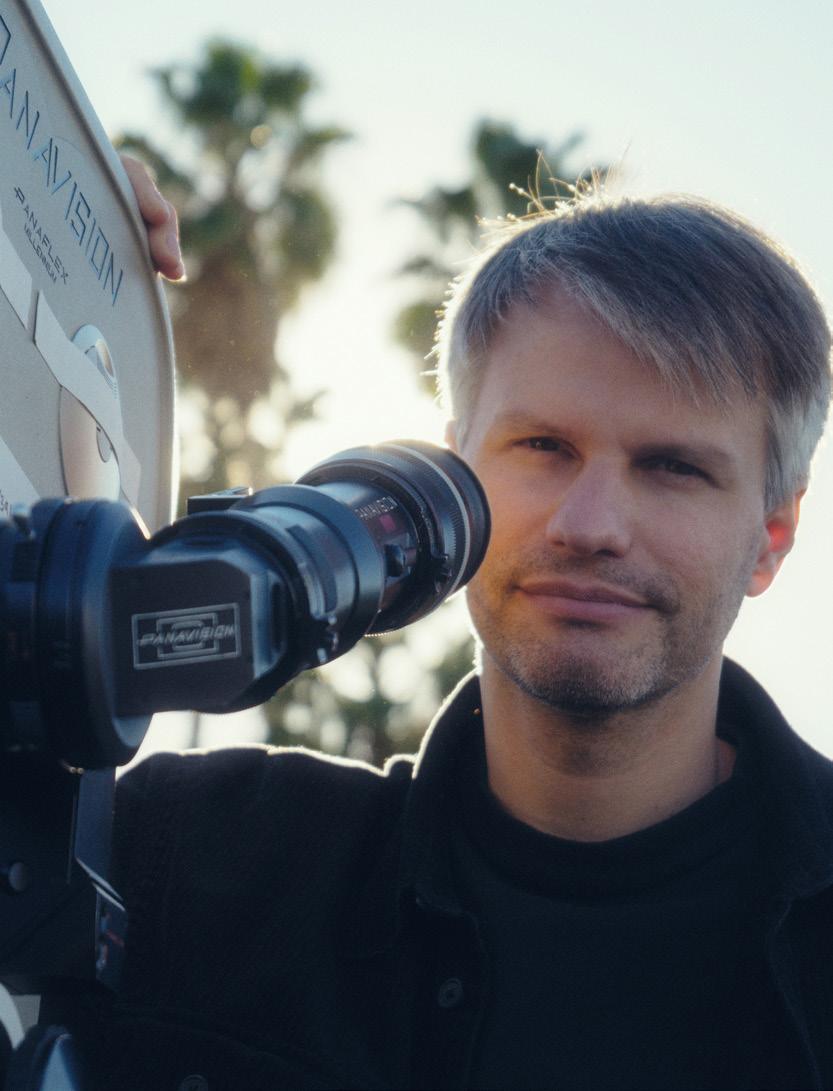
One of the people who is perhaps best placed to address the issue of lighting for virtual production is Markus Förderer ASC BVK, cinematographer on Red Notice, The Colony, Bliss, and Independence Day: Resurgence, whose background with the technique goes back almost as far as the technique itself.
Förderer’s introduction is frank. “On almost every project I used some form of virtual production – bigger walls, smaller walls. I have a love-hate relationship with it. I always push for it, but I totally know the constraints.” As a lighting device, the shortcomings of every wall to date are clear: “The colour quality, most of the time, looks like a fancy computer game no matter how much money you throw at it. The light coming from [simulated environments] is not realistic. That’s why I’m always pushing to shoot panoramic stills, to start with something photoreal. Then the background of the wall is something photoreal and the starting point of the colour is real to the eye.”
“Then you’re dealing with the issue of red, green and blue pixels trying to mix colour,” Förderer reflects. “The breakthrough for LED lighting was when they added the white pixel, blending the spectrum to something that looks natural.”
Cutting-edge virtual production stages might even offer the option to control LED production lighting using data from the video signal itself, though Förderer prefers to ensure consistent lighting conditions by using consistent equipment. “There are ways to connect your lights to the wall content to pixel-map the light, so the animation matches. But if you pixel-map the colour, the film lights can react very differently to the wall. I’ve seen the Kino Flo pixel mapped lights. I’ve tested the Sumolight Sumosky, which is an interesting idea, but there’s no general trick that solves it all. I try to rely on the light of the wall or have smaller portable sections [of the videowall] as a light source.”
That light source, Förderer goes on, might be modified using a variety of conventional techniques. “I might use large silver bounces like on a twenty-by-twenty frame, put a silver textile in it and reflect back the wall light, so it’s always the same colour and animation. Then, even if the colour quality is not as good, it’s kind of balanced, then we can tweak it with in camera colour control.”
Because cameras and eyes might see the same light differently, Förderer makes his final adjustments on a monitor. “Sometimes I’ll put a floppy behind the monitor, so I don’t even see the set, then balance to what I see on the monitor.”
The reputation of virtual production as a high-end technology with a high-end price tag is gradually being dispelled, as Förderer reflects, by the growth of facilities targeted at simpler jobs. “I’m glad to see smaller walls popping up. It’s such an expensive technology [that] it’s often prohibitive for many producers to use virtual production. It becomes such a beast financially that they’ll say, ‘we’ll figure out another way to shoot that sequence.’ But you don’t always need camera tracking and parallax.”
For Förderer, in the end, the lighting implications of virtual production are a large part of their appeal. “The big breakthrough in visual effects, for Jurassic Park, when things started looking photoreal, was when they started using the silver spheres to capture the environment and use it on a CG subject. If you put this natural environment there, it suddenly looks real. The revolutionary moment was to bring that sphere back on set. Instead of a green cave we have a cave that represents the real environment and real lights and, to me, that’s 90 percent of the magic of virtual production.” n
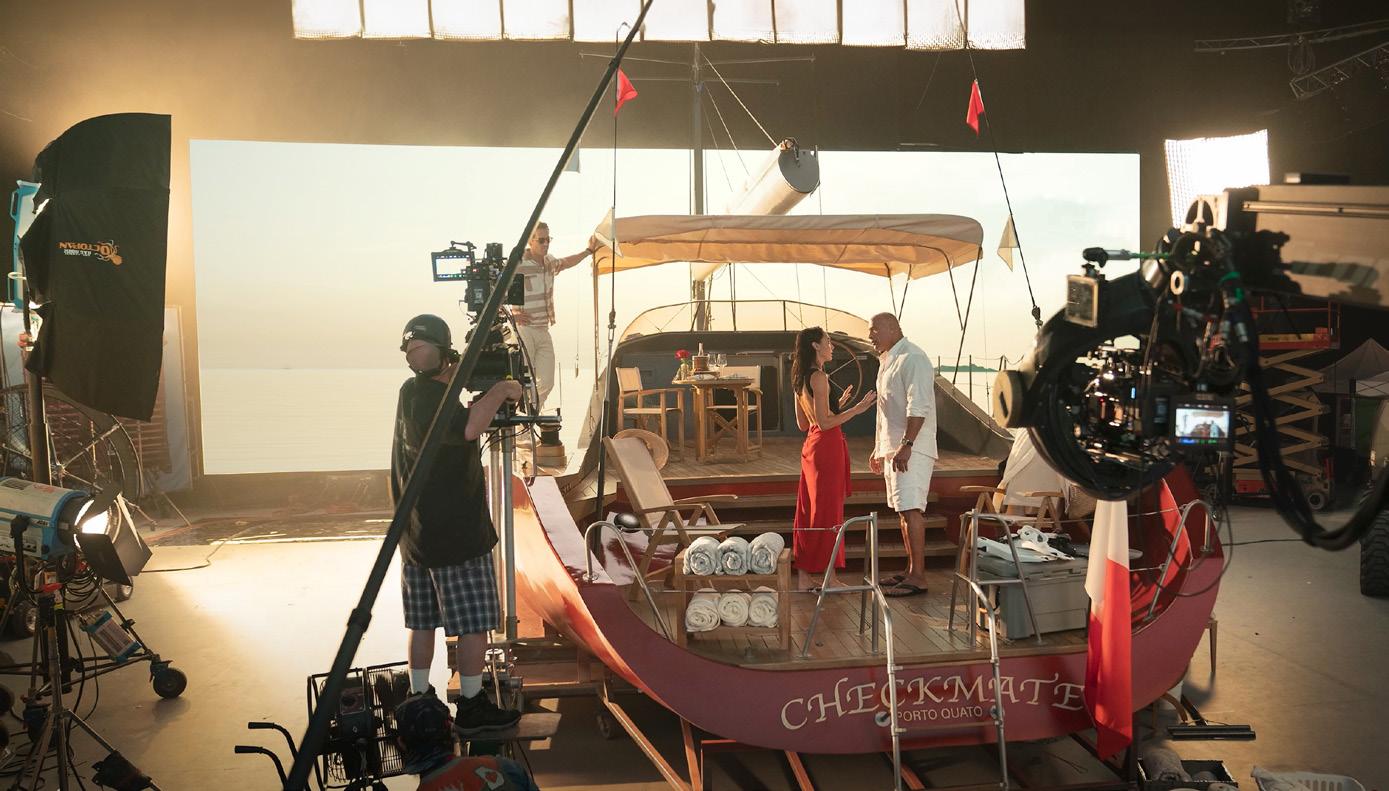

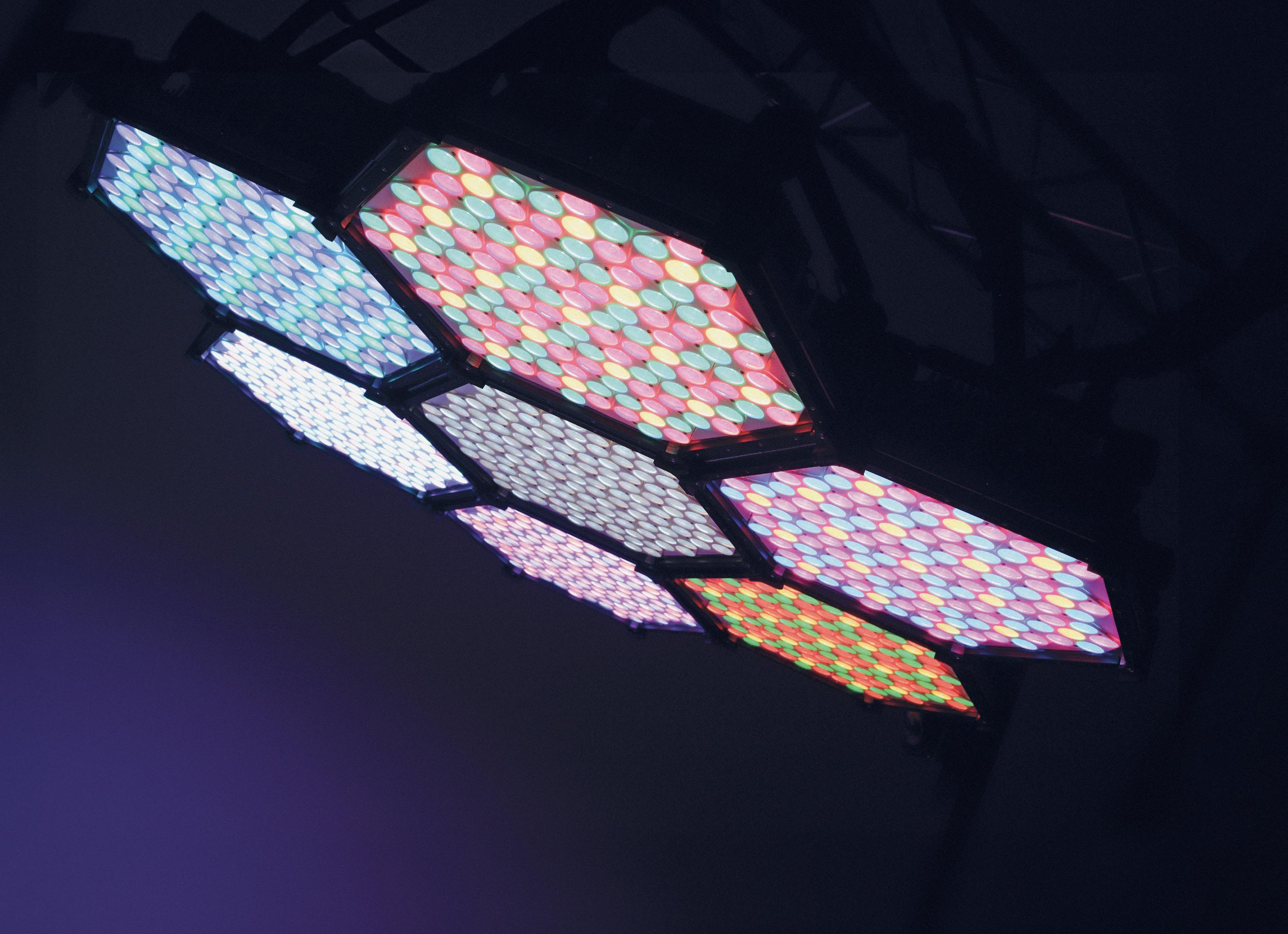
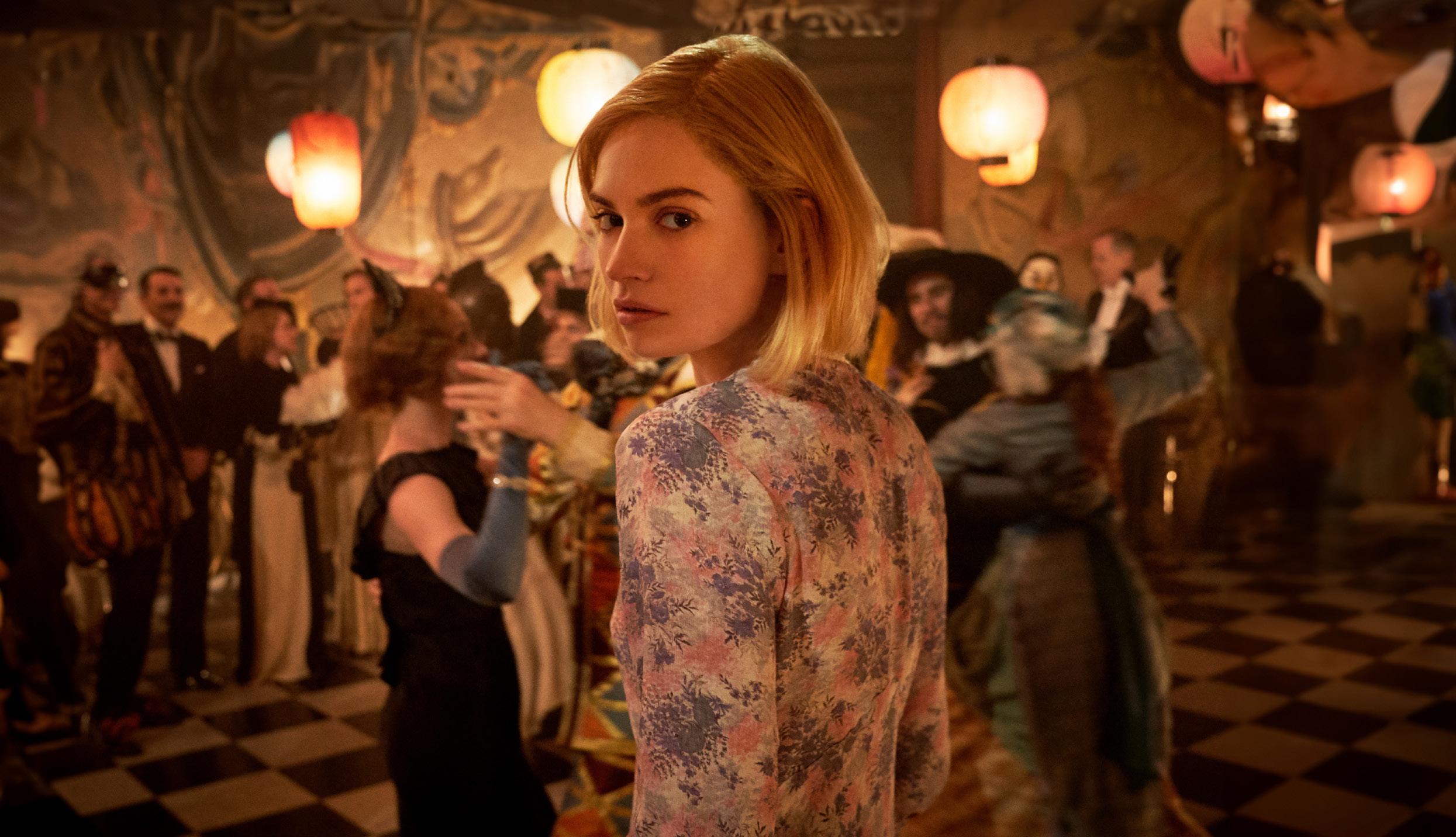
A close-up look at the latest lighting


The first thing that gaffer Julian White brings up is that, despite the fanfare still surrounding new releases, LED lights are no longer a new technology. “The first time I used an LED battery light was probably at least 13 years ago. The Asteras were one thing, the LiteGear Ribbons, the panels you could stick up. On car interiors, where you used to use a Micro-Flo, now you can put a fully bicolour, battery-operated wireless light which has changed the way we work tremendously.”
Exciting as those changes have been, White suggests that the gold rush of low power consumption might have distracted us from some other, equally influential benefits.
“On a practical level, there’s wireless operation so you don’t have to go and touch it if you don’t want to. If it’s rigged in the air, you can do it remotely, that’s a big step. And battery, so you don’t have to run cables everywhere.”
Running small lights from small batteries is not a new idea. Running big lights from big batteries is, and a timesaver in a way that Mills points out the lights themselves might not be. “LEDs are as heavy as traditional lights, if not
heavier. There are heatsinks, fans - weight and size is a consideration. You’re getting a lamp that does the same as a 1K that’s twice the size.” The compensatory benefit has been the option to run those same lights from the sort of battery modules that ride around on wheels.
“With the progress in camera tech and lenses it’s a huge saving. It’s as much time as money, and being able to work more intuitively.
I did Rebecca with Laurie Rose (BSC), and sometimes I just had two Astera tubes in my hand. There was no fuss, no stress, you can just put stuff where you need it.” The industry’s appreciation of those options is nothing new, but, as White puts it, “The bugbear is that everyone created LED soft lights. What we like in lighting is a big light that goes through a big lens. It creates character to the light.”
Fresnels are an almost universal desire in the context of lighting in 2023, mentioned by several of the people quoted in these pages. Meanwhile, the efficiency of modern equipment has provoked some changes in approach which weren’t so widely anticipated. White contends that “lighting is less… blunt. We go down on some lamps to half a percent. You look at a volume knob, instead of having one to five, you’ve got point one, point two. The low end has become much more tuneable. The result is that if you looked at certain films and you did them ten years ago, and if I did them with LED now, they’d look so different.” Perhaps the influence of technology on technique is inevitable in such a technical field, unexpected as it may be. Meanwhile, the whole film industry had decades of experience with lighting of poor colour quality, though White contends that LEDs are now generally good enough to satisfy even the pickiest clients, at least given some situationally specific tinkering.
Controllability is good; complexity isn’t always as welcome, and White hints at a fondness for the simplicity of classic approaches. His analogy is “Amplifiers. When you buy your first amp, it has all these buttons and equalisers. Then you go massive and spend a fortune on an amp and you think, ‘I thought I’d get more buttons and I got less!’ On most LEDs I’d take half the buttons off it.” The idea, it seems, is to free up some sheer human endeavour for other ends. “We’ve opened a box of tricks, which is great, and because I’ve been doing it for 25 years, starting out with very rudimentary lighting, it’s amazing. But let’s have a hard light. Let’s put our effort into that.” n



Newly formed lighting society ICLS has some definite ideas of how its industry represents itself and is using its status to push reform.
The recent pandemic affected everyone in different ways. One positive outcome was the formation of the International Cinema Lighting Society (ICLS), which provided a platform for international lighting professionals to connect and collaborate. It seemed a global health crisis was the catalyst for gaffers to start communicating, but this was a long overdue step and has allowed many to reflect on their career and vocation. Ultimately, it proved to be a fruitful opportunity for their professional growth.
One of the founding directors of the ICLS is UK gaffer Martin Smith. He co-founded the society alongside president Mike Bauman and Rafael Sanchez; also on the team are directors Erin Nelligan and James McGuire, Adam Harrison, and executive director Ediola
Pashollari. Smith is fired up about nurturing this fledgling society. “Gaffers aren’t the best at sharing information; it’s been a closed shop. It was a case of who you know rather than what you know. But all we needed was just some time on our hands to make a difference.”
The pandemic gave them that luxury which triggered the need for collaboration. “Gaffers don’t really work together. Most of the time, they will be selected to work with the DP, but sharing information between us didn’t seem to happen.”

But how did the lighting community go from this lack of sharing to something encouraging talking and swapping information? “It seemed to me that cinematographers were much prouder of their work and loved to chat about it. But it was time for us to have somewhere to talk about our world, especially safety and legislation for the pandemic.”
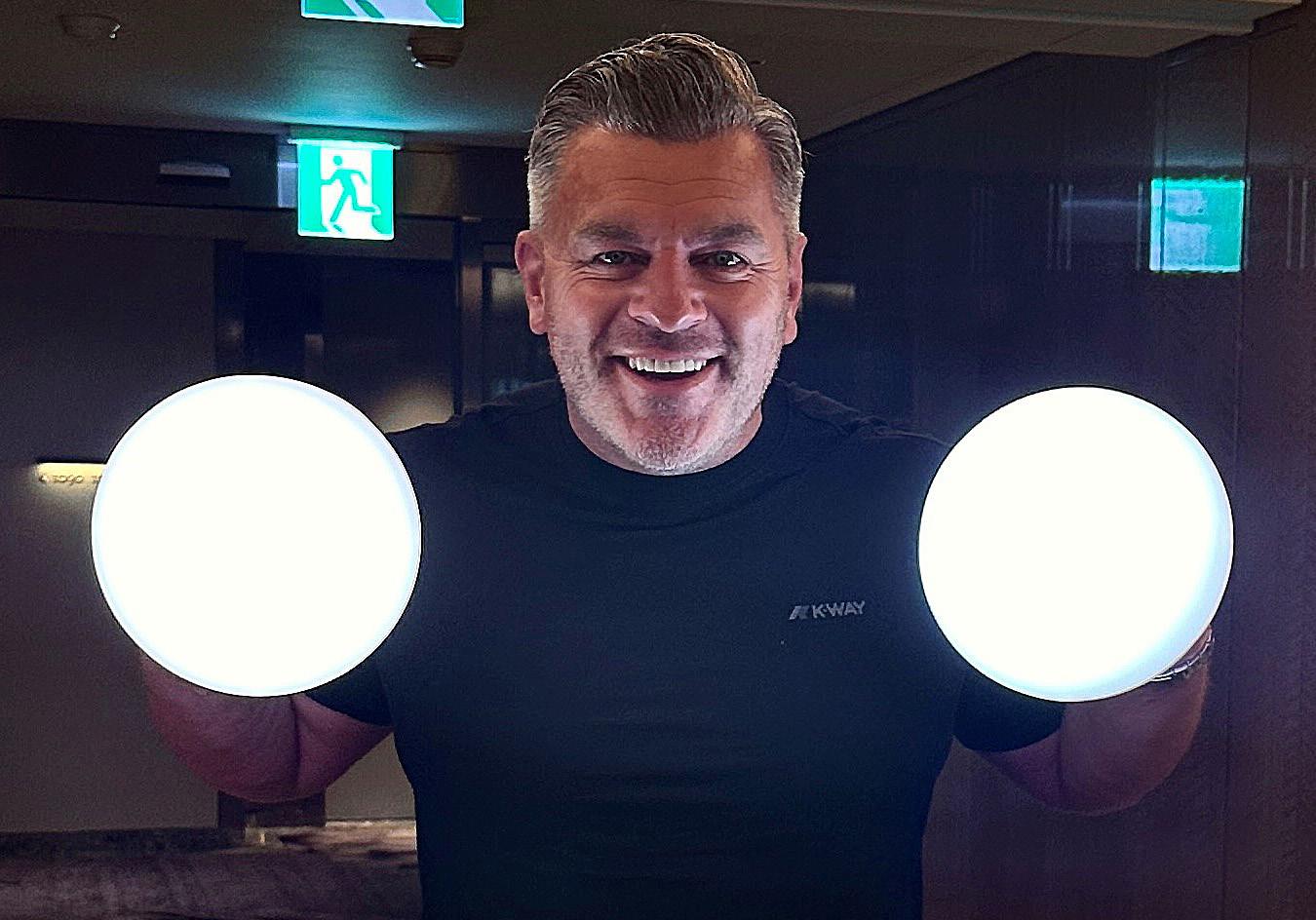
That initial collaboration became more of the ‘town square’ type of virtual meeting room. “We soon asked how everyone was and what they were up to. We talked about what we had done and where and with whom. That soon moved on to what products we were all using and how.
“We were quickly expanding to other areas of the world with people with different views in the film and television industry. Then we started attracting corporate members and manufacturers interested in sharing their prototypes; we were the perfect audience for those demos as we are the direct end users.
“Remember, there were no trade shows at the time as they had been shut down. So, we started to create trade events on our Zooms to discuss the equipment’s pros and cons. We said at the time that this could become our own society.”
Smith and his fellow founders didn’t want to represent lighting professionals as a unionised body but realised that what they had could become their own entity. “It could become our network of collaborative professionals, where we could share the infinite knowledge and expertise amongst a global group of likeminded members, and in turn tackle some of the bigger problems like lack of diversity, equality and educational needs.
“So, we decided to start as a formal society which at the time was pretty informal. We had the support setting it up from some of our early founding members. A website was built, and membership application vetting policy was put in place. We continued with the Zooms, and they allowed us to get to know people internationally. On a Saturday, we sometimes had over 100 people on a Zoom meeting.”
The structure included forming a membership, educational, and finance committee. Bea Patten was their first employee whose brief was to set up a global lighting community, as a non-profit organisation.
Even though the ICLS is run mainly by volunteers, Smith sees the community thriving and experiencing tremendous growth. “It’s starting to take a natural direction and will keep growing. The ICLS has now gained non-profit status thanks to the hard work of executive director Ediola Pashollari. We’re now a global community of members including gaffers, programmers, best boys, associates and manufacturers, all sharing technical knowledge on a vast variety of subjects.
“For instance, there are well over 100 channels on our Discord servers, and there are all hot topics of what’s going on and where. For example, lighting rigs, specific looks, data transmission, networking, colour science, intelligent lighting, new products, safety and how things are done globally; we’re in 40 countries now.
“We are a serious society with many fabulous technicians worldwide. Interestingly, every member has something to offer, and it’s now apparent that so much knowledge can be shared. It was insular, and we’ve come far in only three years.
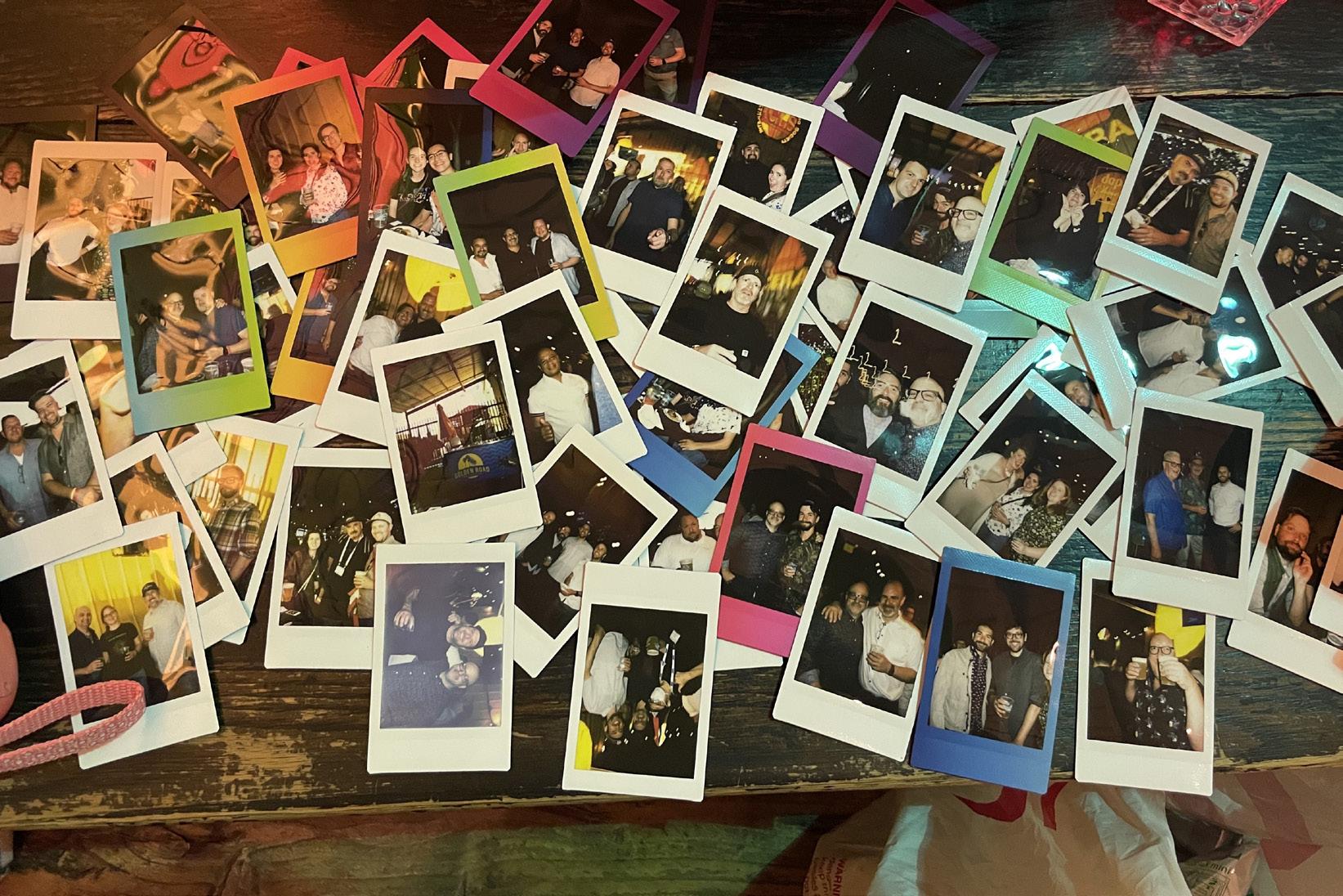

“So many people want to join, and we must steady the growth from here. It can be frustrating for people who want a membership but have to wait, our volunteers are doing their best to get applicants processed.”
Full membership has a high qualifying criterion: at least eight years working in cinematic lighting consecutively and consistently as a gaffer, rigging gaffer or programmer.
The ICLS recently opened an associate membership programme for aspiring gaffers, rigging gaffers and programmers. The programme accepts new and aspiring members and is a conduit to all the knowledge and resources within the Discord channels including all the latest product ranges.
“We want to place mentors within the society to show the next generation how to become a gaffer and have a long career. We’re also looking at a formal entry route qualification from the ICLS that would be recognised globally, a structured pathway into the cinematic lighting industry.
“That’s very complex and going to take a few years to figure out due to varying electrical codes of conduct which in my opinion is essential.
“We will also open membership to our practicals/fixtures heads of departments. With all the LED technology, control and complex wiring designed into today’s sets, its essential we include these fantastic technicians within our membership.”
The ICLS’s increasing power can prepare the ground for the next generation, and Smith feels it needs to be grounded on the electrical side. “In the UK and most of Europe, you will need to be an electrician to start with and have competency or a qualification. I did a full electrical apprenticeship, and anyone who does that has much more respect within the industry.
“Let’s be honest. You’re dealing with electricity first and foremost. It’s dangerous, and you’ll need to figure out electrical design, generating and distributing electricity safely, before the Lighting starts.
“Firstly, anyone who thinks that they’re coming out of film school and just decides that they want to be a gaffer,
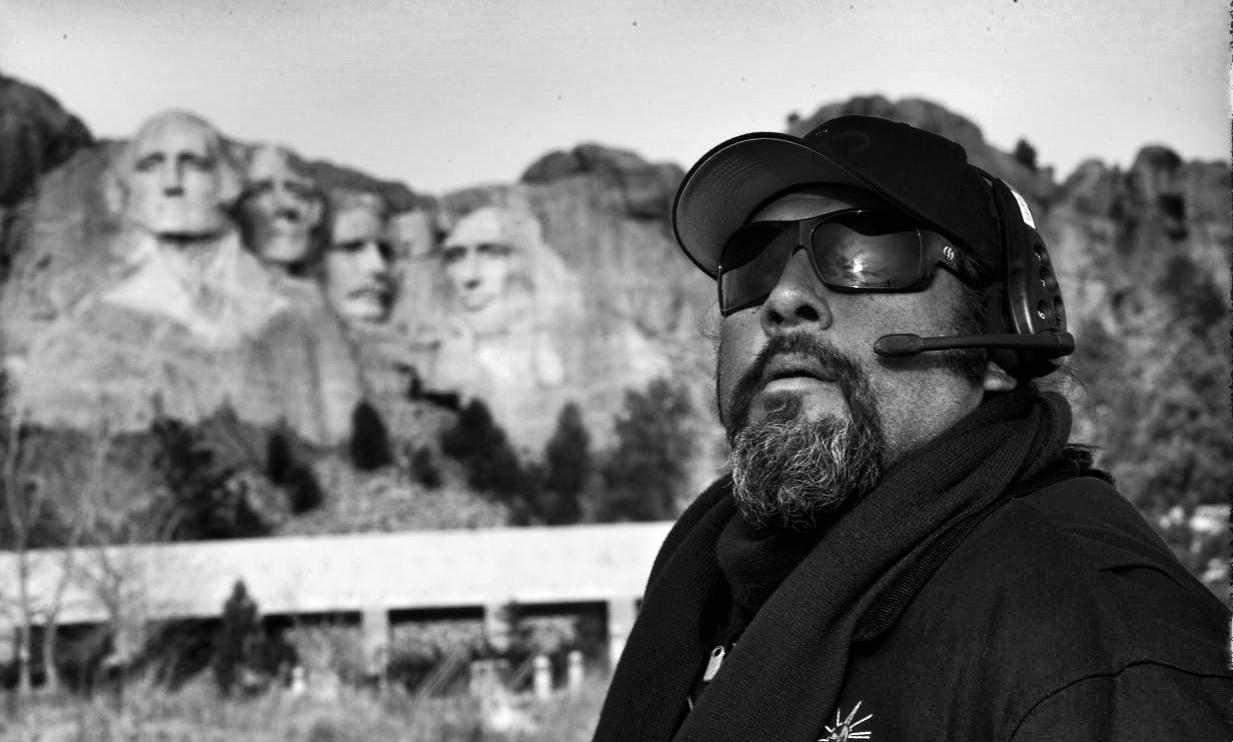
well, you might get a few commercials or a pop video, but you’re never going to be taken seriously. Nowadays, it’s so tight at the top, the big features, you must have a whole and indepth technical and practical knowledge.
“Responsibilities are endless. Designing, calculating, power demands, rigging, testing, certifying electrical installations are just the start. Planning, budgeting, forecasting, lighting design and installations, crew management, logistical kit management, interdepartmental collaboration, travel logistics, carnets, risk assessments and safety protocols are some of the skills you will need.
“It’s best to work up slowly through the ranks within the lighting industry; currently there’s no defined route. You need to understand all the elements of making a movie. That knowledge development takes years.” n



www.iclsociety.com @ICLSociety @ICLSociety @ICLSociety



Light Source Film is a beacon of transformation that has evolved far beyond its humble beginnings just over a decade ago.
The brainchild of lighting technician Aaron Keating, Light Source Film was originally set up as a portal to help qualified and sometimes overlooked sparks to showcase their talents. In other words, it aimed to shatter the barriers of nepotism and wordof-mouth referrals often synonymous with this side of the industry.
Last year, he sold the company to gaffer Harlon Haveland, who runs it with his two friends – senior SFX technician Paul Dane and corporate banker Michael Smith.
Now, the trio owns the largest database of qualified electricians in the British Isles –something Haveland says he “really didn’t expect” given the company’s humble beginnings.
“The initial idea was just to create a place for qualified sparks to have a chance of finding work,” Haveland says. “From its origins as a modest club of merely 300 sparks, Light Source has burgeoned into an established organisation of 3,000 members and rising. It’s incredible how much it has grown.”
That’s because Haveland wants to “get away from the WhatsApp culture” of people recommending people for jobs for which they’re not qualified.
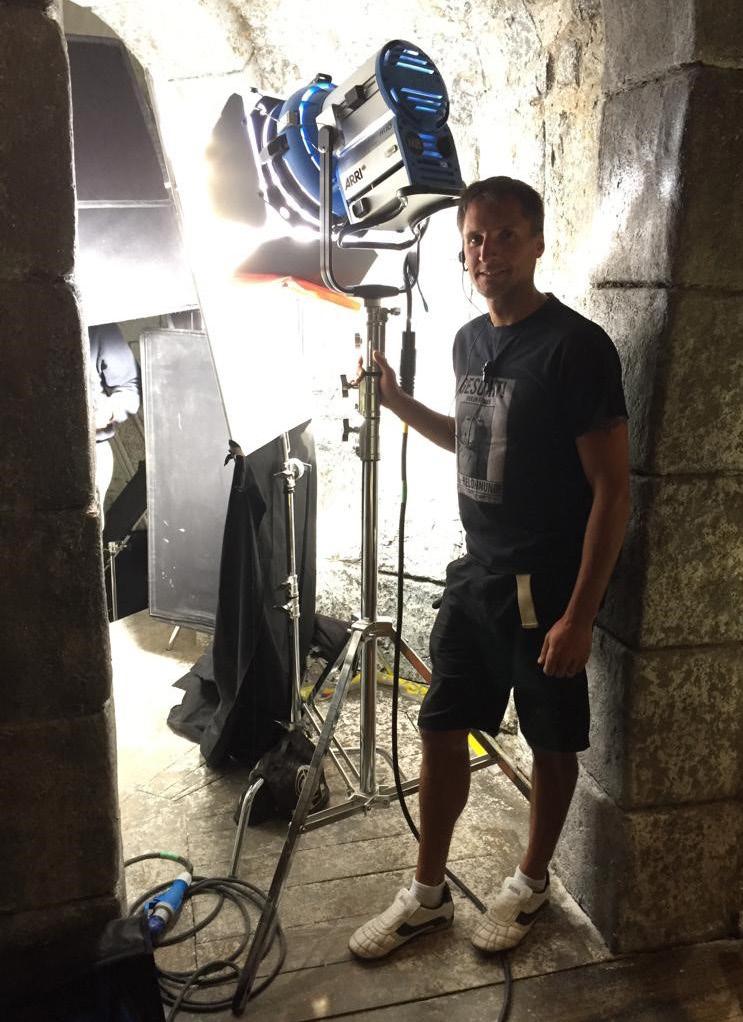
“It jeopardises the industry’s credibility, because you never know what you’re going to get from those groups,” he adds. “As a result, there are many unqualified people and ones who are not up to scratch. Light Source was conceived to weed out these problems and that’s what we’re doing.”
Sparks interested in working on film sets can upload their credentials and IMDB credits to the website. However, they
must undergo a vetting process, substantiating their qualifications or demonstrating their extensive industry experience.
“It means gaffers, best boys and rigging gaffers alike can turn to Light Source to engage the best sparks knowing they have been through a thorough process and come with a level of credibility.”
Haveland says COVID also proved to be a catalyst for Light Source and the industry large because it created a job vacuum when productions started again after the best part of two years.
“After COVID, the industry exploded but the landscape had changed so much, so many found it hard to get the right labour,” he says.
Among the projects members have contributed to are Indiana Jones and the Dial of Destiny, Top Gun: Maverick, Barbie, The Flash, Blue Beetle, and Fast X
Haveland is forward thinking and says the company is very much looking forward to growing the business. For one, Light Source has forged a partnership with British Cinematographer, which will lead to benefits for its members.
“We also have a big partnership in negotiation at the moment which means they can get discounts on all sorts of things, ranging from food to holidays and gym memberships,” Haveland adds.
What’s more, he says the company’s aspirations reach even further with plans to extend its remit to encompass several different departments from all facets of filmmaking.
“We want to attract crew across the board and be the biggest go-to database for bona fide quality crew,” Haveland adds. “It will be the only actual verified database for professionals in the film industry and we will be strict with the people who sign up as we need to keep the exclusivity and the integrity of the crew.” n lightsourcefilm.com
Yet despite the tremendous growth, the company remains discerning about who registers, carefully selecting who can showcase their credentials. All applicants must have a qualification or at least be able to list several credits to prove they are able to do the job.


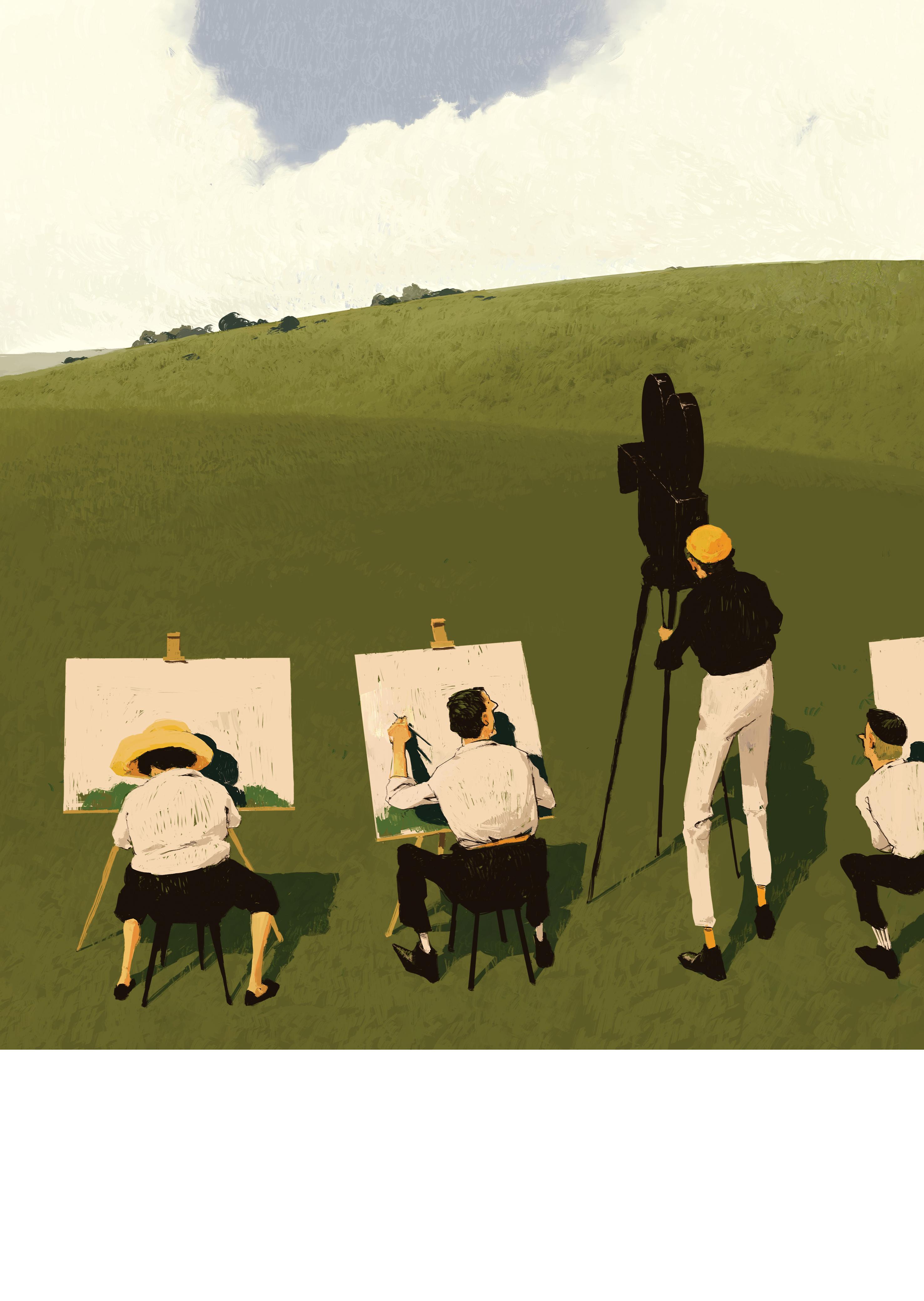



Production name: The Afterparty S2
Production type: Television series
Cinematographer: Ross Riege
Gaffer/chief lighting technician: Cameron Smith
Director: Various
Overview of The Afterparty and your approach to lighting: The series is a Rashomon-style murder mystery, retelling the same sequence of events from a different character’s perspective on an episode-by-episode basis. Each episode has a specific visual genre and storytelling style attached to it, based on the character we are focused on. This is quite a dream as a cinematographer, because I was tasked with exploring a different visual style in each episode, as well as interweaving it with our ‘present-day’ look.
What made the collaboration between you and Cameron Smith so successful: I’ve worked with Cameron on a number of projects in the past but never to the granular degree required on The Afterparty. We talked in detail about the references I honed in on for each episode; the visual goal, and how to accomplish that. Not only was it critical to get those reference images commonly in our heads, but we were continually discussing the types of lighting equipment that would have been used in each particular genre, and what we were doing to replicate that, or use the same units in the same ways. There were defined colour palettes associated with each genre so that also influenced the choices we made, where we wanted RGB flexibility, and where we were using gels.

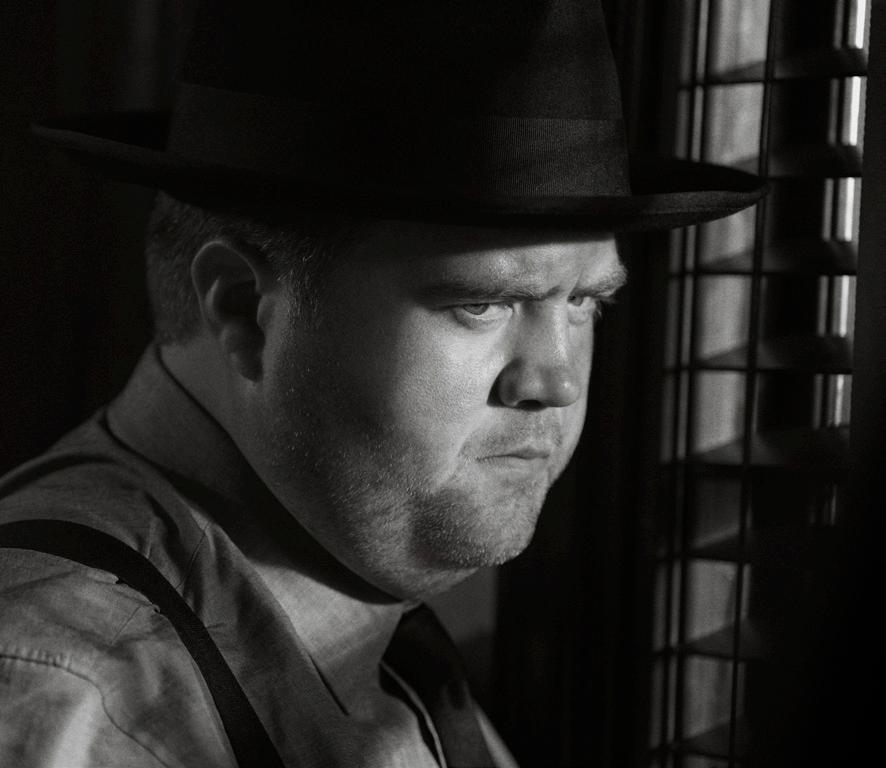
Lighting kit used: We rigged the stages primarily with tungsten and LED, with many practicals built into the sets, and our location package included Tungsten, LED and HMI units.
Lighting kit supplied by: Primarily Santa Clarita Studios (SCS) with a few supplements brought in separately.
Camera and lenses used: Sony Venice, detuned Panavision S35 Primos, Nikkor Telephotos, Primo Artiste 70s, expanded G & T series anamorphics, hand crank 35mm film camera.
Look you needed to achieve: We had to set a familiar present-day look that would play in every episode and provide a base to amplify the genre material we were set to explore: romcom, Jane Austen, film noir, Wes Anderson, heist, ‘90s erotic thriller, epic romance, found footage, Hitchcock three-strip Technicolor, campy horror, and cheesy soap opera.
Lighting equipment testing process: In prep we primarily focused on the first two genres we were scheduled to shoot: film noir and three-strip Technicolor. We designed a setup where we could have multiple units standing by, set levels and tone with them, and be able to cycle through them in different mixtures mid-take, so we could see multiple looks without having our talent step away.
Explanation of lighting techniques used: We had to take into consideration not only the filmmaking fads and styles of the era, but also the gags and gimmicks attached to each of these genres. There were focal points unique to each genre; for example, in the film noir episode we lit with hard sources from the exterior with little interior fill. We pushed edges up to 100% and beyond, and we used cookies and projection patterns as often as we could.
Lighting challenges faced: Like most things in television, the biggest challenge is time. We worked meticulously in prep and along the way to constantly have a plan of attack ahead of time, so that our time on set could be spent shooting as much as possible.
Trickiest location to light: All of the mansion exteriors on location. We were at a beautiful property but we were very limited with where we could place condors for night lighting, and access on lawns was very sensitive, so we had to get creative with placements and build the sun path into our schedule as much as possible.
Lighting lessons from The Afterparty: I’ve always been a firm believer that there are things to learn and grow from on set every day - and that was definitely true on The Afterparty n
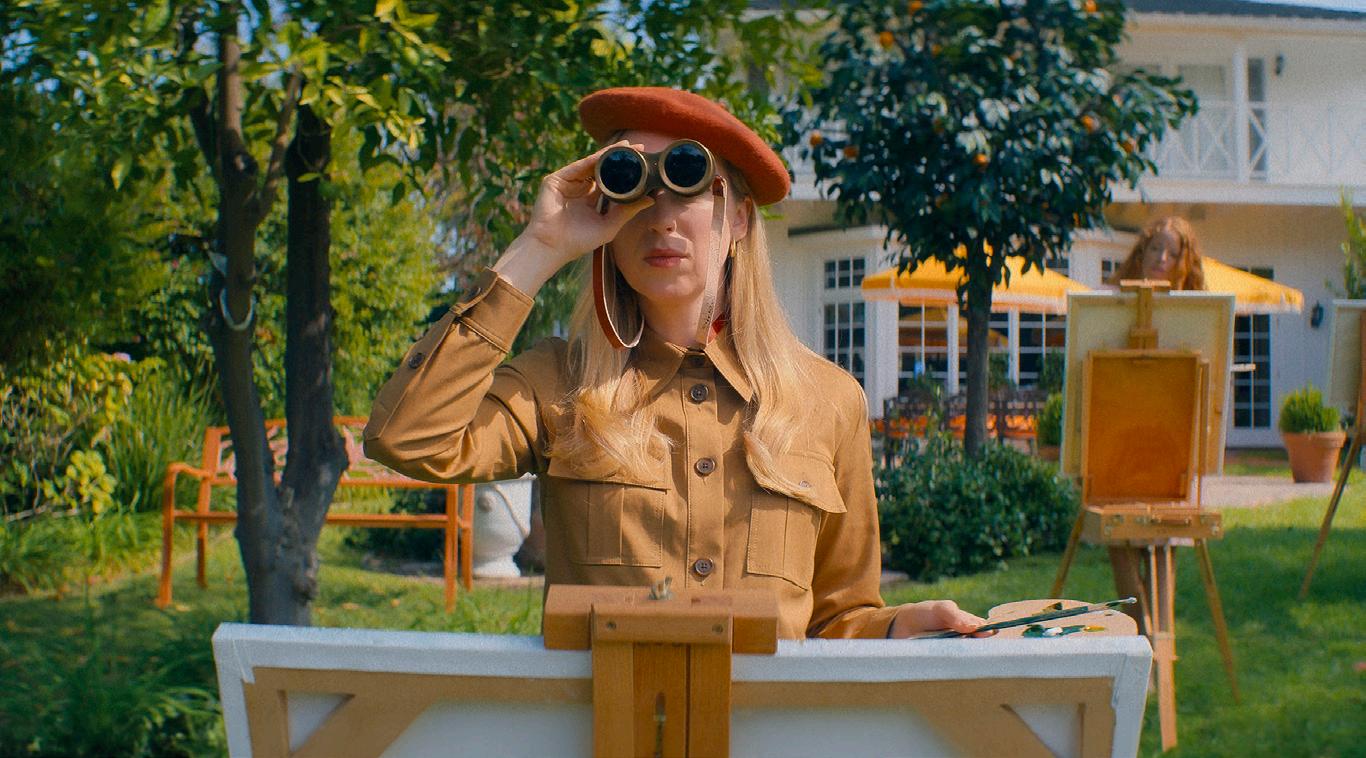

Production name: One Piece
Production type: Television series
Cinematographer: Nicole Hirsch Whitaker ASC (episodes one and two)
Gaffer: Wiseman Dinizulu
Director: Marc Jobst
Overview of the production and what was the visual approach you adopted in terms of lighting: Marc and I met on a previous Netflix show, Jupiter’s Legacy, where we found a really similar language as filmmakers. When he approached me about doing One Piece (a live-action adaptation of the popular Japanese manga series) in South Africa and told me what he wanted to do visually, I was immediately on board.
One of our references was the amazing photographer Jimmy Nelson, who’d shot all over the world including Africa. When we saw the palette of the lighting in his photographs, both of us thought this is what we want our show to look like.
Lighting kit used and why it was chosen: It was a real hybrid. We had a lot of tungsten on stage and a lot of LED – we must have had about 500 SkyPanels. Because we did a lot of exteriors, we didn’t use much outside – we’d have some S360s and S60s, as well as some 18Ks, 9Ks and 4Ks. When we were working outside, we were very cognisant of wanting it to feel light and cheery, so we were constantly trying to find ways to fill the backlight.

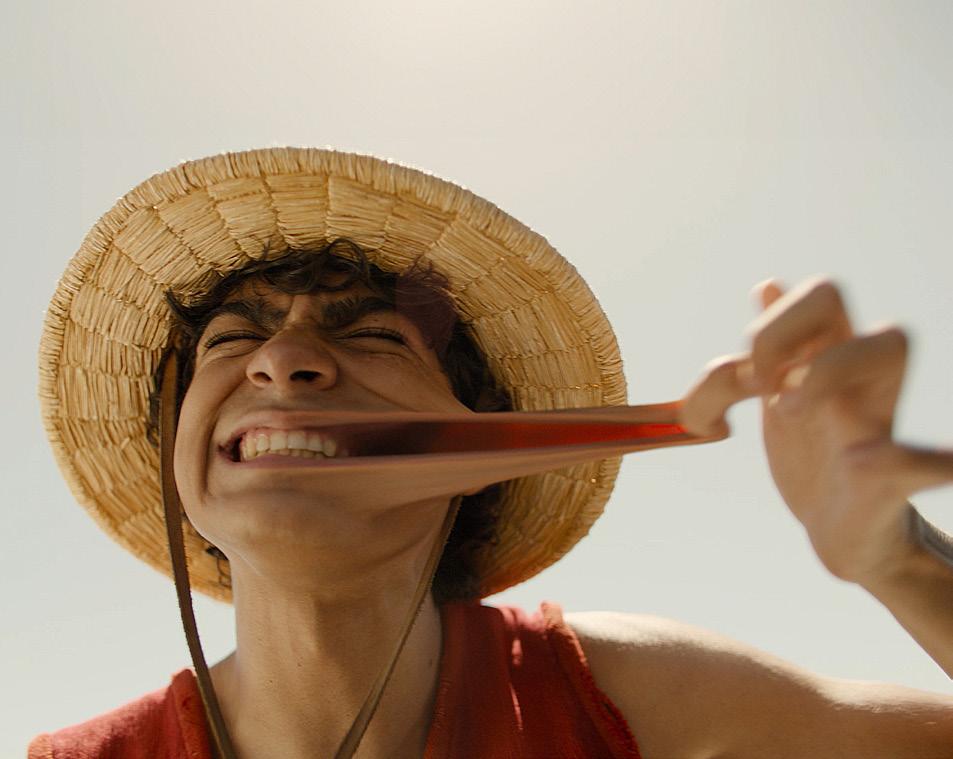
Lighting kit supplied by: ARRI Rental.
Camera and lenses used: The ARRI Alexa LF and five sets of custom-built Hawk MHX large format lenses.
Lighting equipment testing process: This was the most testing I’ve ever done on a project. We had four months of prep, and over half of that was spent doing camera and lighting tests.
We had a lot of research and development to do because these characters all have different abilities – especially Luffy, the main character, who eats fruit that makes him stretchy. We still wanted to make the visuals feel grounded and the characters feel real and that had a lot to do with how they were lit, so we did lots of lighting tests on stage.
Challenges faced with the lighting and how they were overcome: Because we were shooting in South Africa during the summer, we had to deal with a lot of high, hard sun. I think exterior lighting is much more difficult than interior, as you’re trying to balance while the sun is moving all day – it’s really hard.
Most difficult location to light in the production and solution used to light it: We shot a fight scene in a courtyard that lasted over five days, and I was very nervous about keeping the lighting consistent. Originally, we built a big overhead silk to cover the courtyard, but it proved problematic because we were shooting very wide lenses and it was in every shot. So, the producer and I decided to take it down, even though we’d built this huge rig, and just go with the available light. It was very challenging because we were shooting from morning until the evening, so trying to figure out how to keep the sun consistent was very hard.
What made the collaboration between the gaffer/chief lighting technician and cinematographer so successful: I hadn’t worked with Wiseman before but from day one, he and his crew were so excited about the project and so supportive. This would be a really big job, so I wanted someone qualified; he’d just lit the Idris Elba film Beast, and Philippe (Rousselot AFC) told me that he was just incredible. He’s the nicest person and brought so much to the show – I had so much fun working with him. I also loved working with the local crew who understood the local gear and what was available. Our lighting programmer Rohard Oosthuizen was also instrumental in the success of what we were able to achieve on the One Piece sets. n
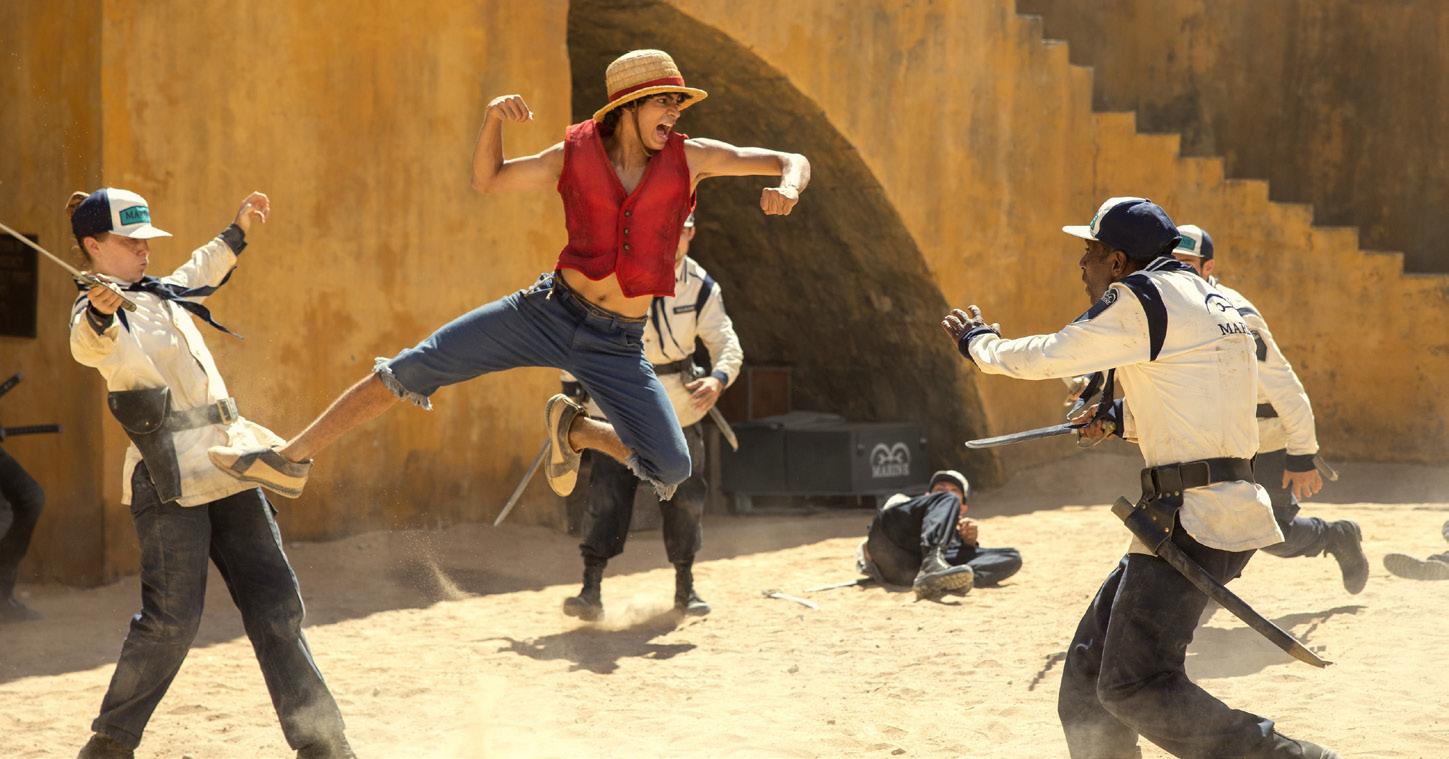

Production name: Dope Queens
Production type: Narrative feature
Cinematographer: Madeline Leach
Chief lighting technician (CLT): Mina Stollery
Director: Grafton Doyle
Overview of Dope Queens and your approach to lighting: Dope Queens follows three friends over the course of one wild night on the famously gritty streets of San Francisco’s Tenderloin district.

Madeline and I agreed that we wanted the lighting of the locations, especially the characters’ apartment, to mirror their emotional journey as the night progresses. At the beginning, the characters are optimistic about what the future holds for them, so the approach to lighting their apartment was focused on making the space bright, airy, and soft. As the night unfolds, we started to push harder sources in through the windows, tinged with green, to make the apartment feel cramped, and dirty.
Working with Madeline: When I first met Maddie, we immediately had a connection. I was already familiar and impressed with her work on the short film Pony Boi and was eager to work with her. Our approaches to lighting a film are both very collaborative so we were able to bounce ideas off one another and build from there. Our visual references for this film were pulled from Tangerine, Good Times, Spring Breakers, and The Neon Demon
Lighting kit used and why it was chosen: Most of our lighting kit was made up of LiteMat Spectrums, Astera Titans, Helios, and Nyx bulbs. The film has many scenes taking place in seedy clubs and dance floors, so we needed RGB fixtures that were also wirelessly DMX-able so we could programme effects and save looks. Unfortunately, due to budget, we were not able to leave locations rigged, so the ability to return to our exact levels was a lifesaver.
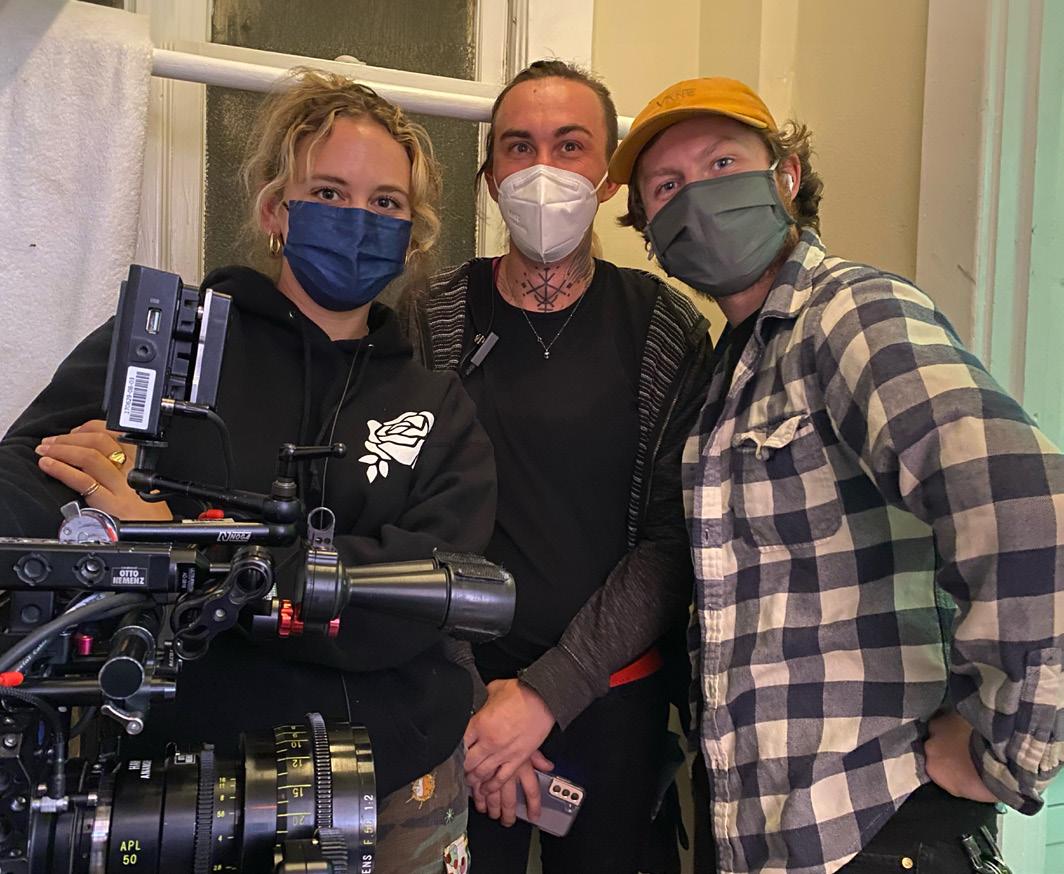
Lighting kit supplied by: The Little Giant Lighting and Grip (San Francisco).
Lighting equipment testing process: Our prep time was extremely limited, but we discussed the particular colour palettes for each location. We spent some time early on building out a variety of colour palettes for our fixtures which were then saved into our Blackout show file and transferred into ETC Nomad for some of bigger dance club scenes that need more robust effects.
Lighting challenges faced: Time was our biggest challenge. We didn’t have a rigging crew and only had a small grip and electric department. I relied heavily on my ACLT, Xavier Gomez, to work ahead in other locations to minimise our setup time. Our key grip, Juan Ruiz, and his best boy grip, Patrick Walsh, helped tremendously by pre-rigging points in the ceilings and building small grids, so that any units we needed to add to the scene could be placed quickly and be hidden out of frame.
Trickiest location to light: The nightclub scenes took place at the former Divas Night Club and Bar in San Francisco, California’s only transgender nightclub. The viewers’ first introduction to the space is a long Steadicam shot (from Steadicam operator Mike Chan) that starts outside on the street and follows our protagonists into the building. We had to light two floors of the building because all of it would be seen during the tracking shot, and we had about a day to do it. Due to budget, most of the gear needed was being used on another set located down the street. Fortunately, as we finished other scenes, I was able to send gear ahead so my ACLT could begin lighting the location. We had a few extra hands to help us run our LiteRibbon for the practical stairway lighting as well as run data and receivers to all the fixtures that needed it.
Lighting lessons: Dope Queens was the first feature where I was the CLT. Previously, I’d worked mainly as an ACLT, so I was used to executing a lighting plan and delegating labour to make the plan happen. Stepping into the role of CLT added new responsibilities which strengthened my communication and delegation skills. n
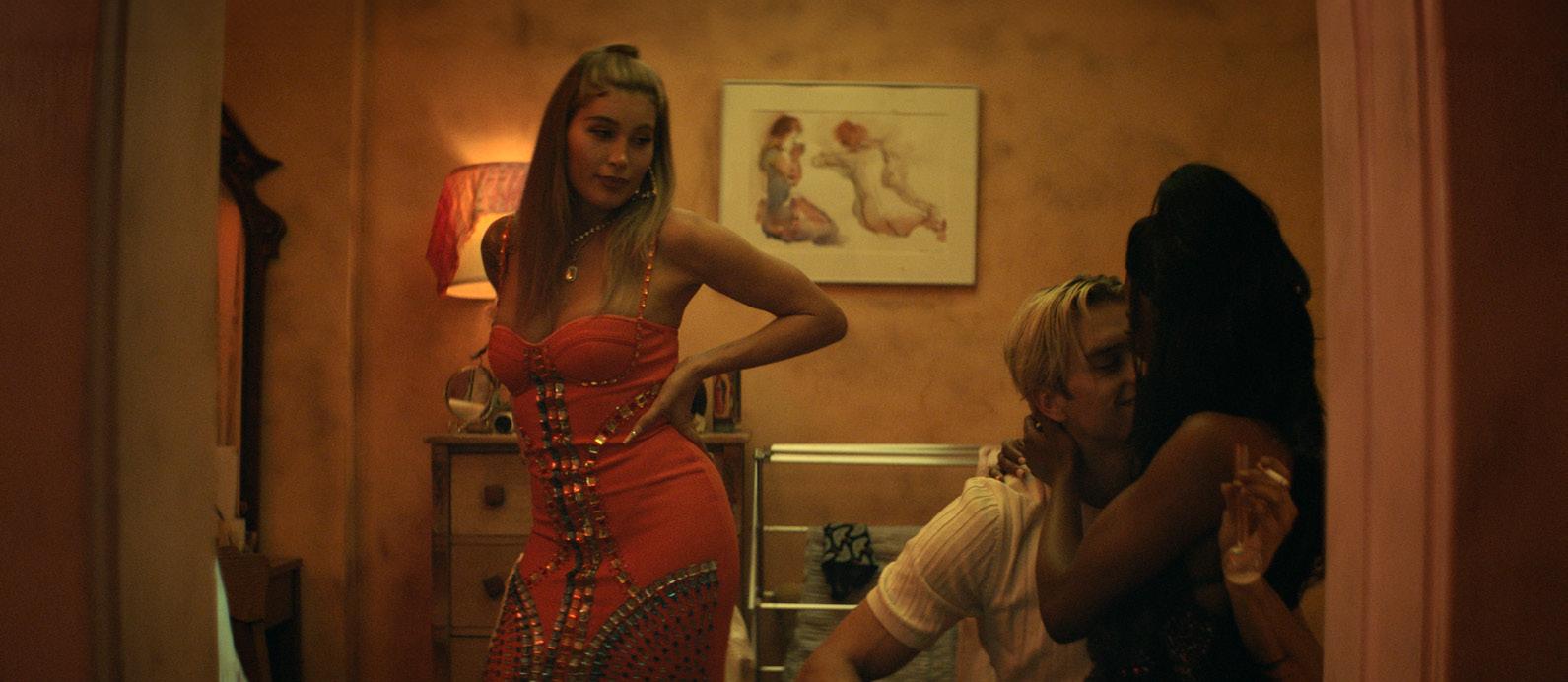
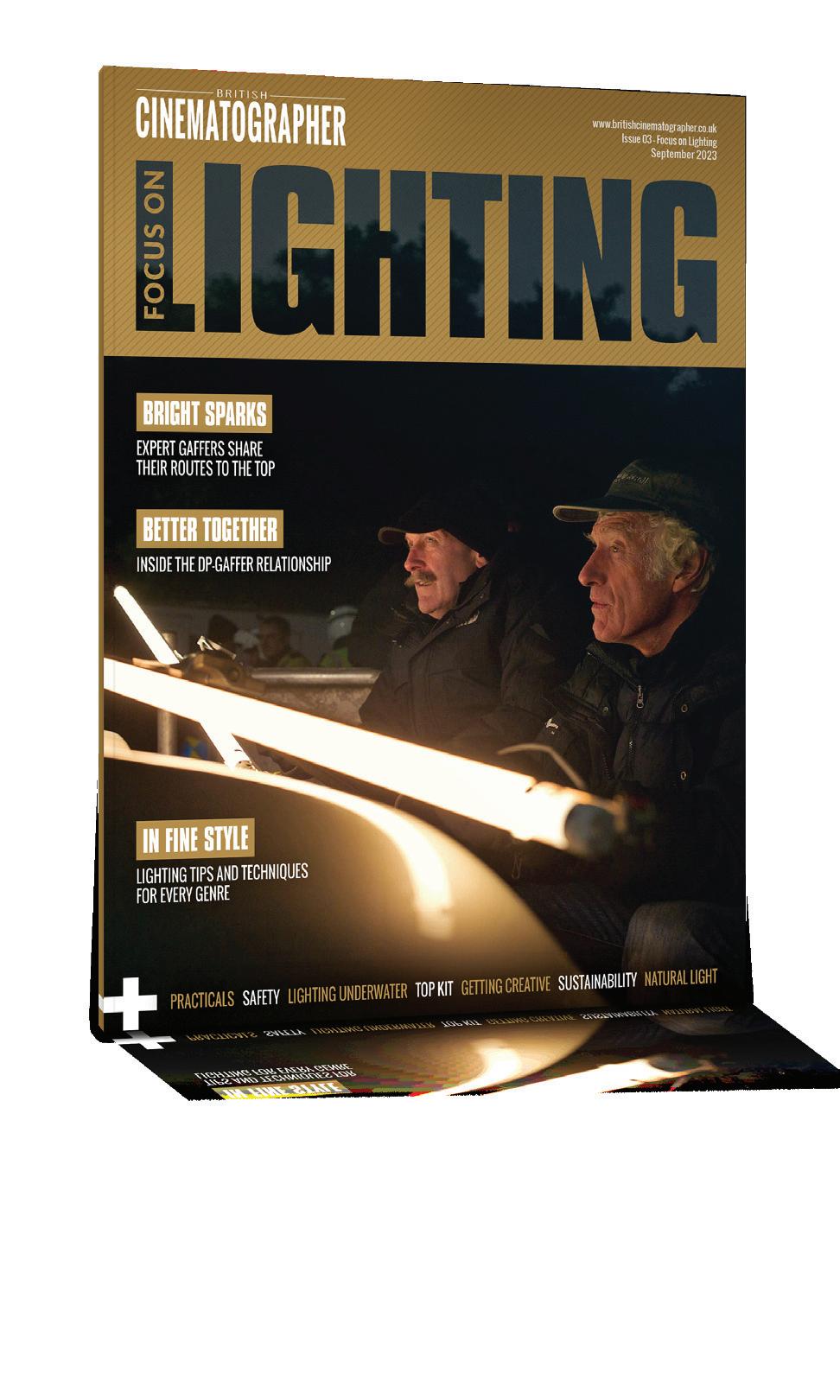
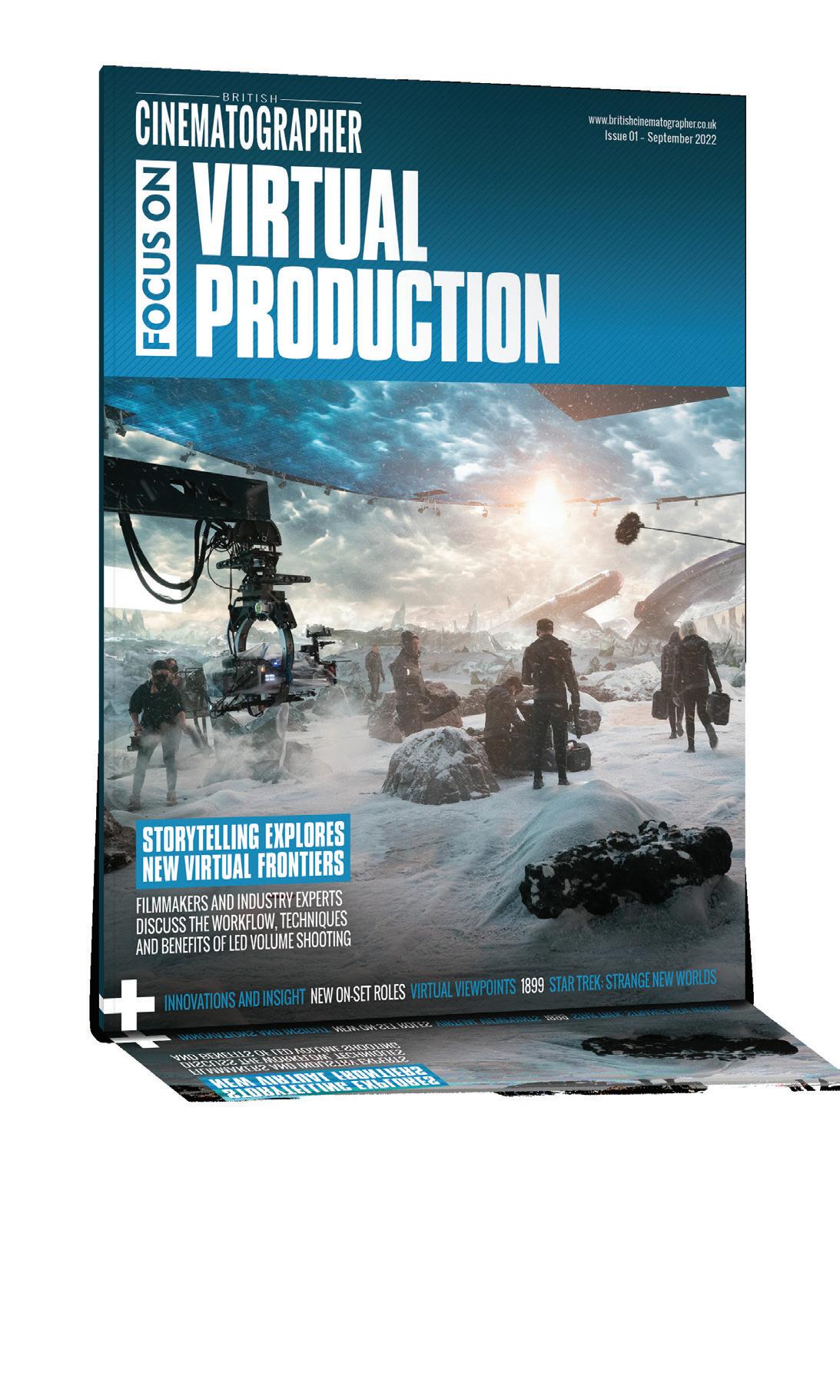
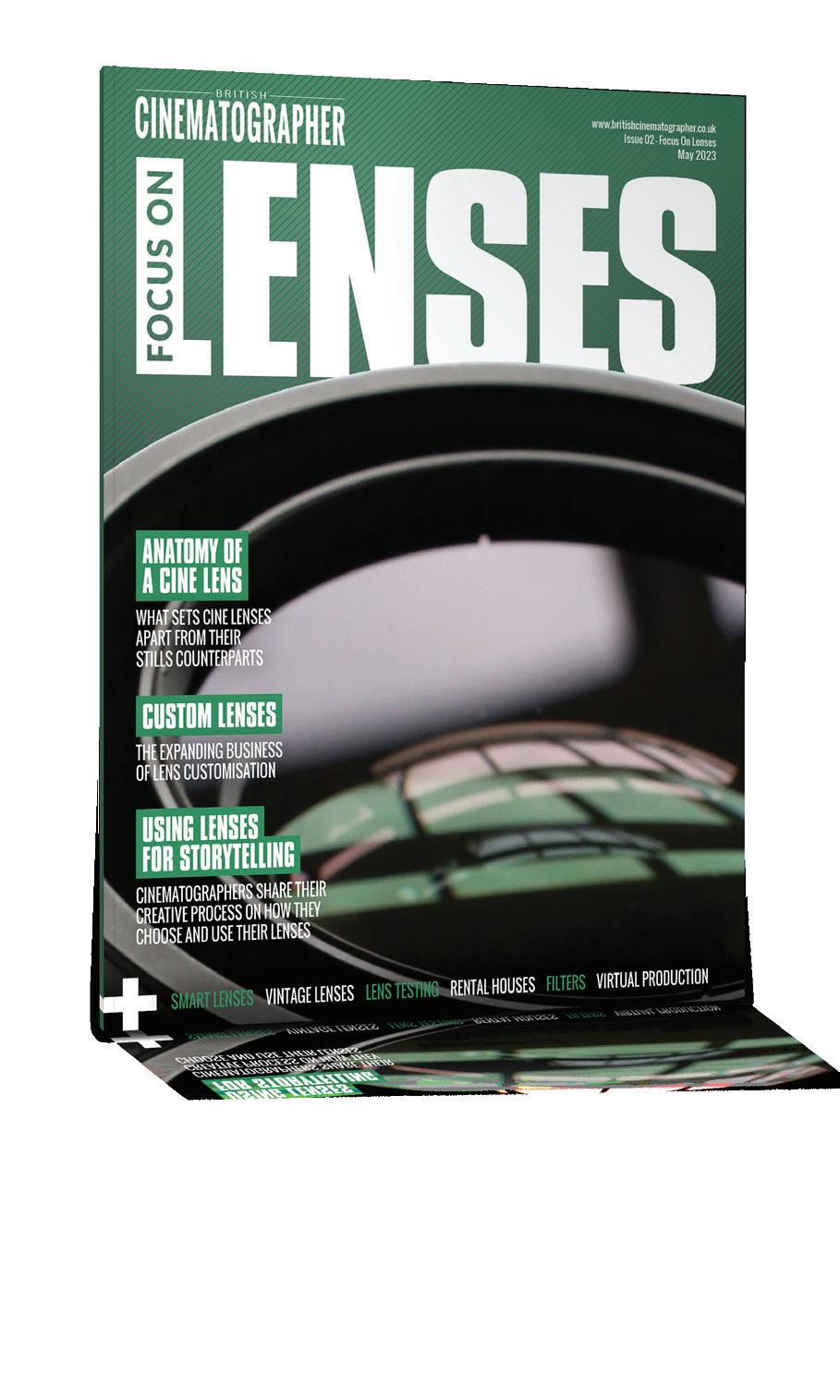
Our Focus On series is your expert-led companion to the industry’s hottest topics. So far, we’ve dived into the world of virtual production, zoomed in on all things lenses, and now explored the power of lighting.
Each carefully curated guide is packed full of knowledge from those working at the top of their field, complemented by beautiful visuals and handy diagrams. Whether you’re taking your first steps on set or reaching the heights of your career, there’s a Focus On for you.
Next up, we’re revisiting the virtual realm with our Focus On: Virtual Production II. You’ll find the latest insight and innovations from this ever-growing sector, hear from top virtual production experts, and go behind the scenes on productions which have taken the technology to the next level.
• Share your latest work with our global community.
• Showcase your new products or innovations.
To get in touch about appearing in our second virtual production guide, please contact: Lizzy Sutherst: lizzy@britishcinematographer.co.uk or Krishan Parmar: krishan@britishcinematographer.co.uk
Scan the QR codes to explore two of our previous Focus On guides; Focus On: Virtual Production and Focus On: Lenses

